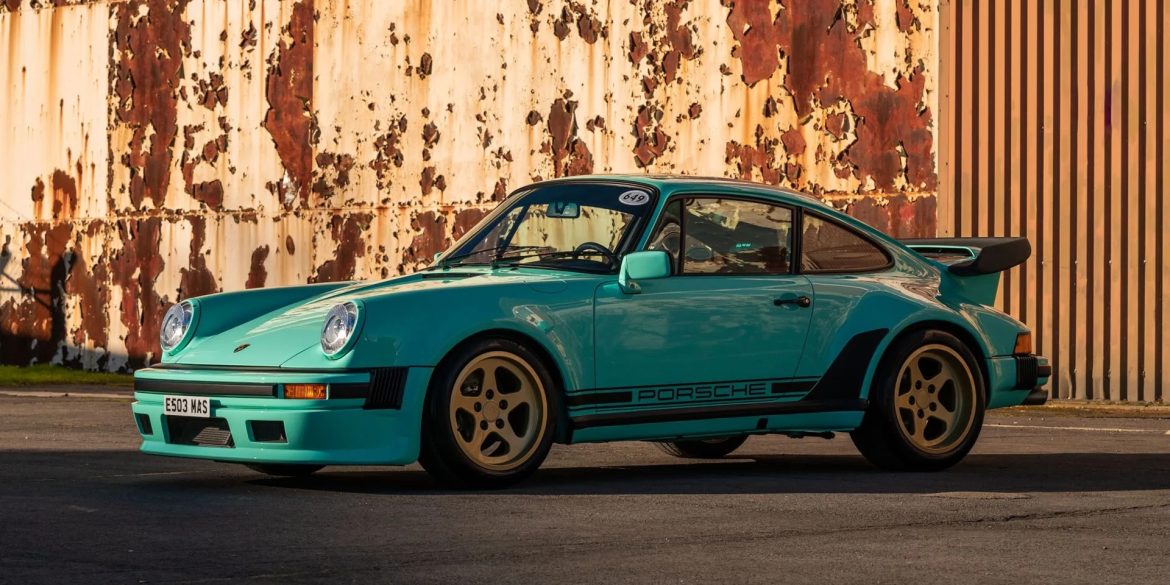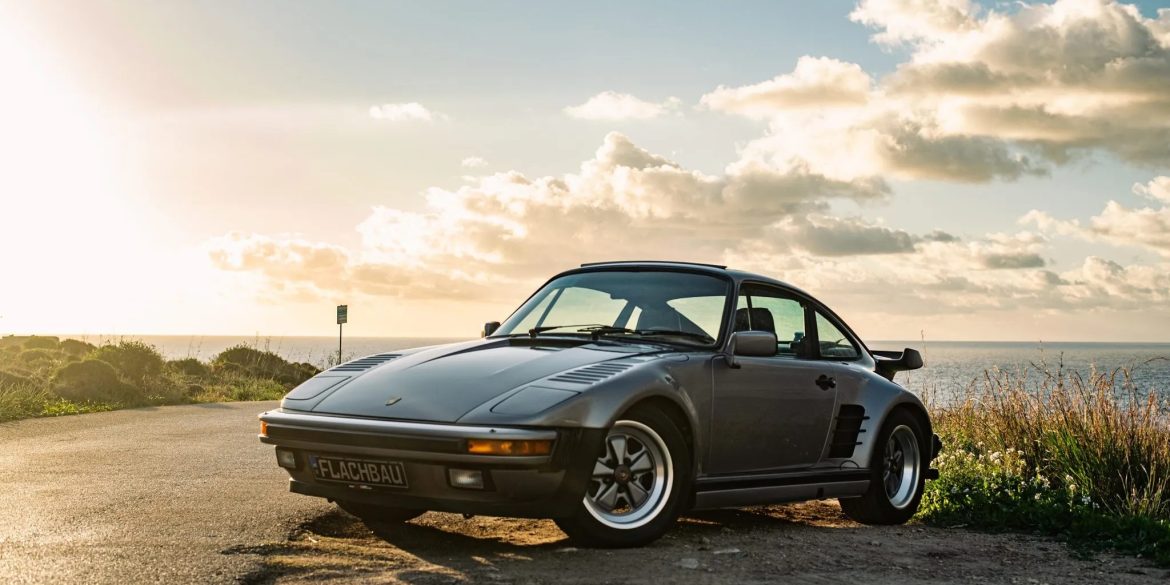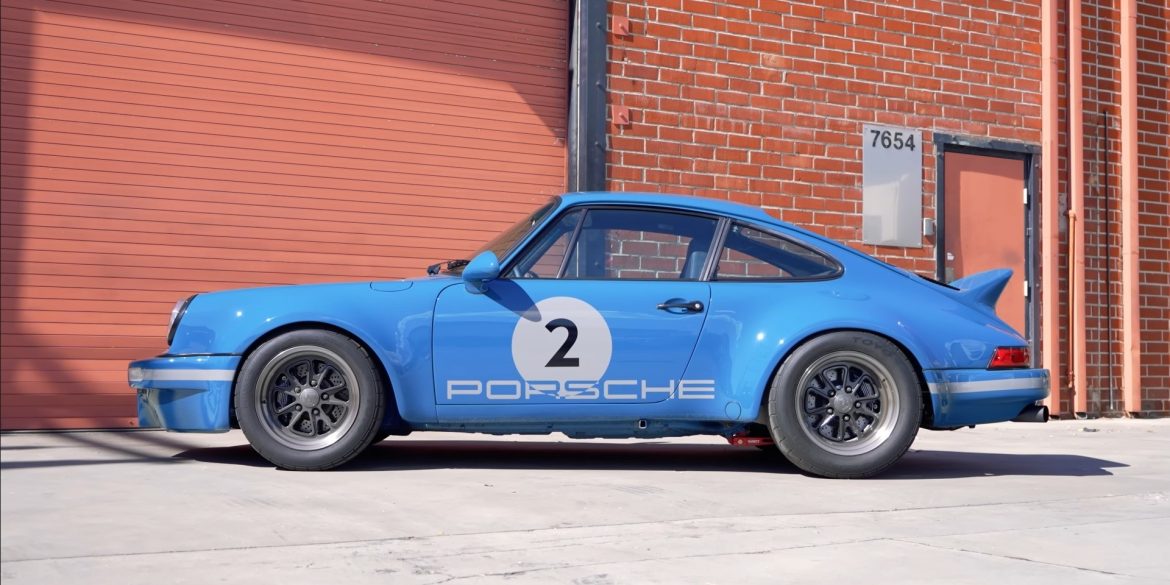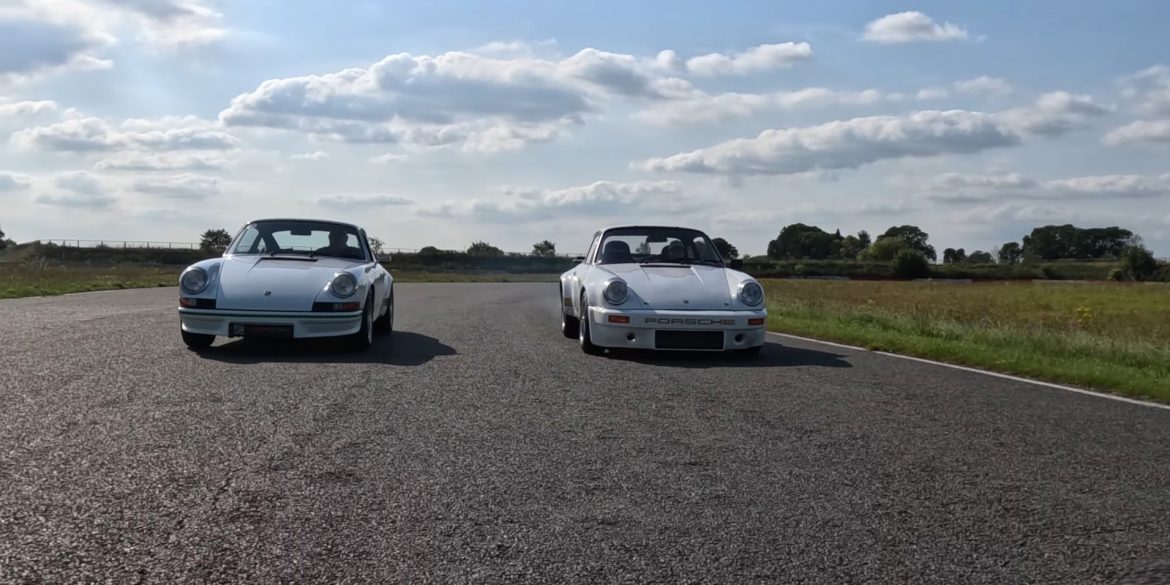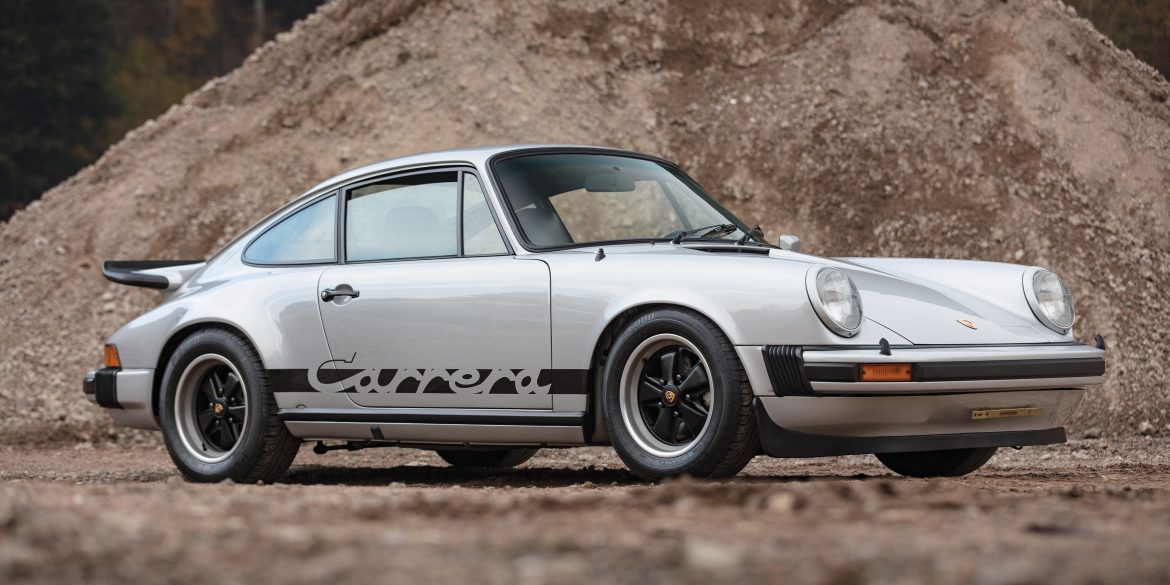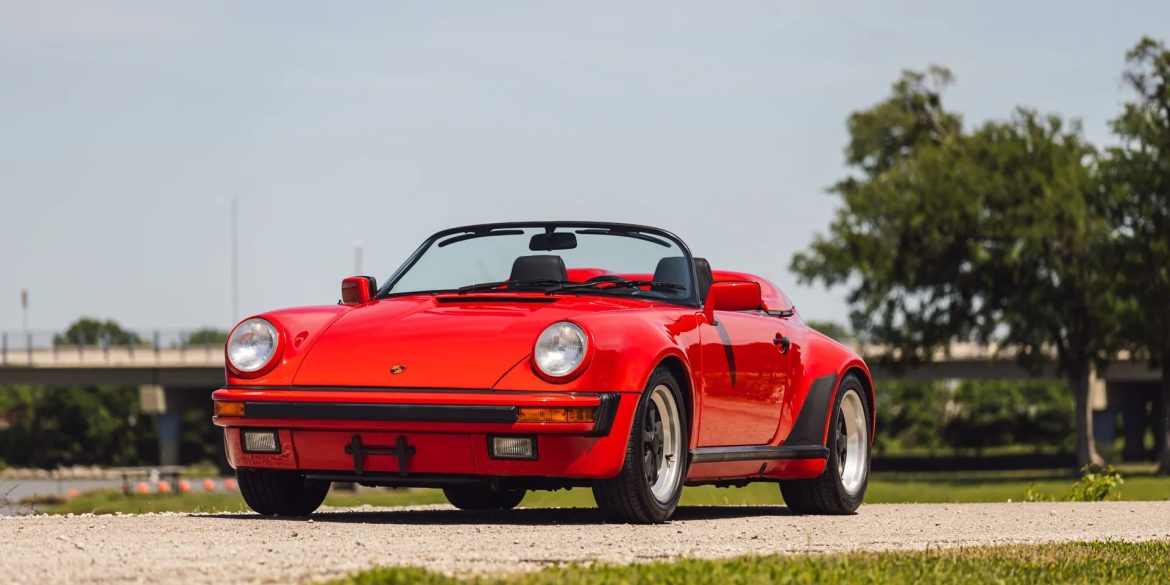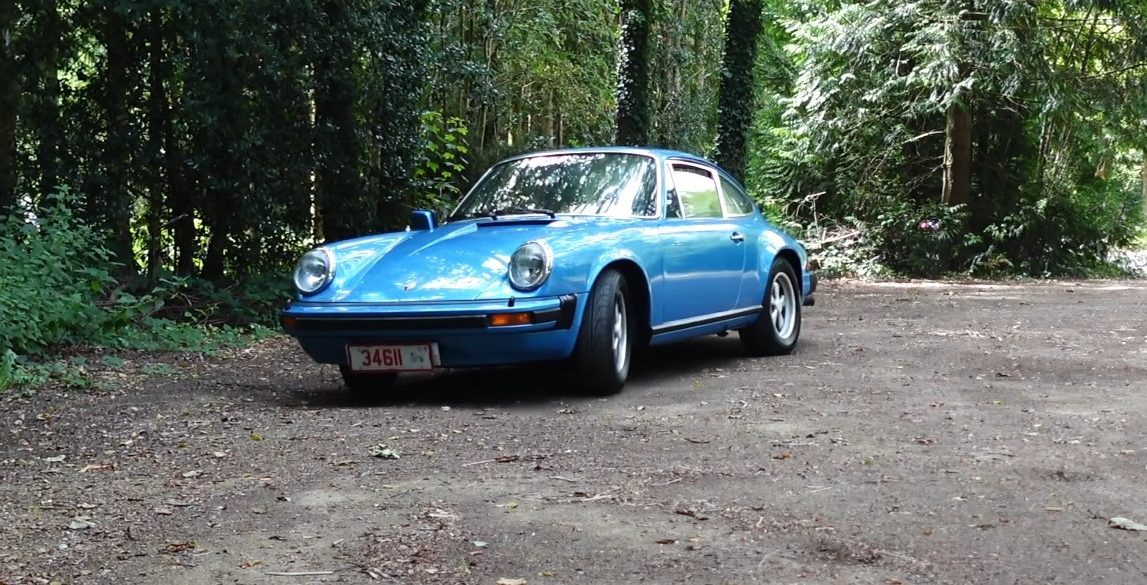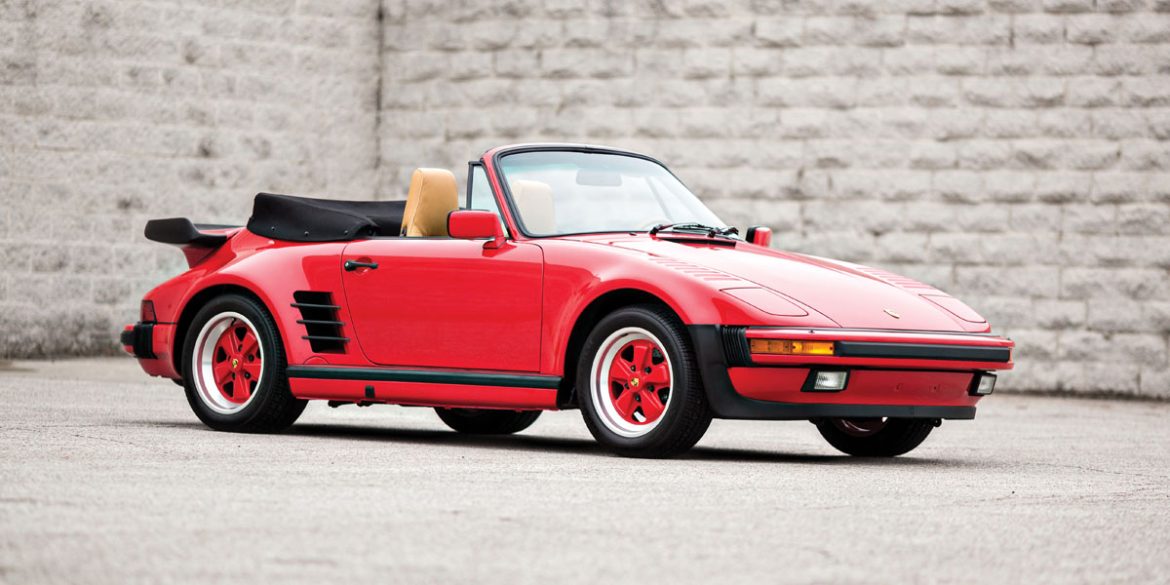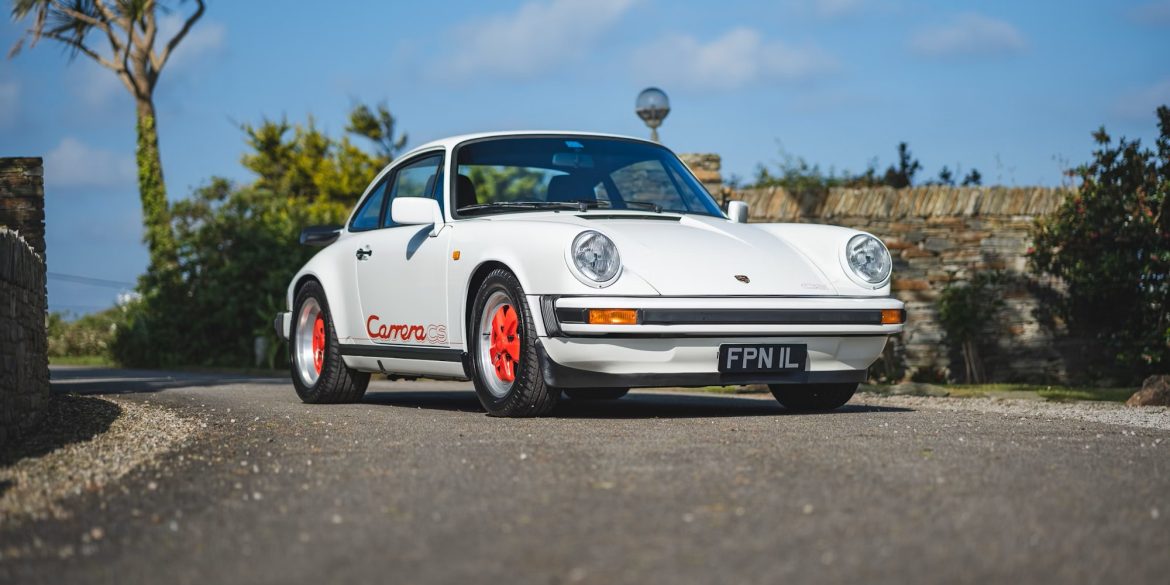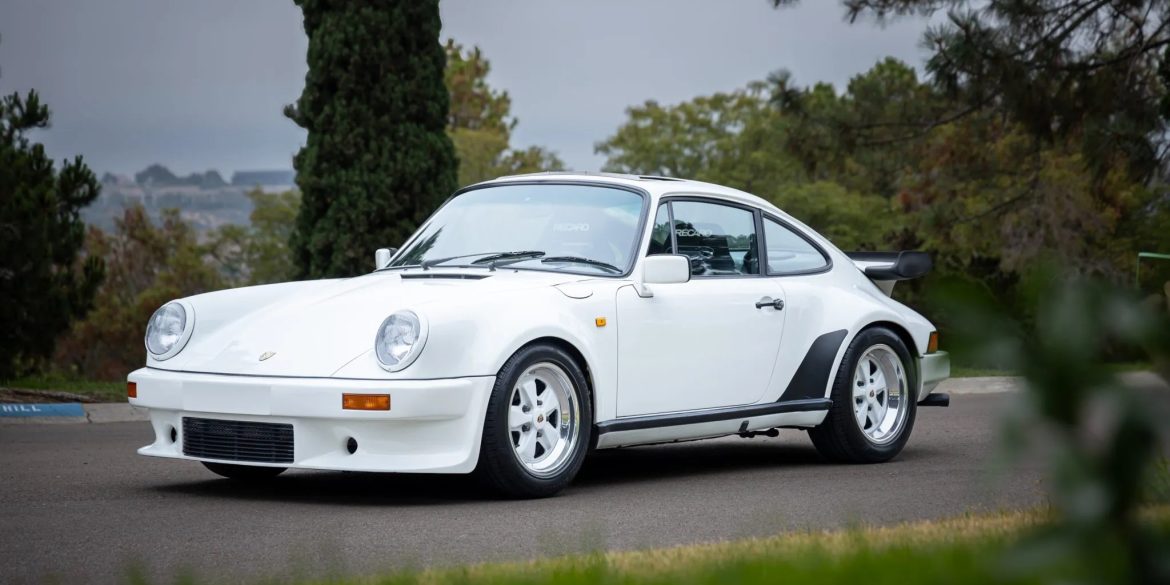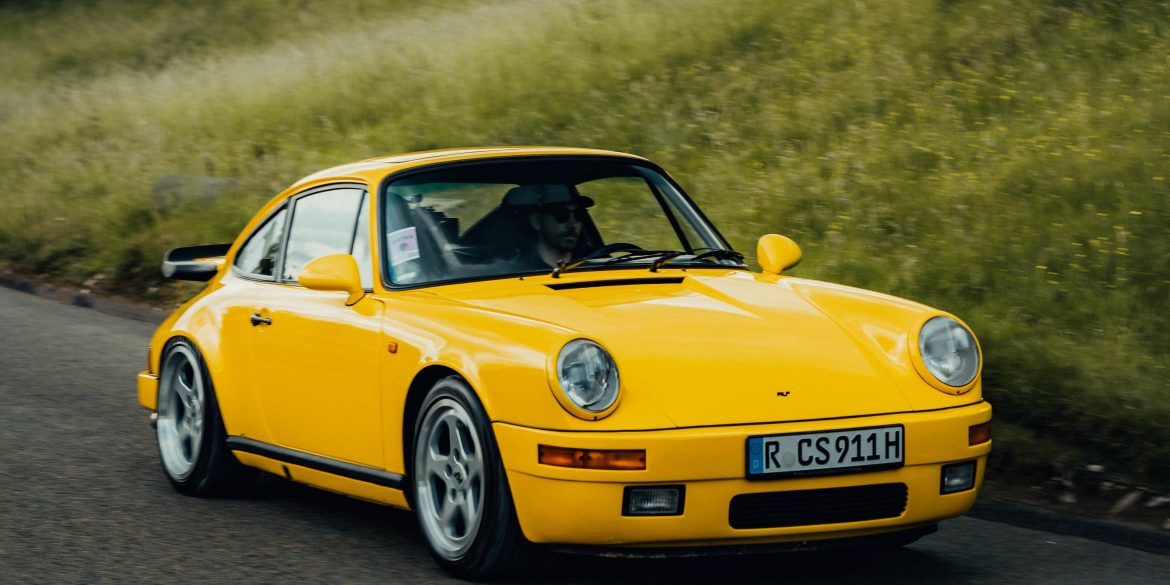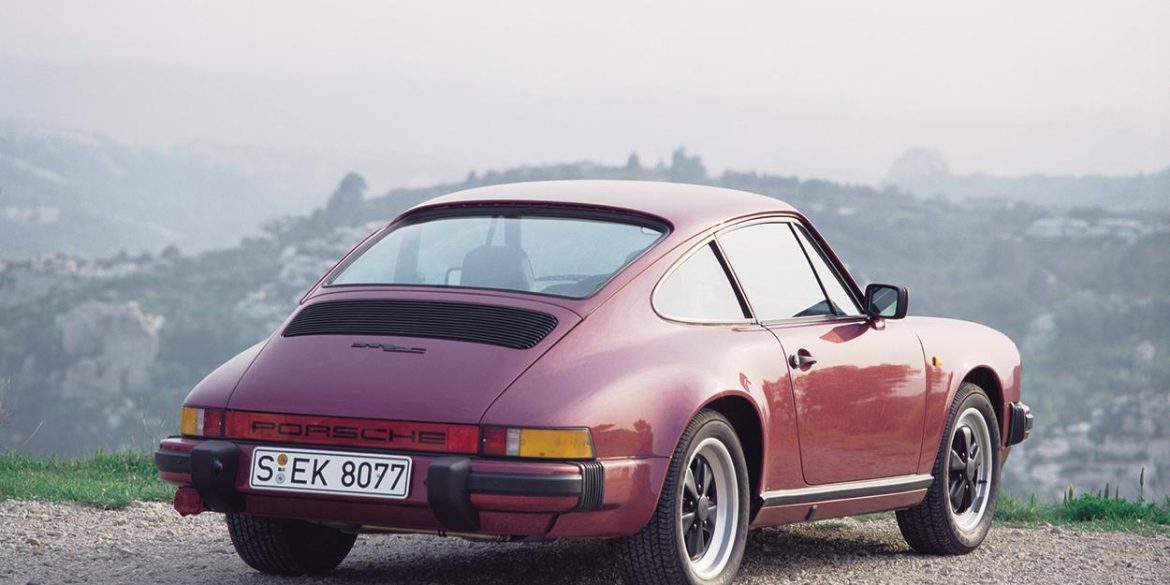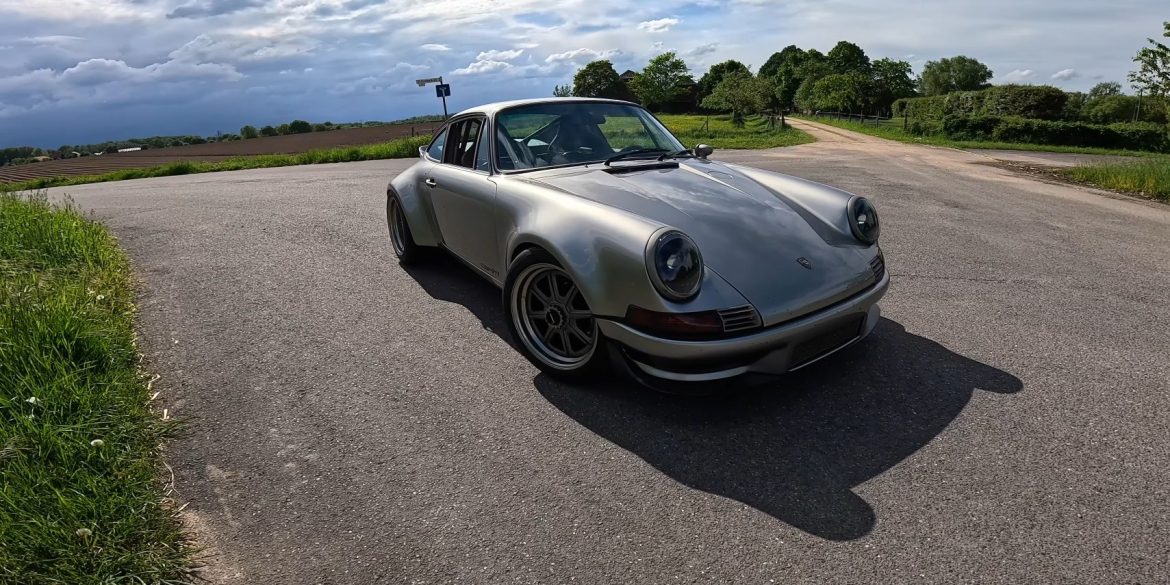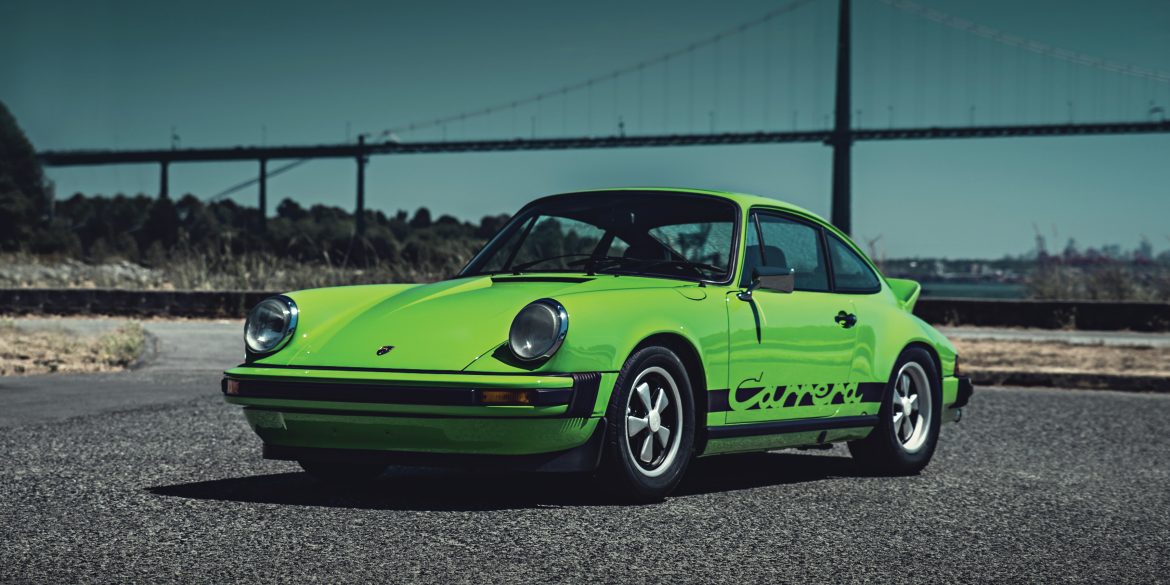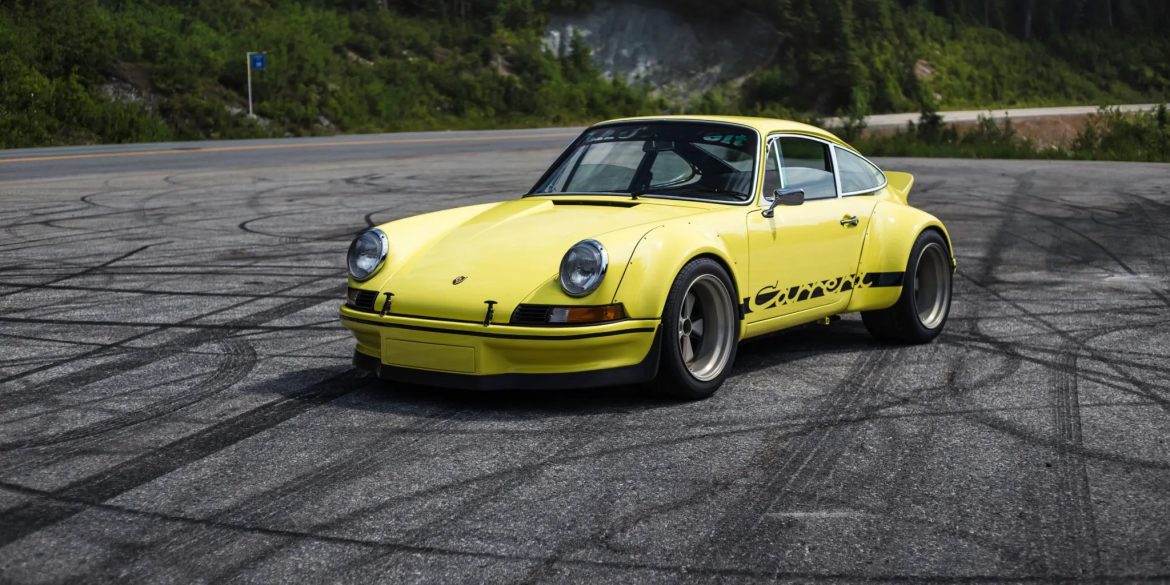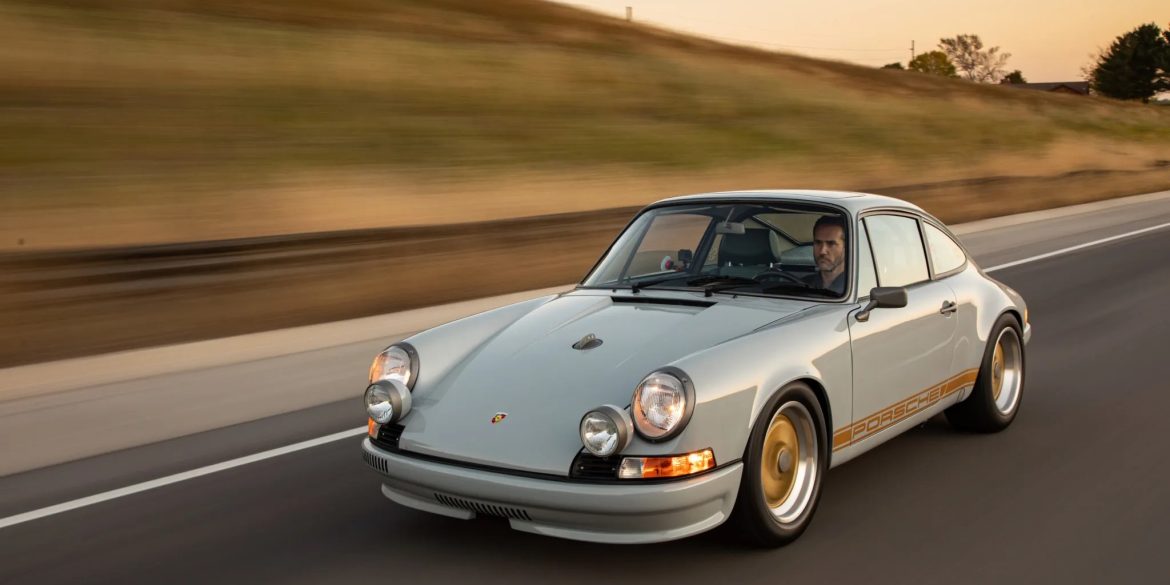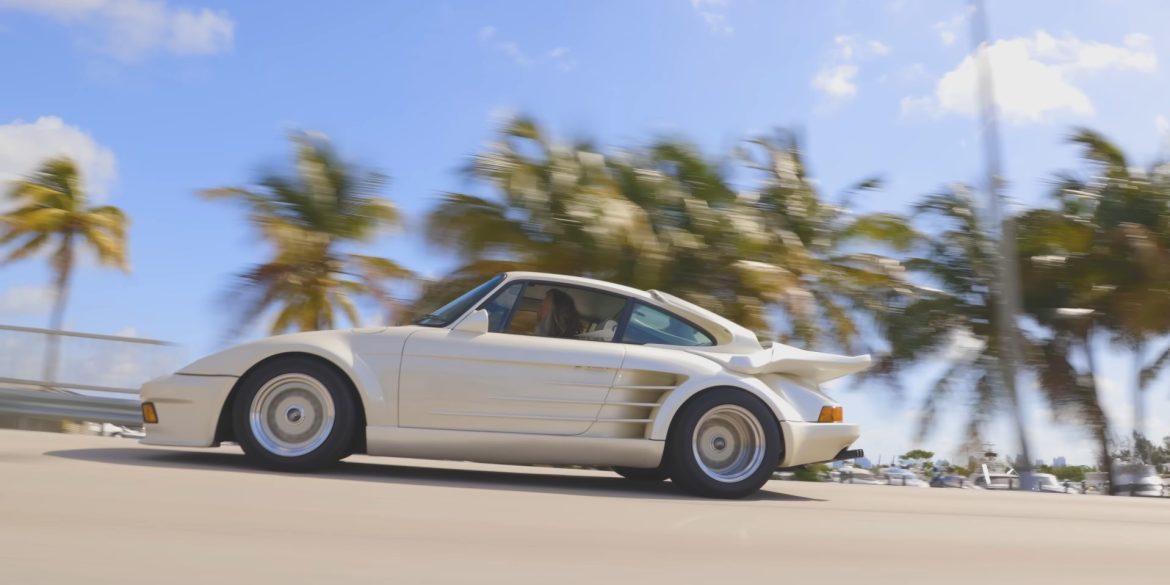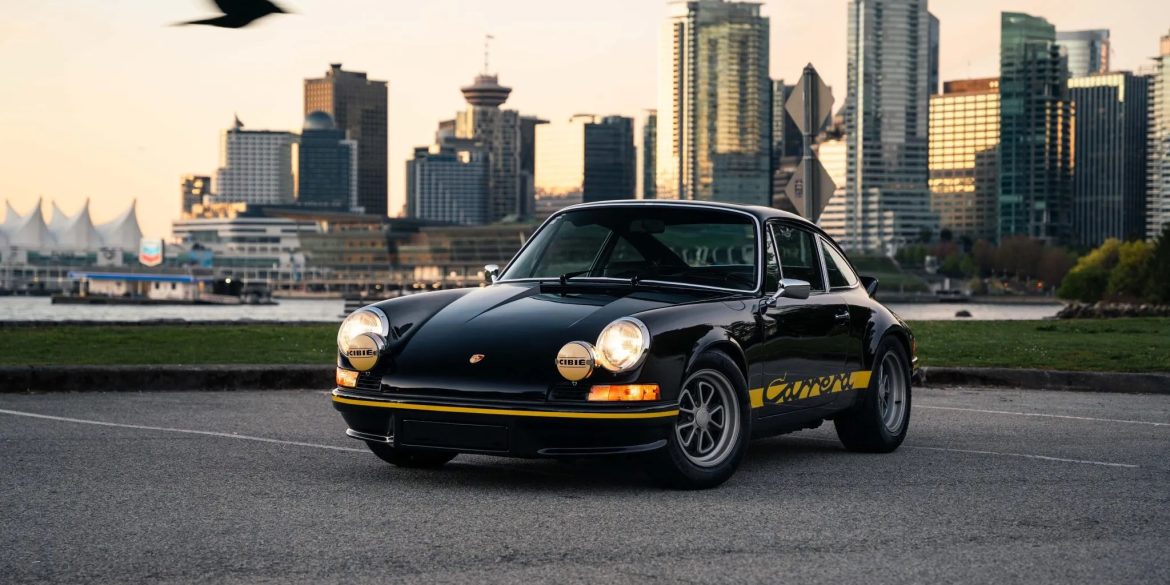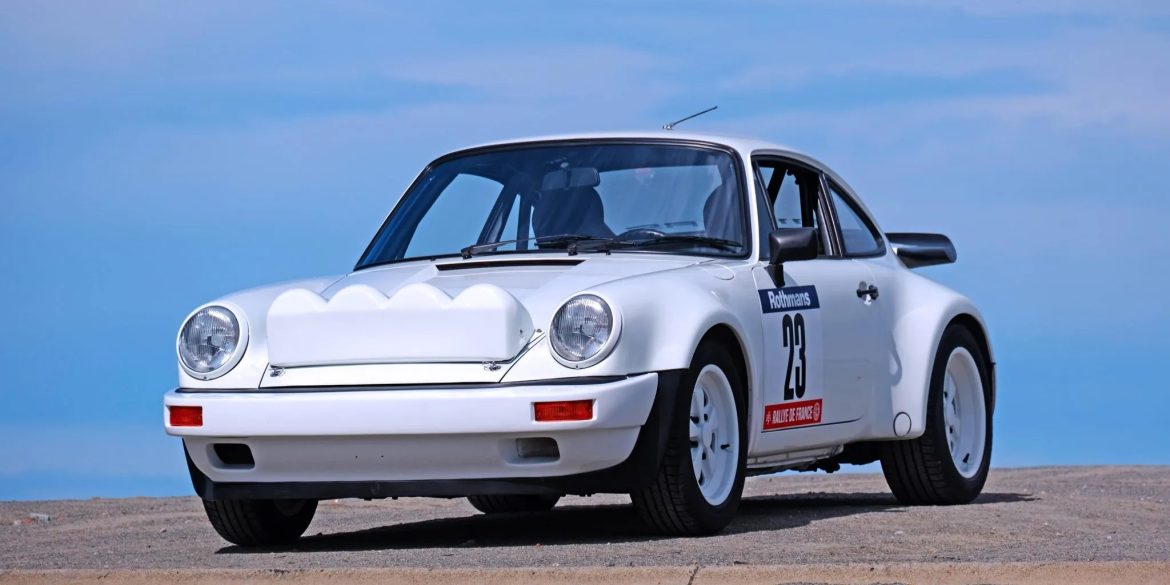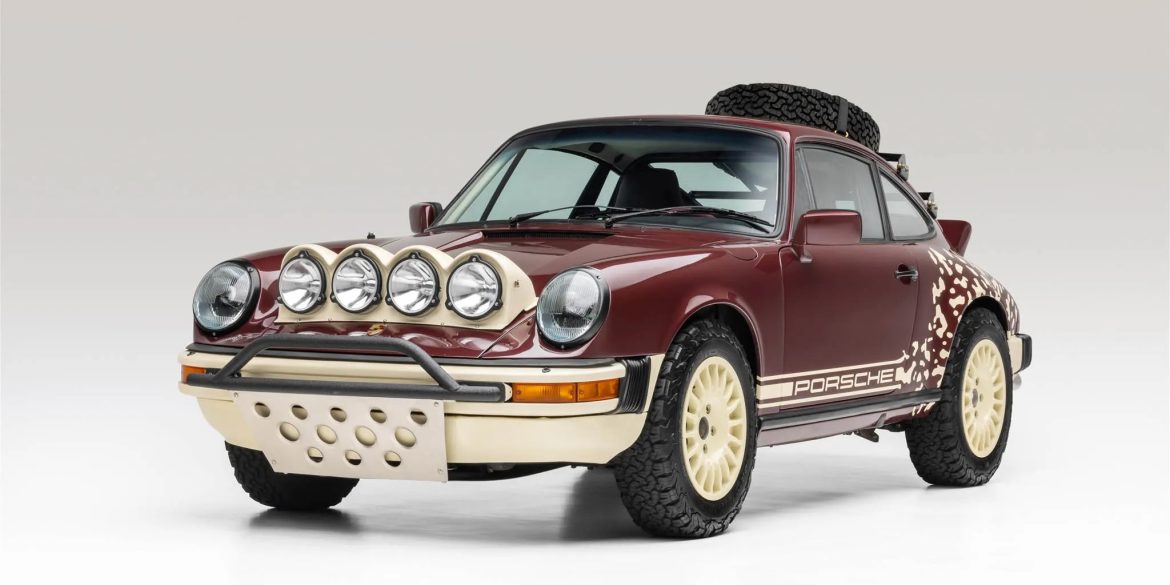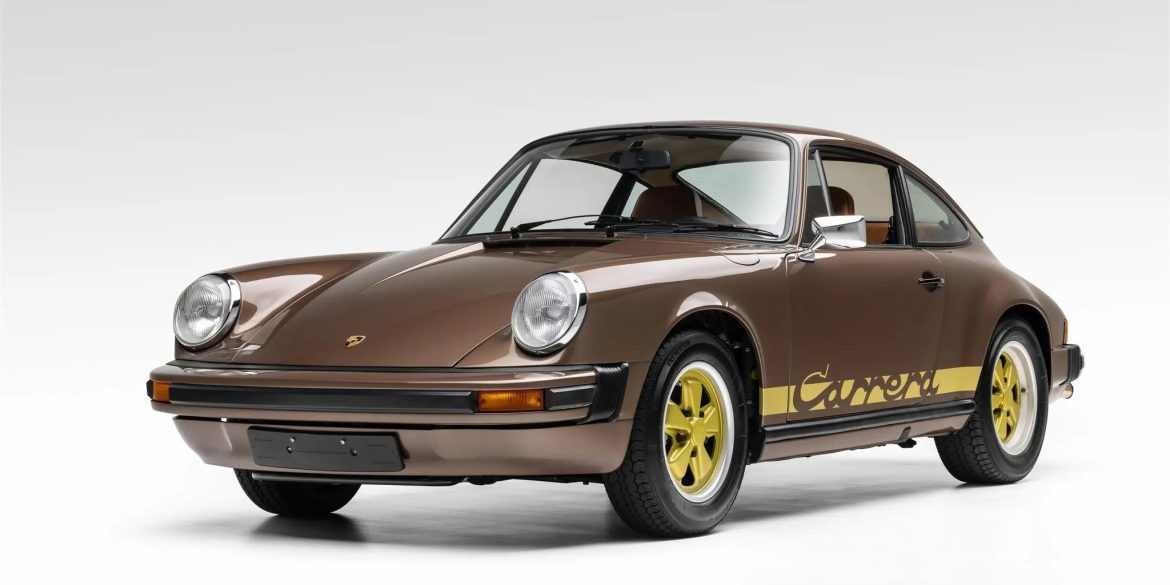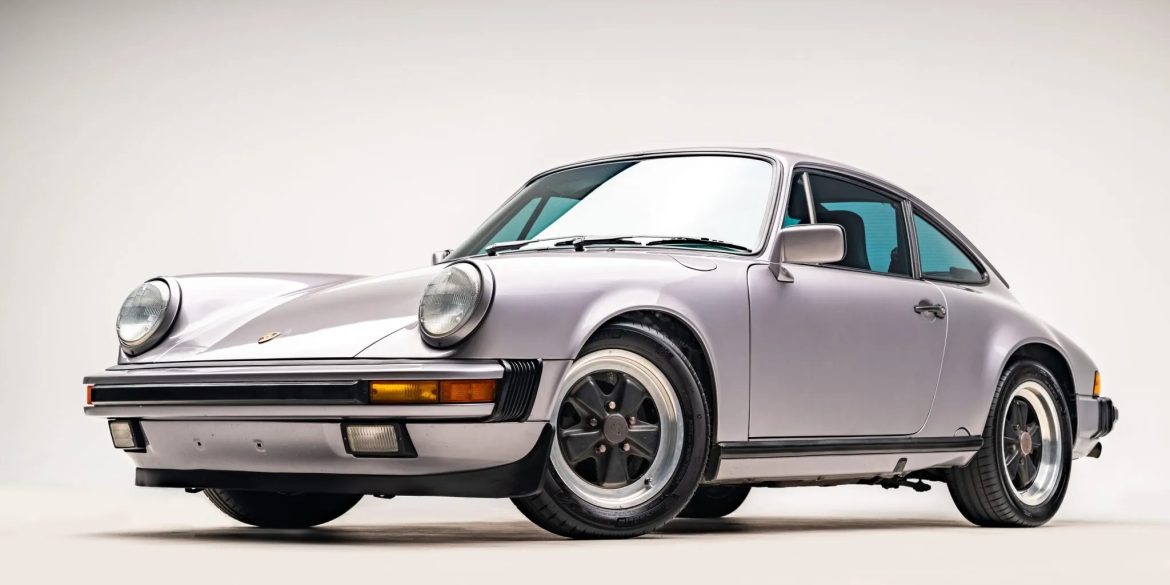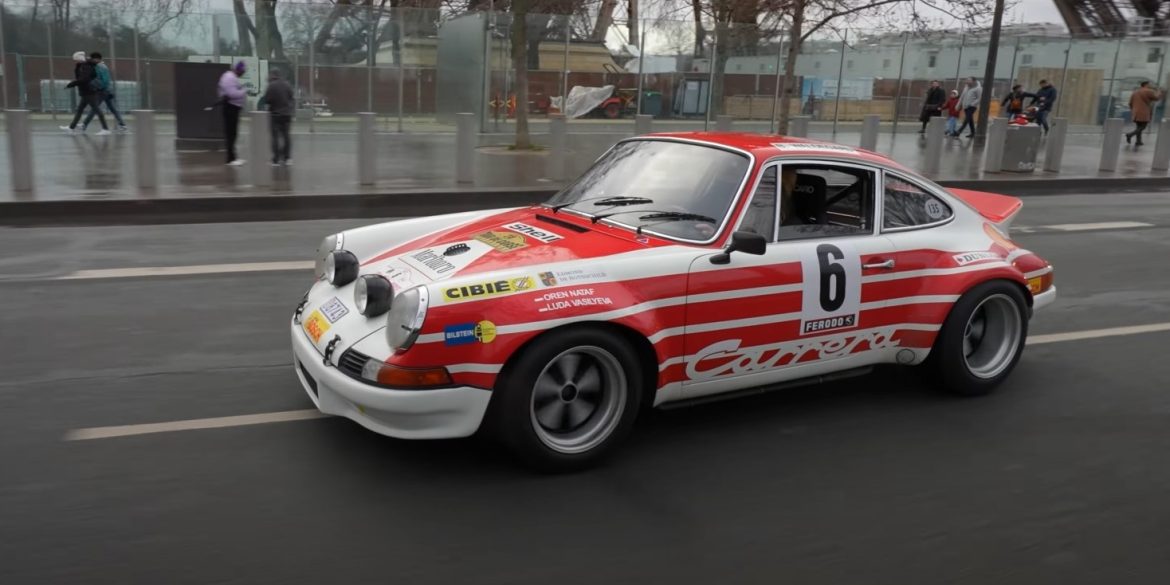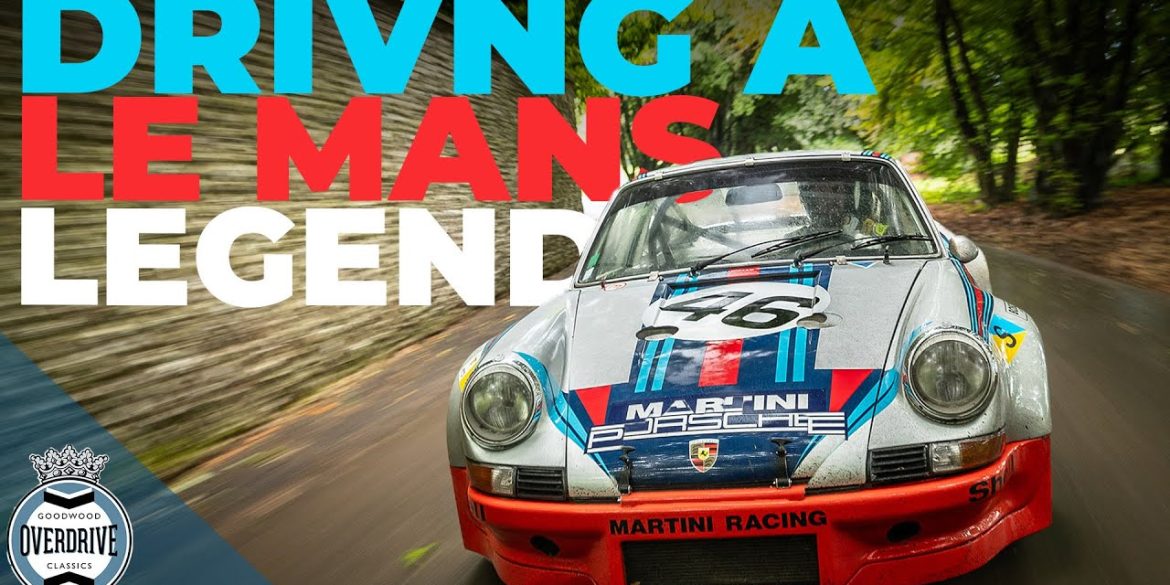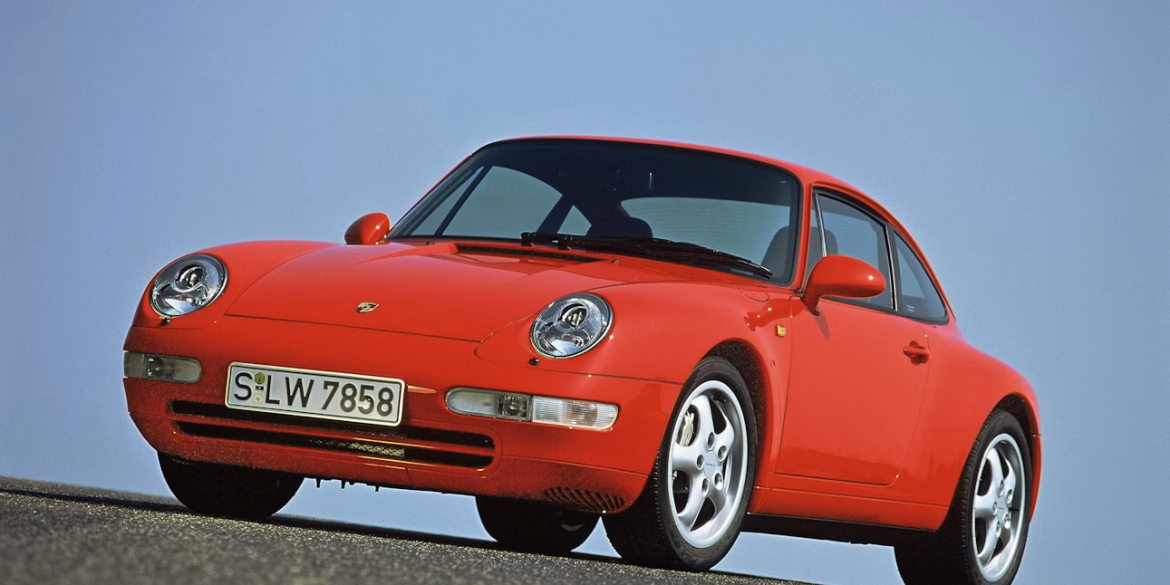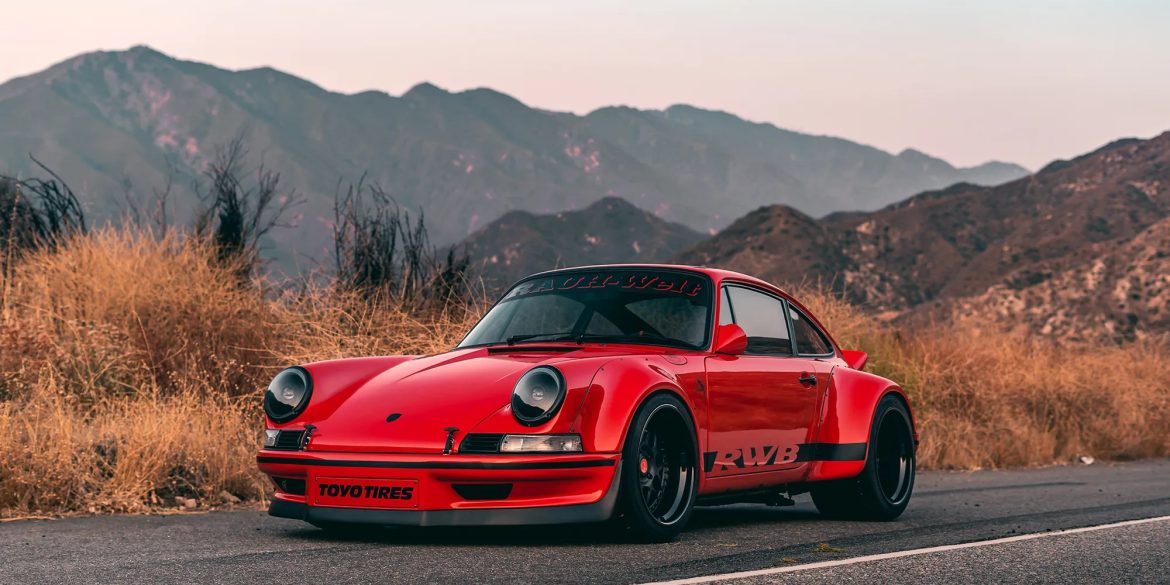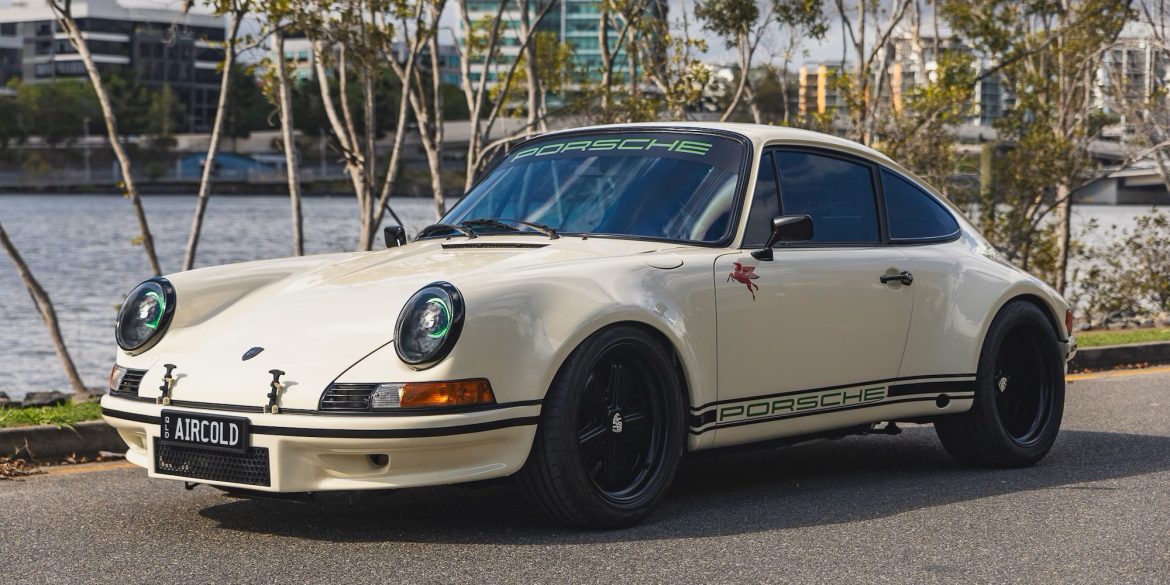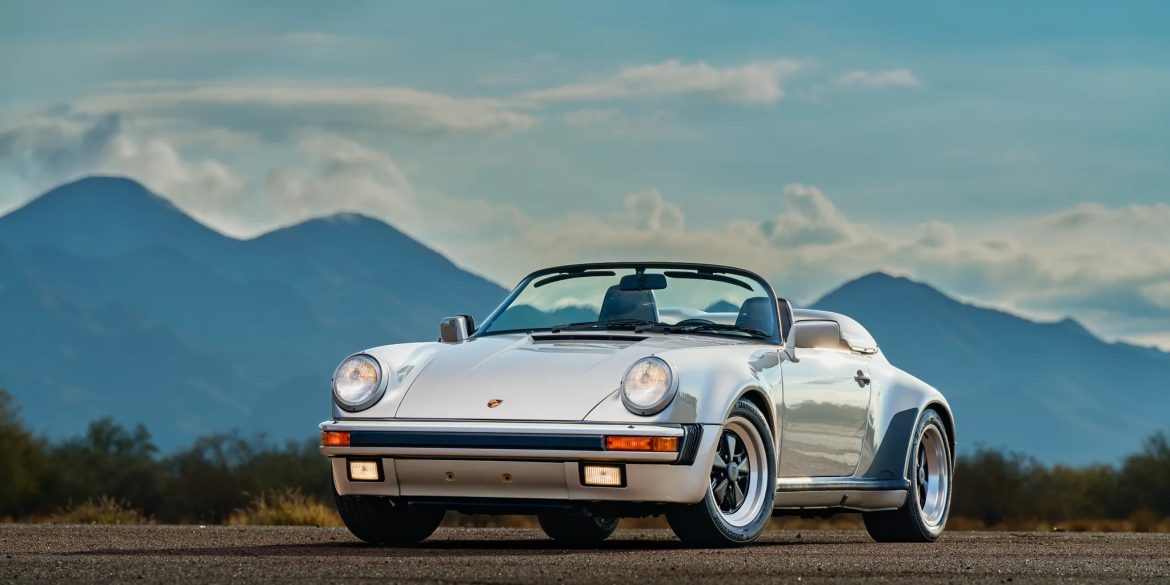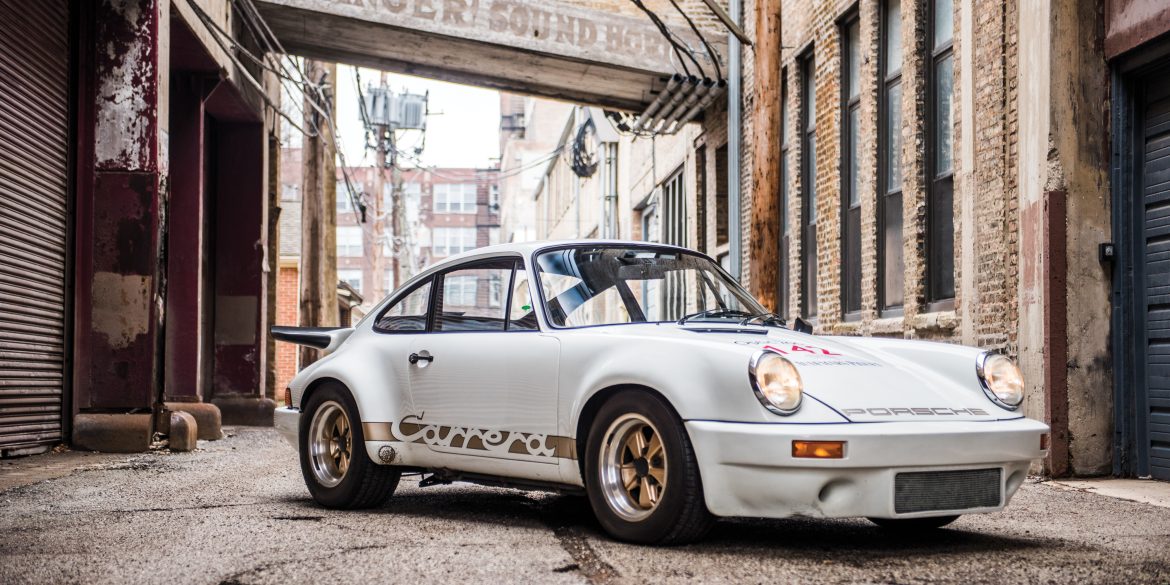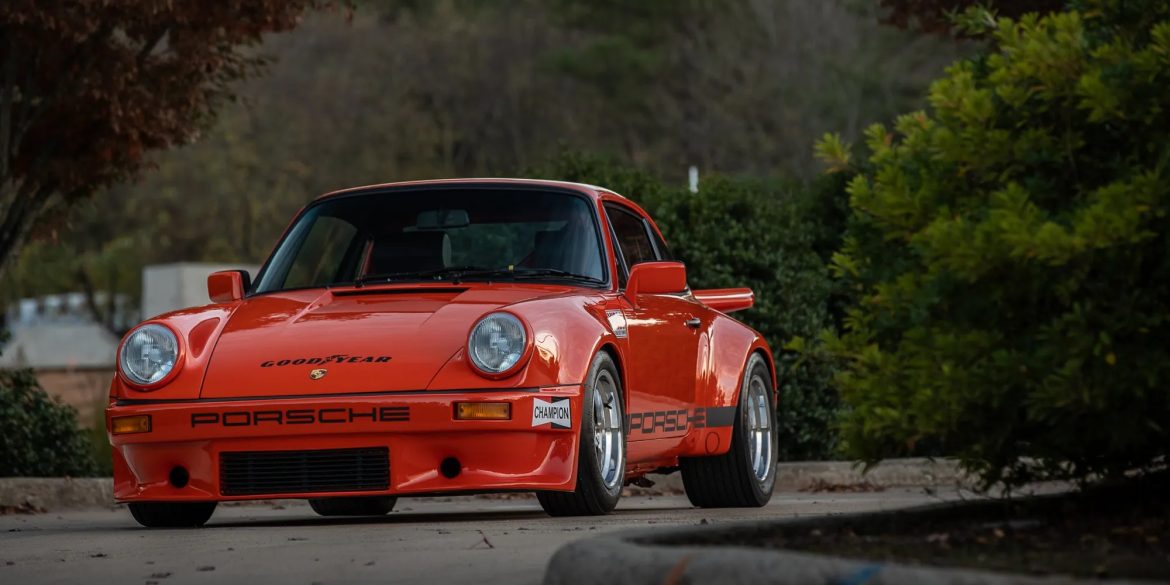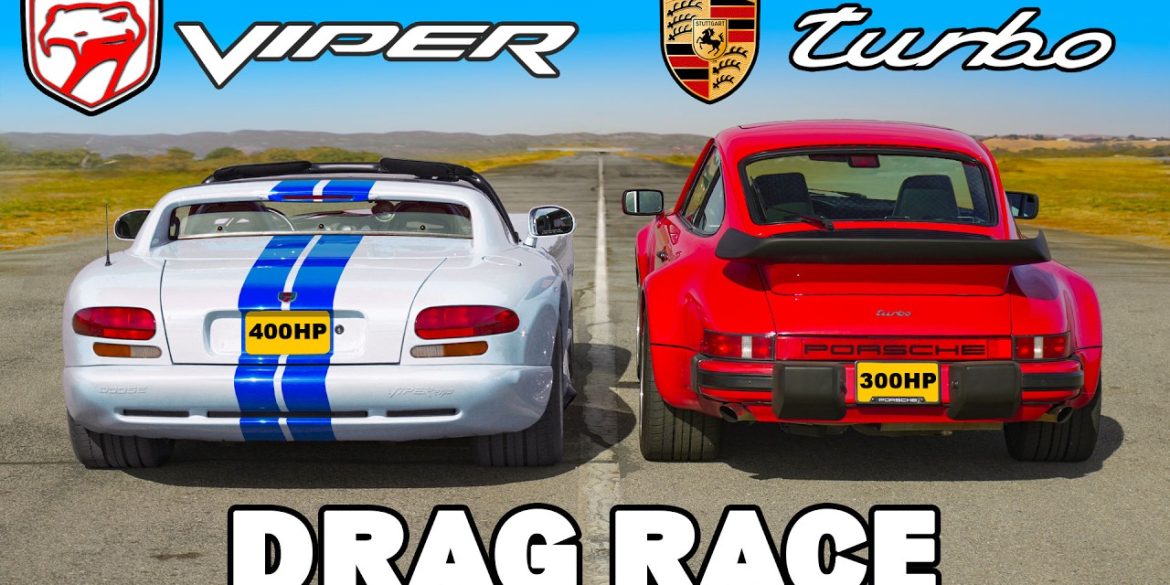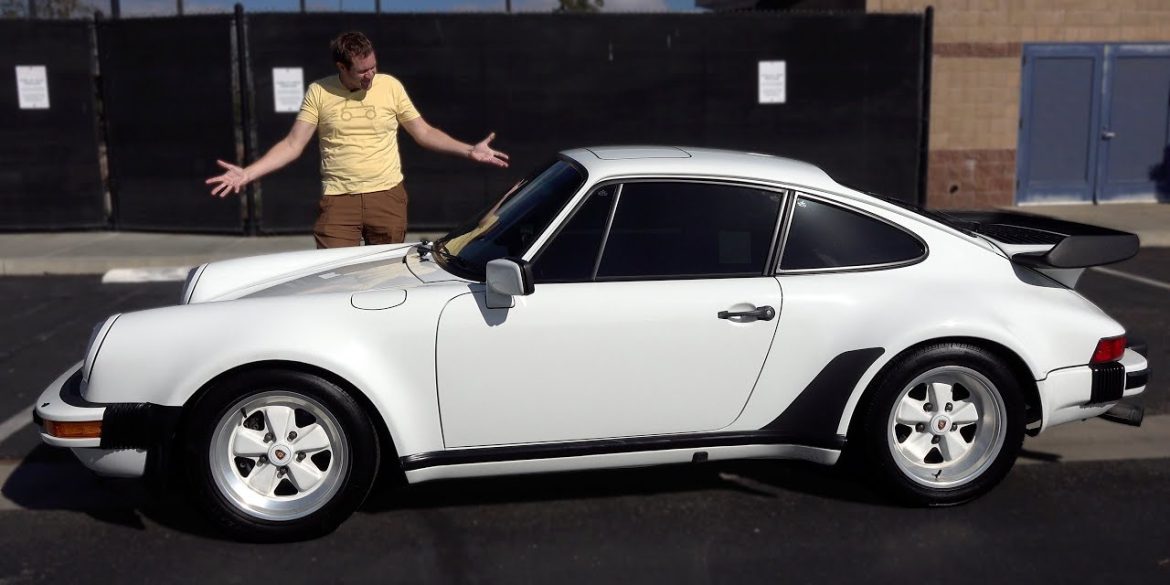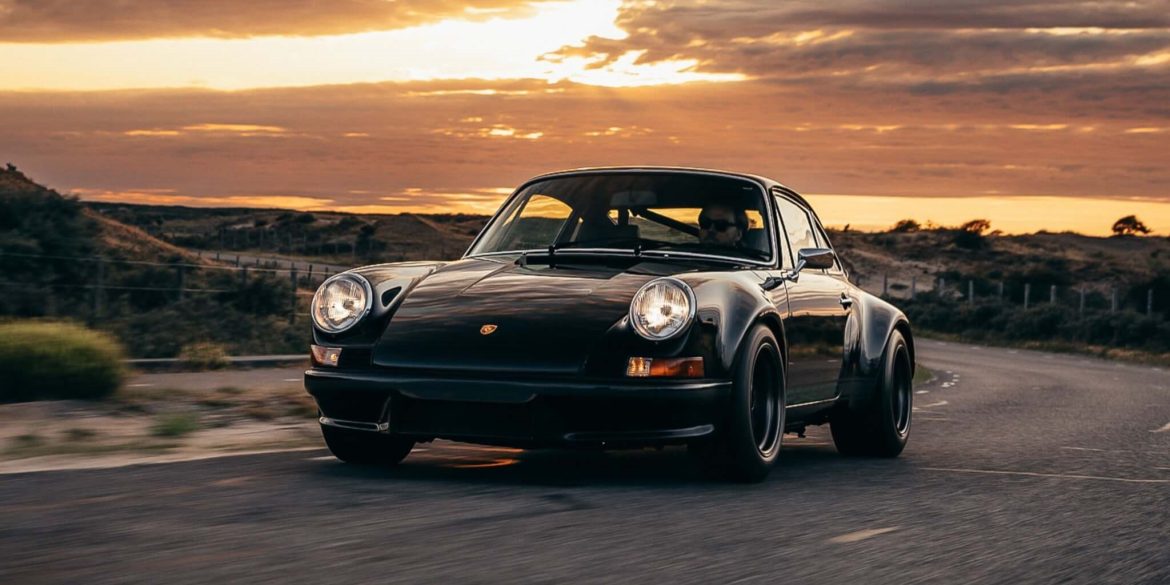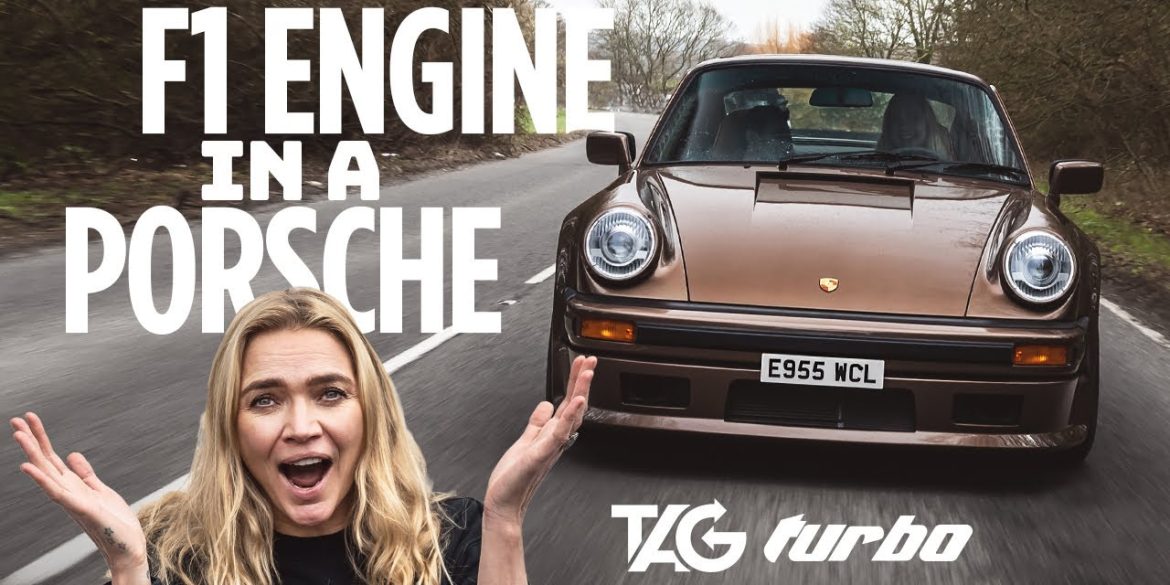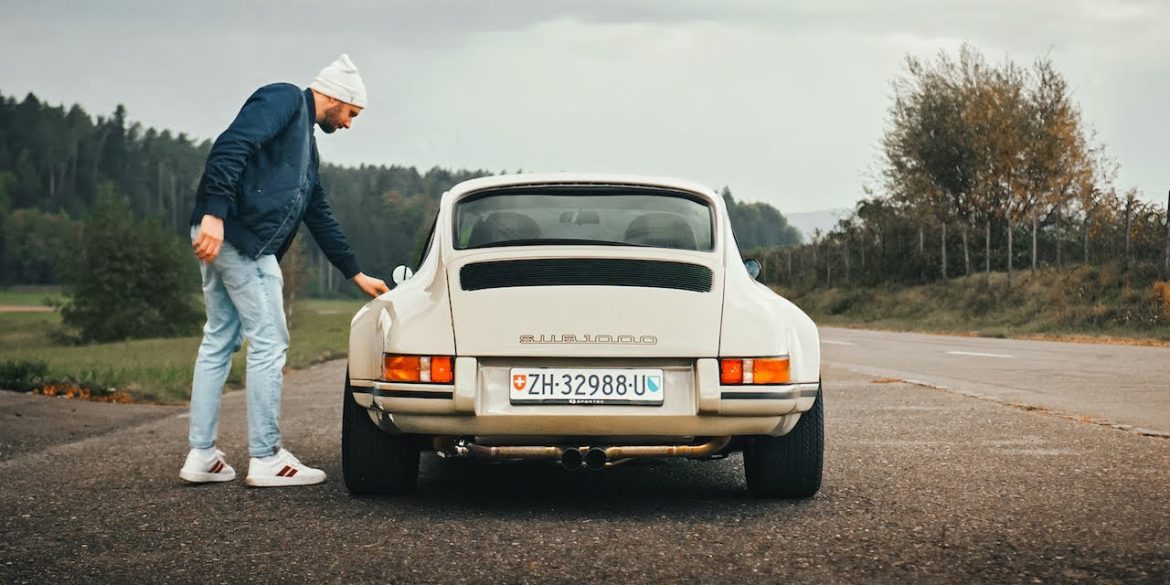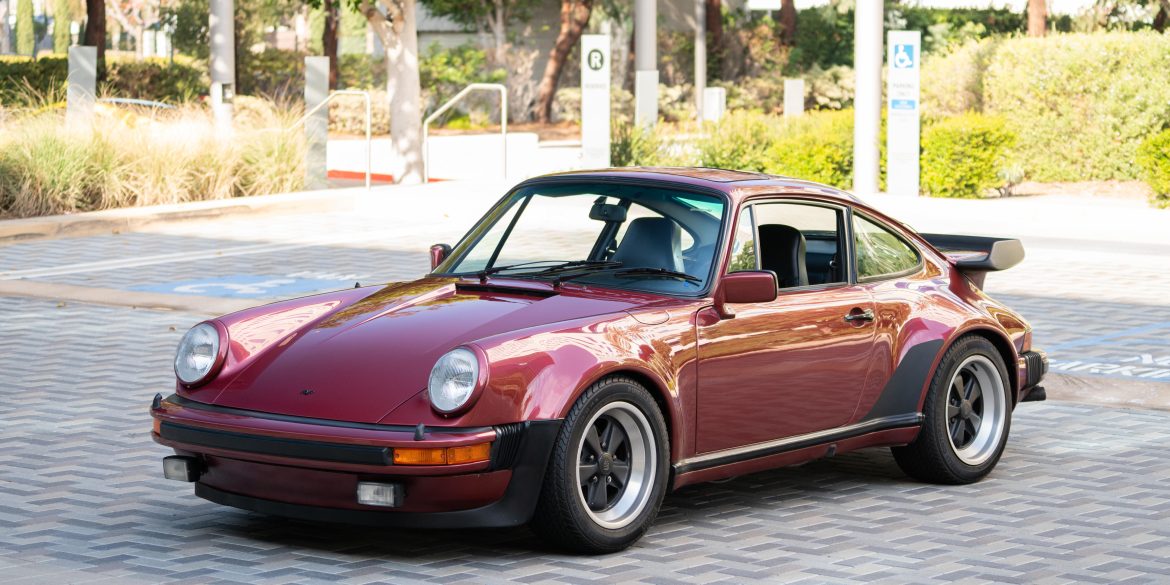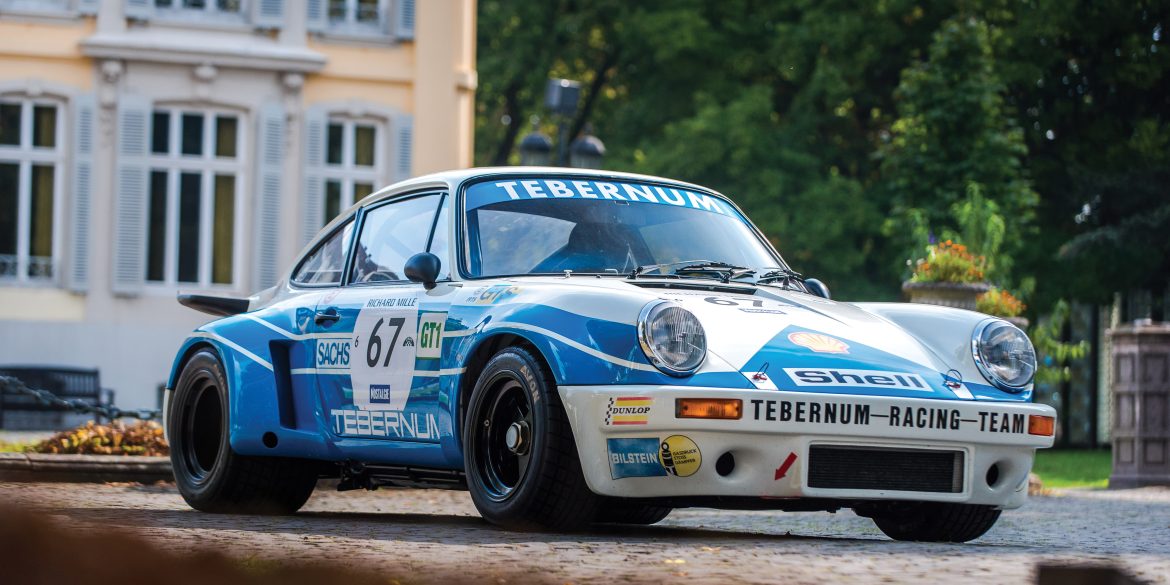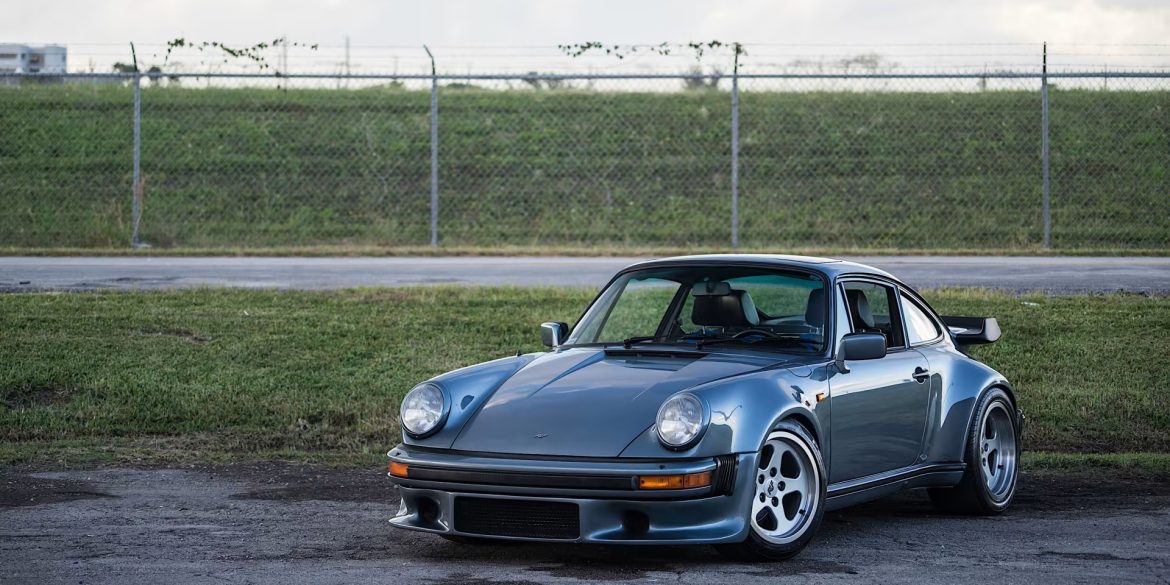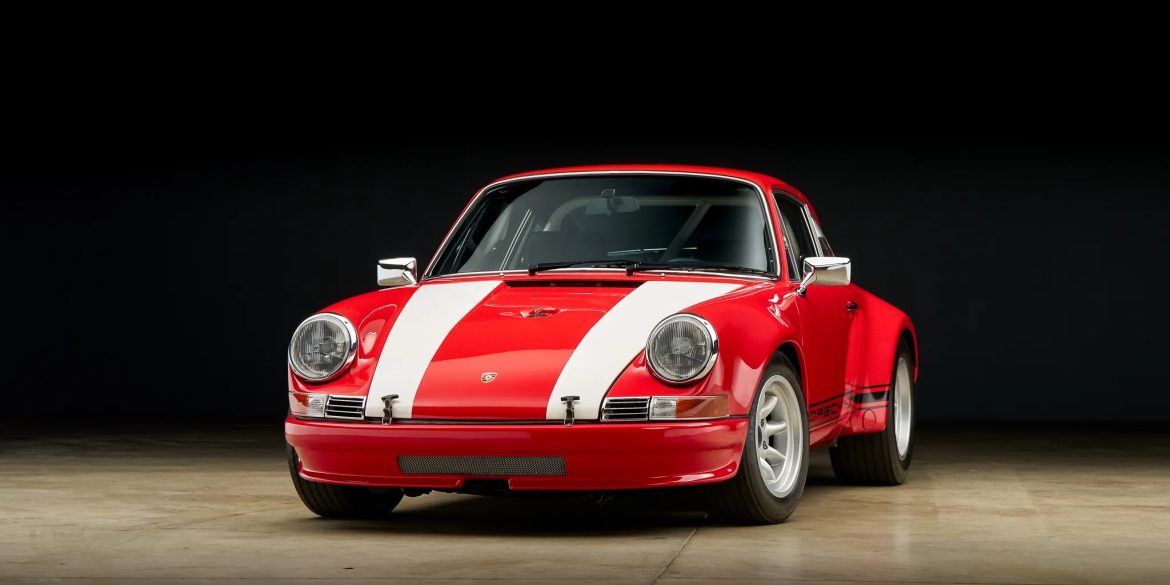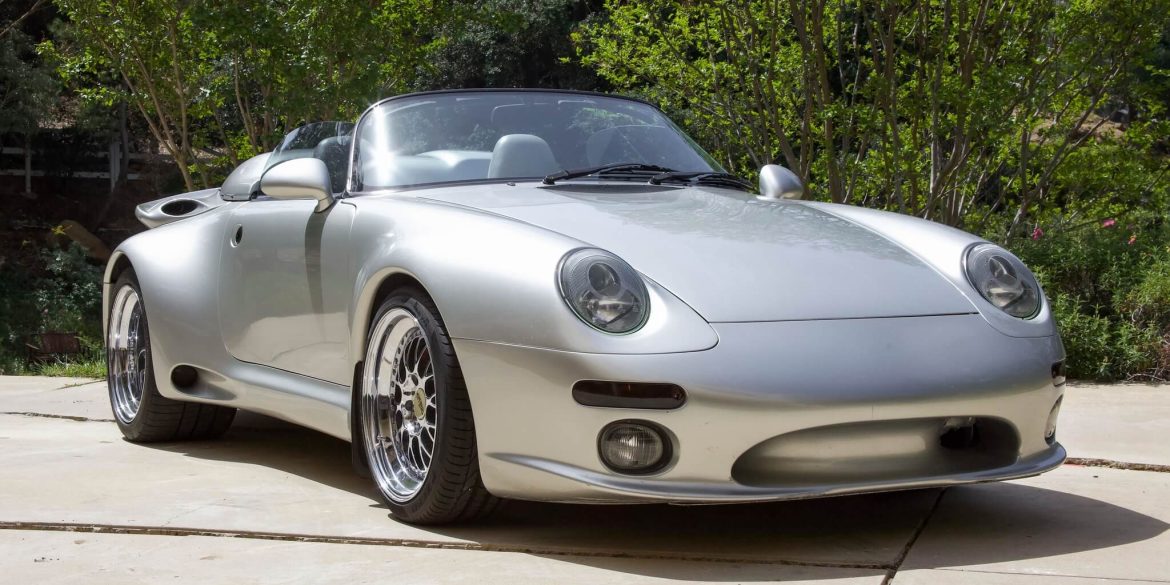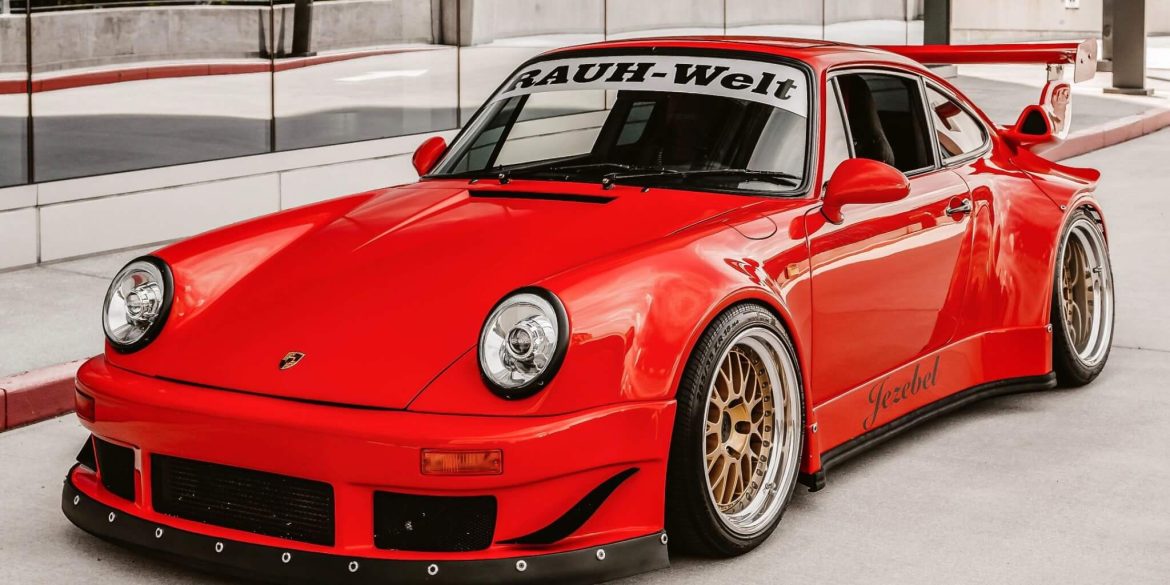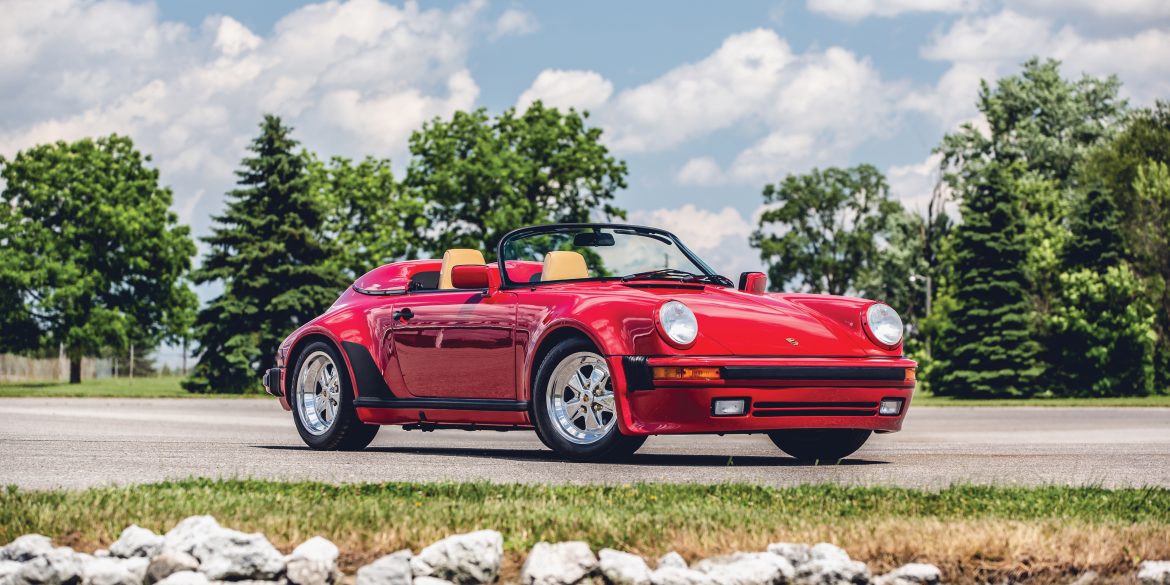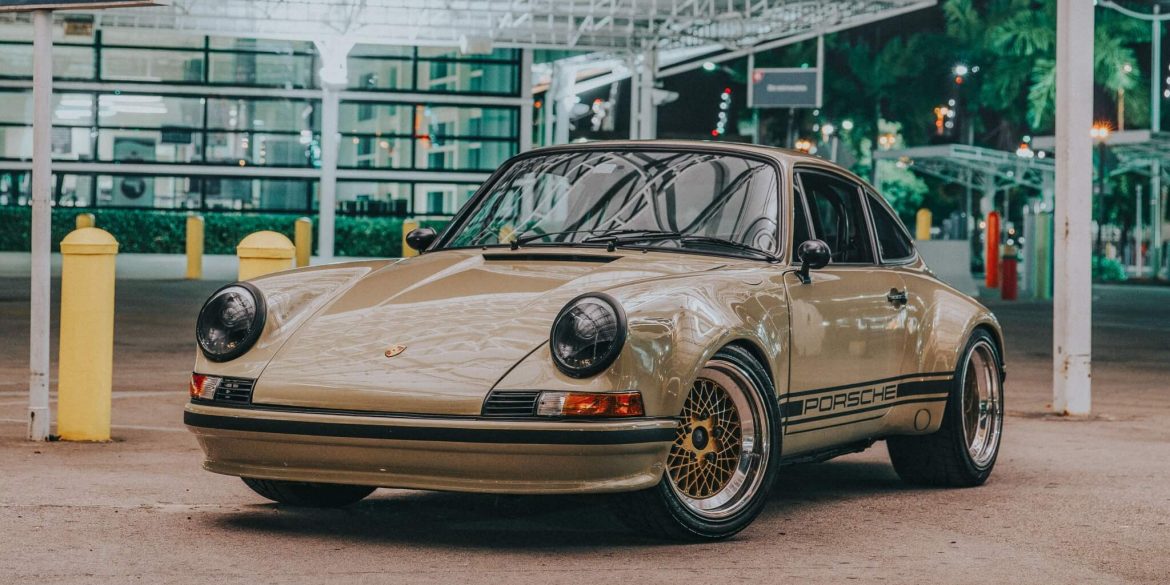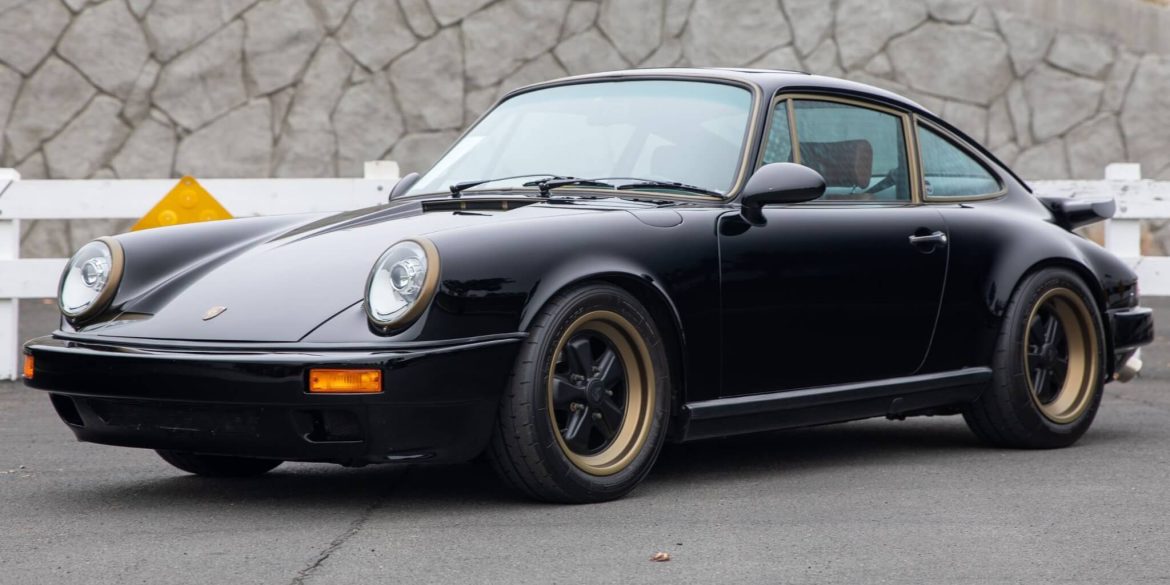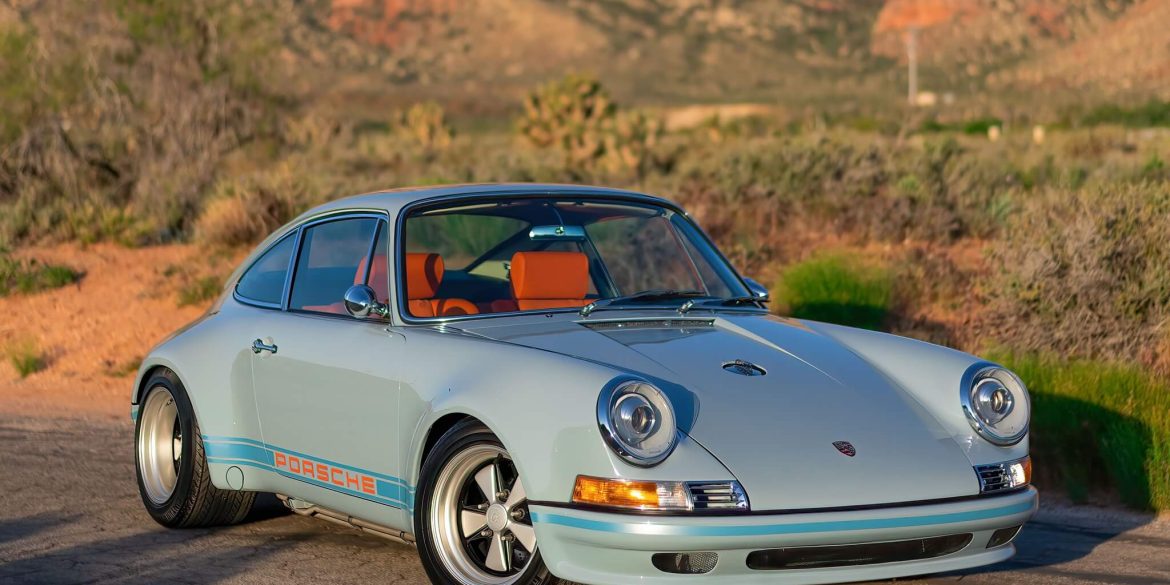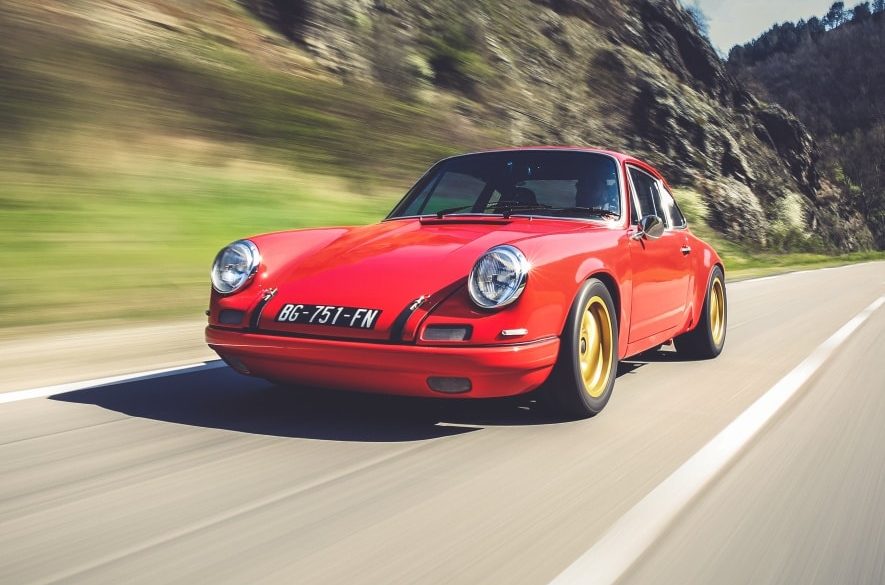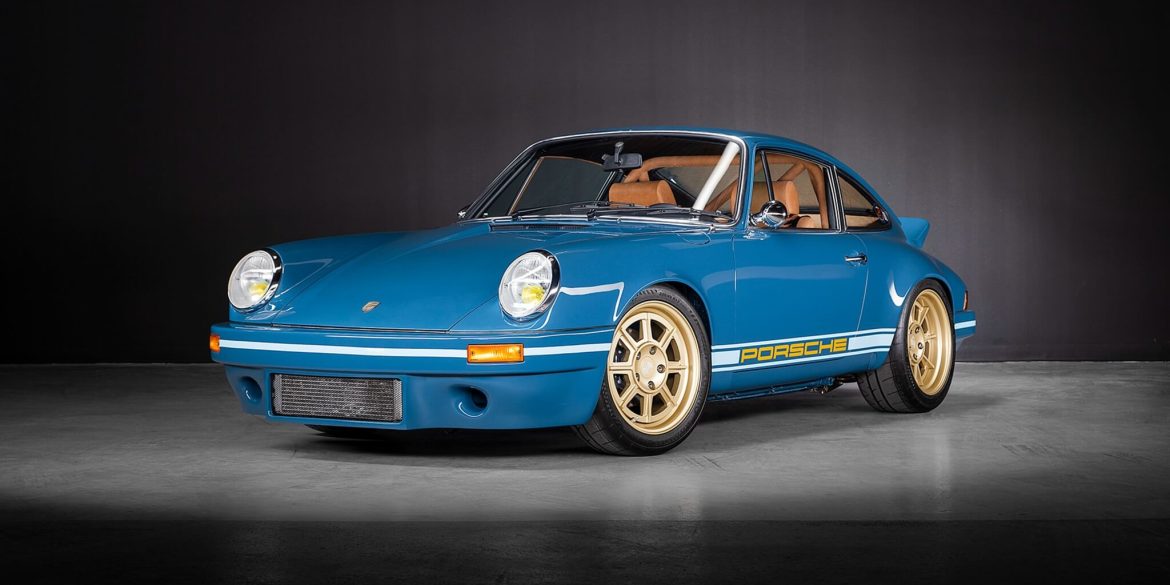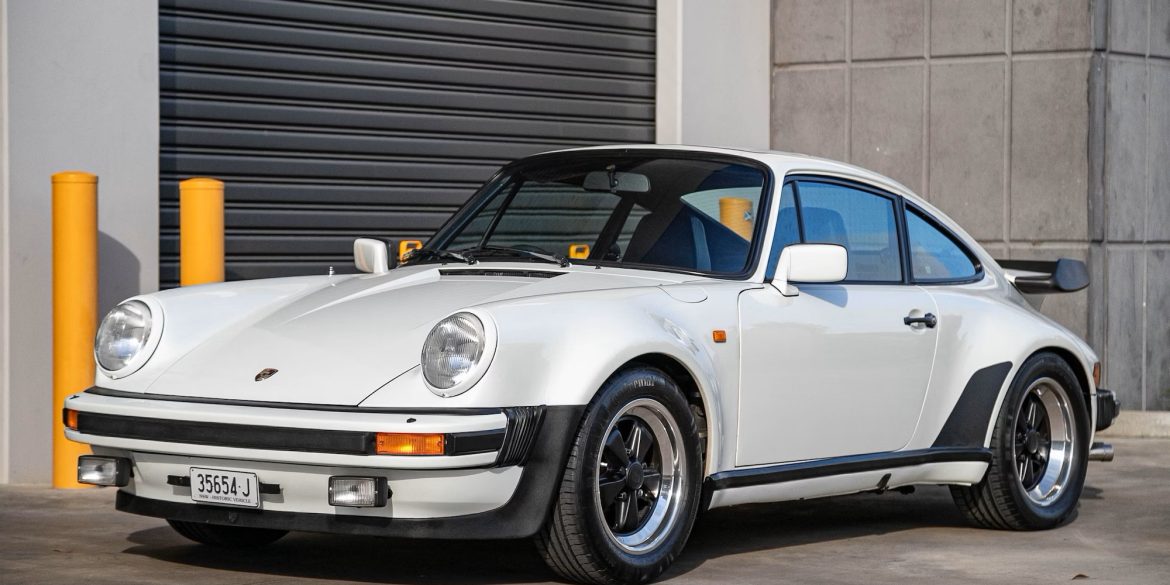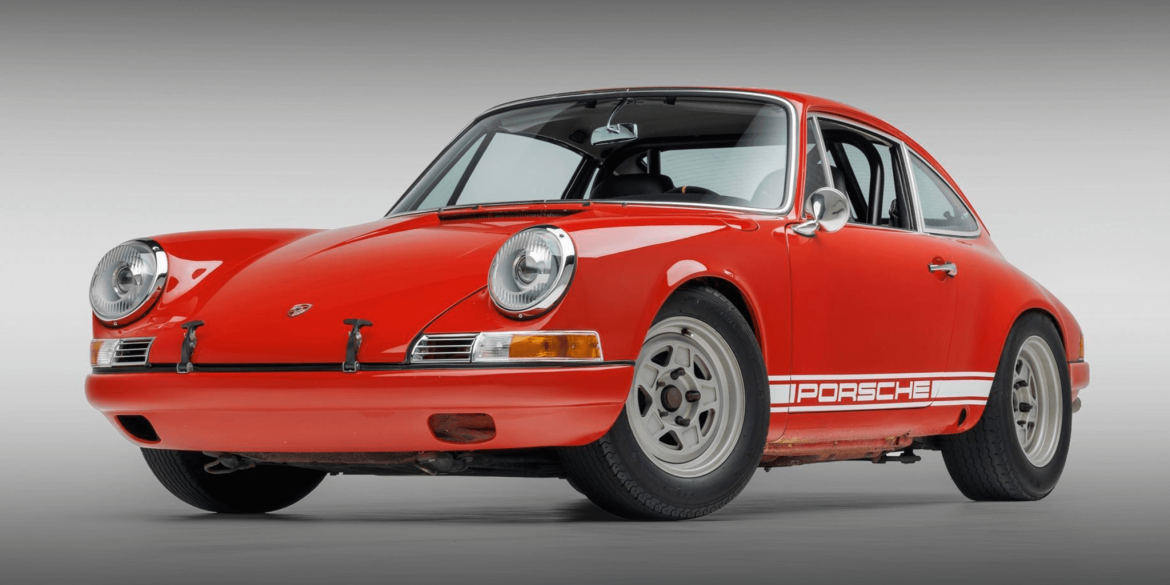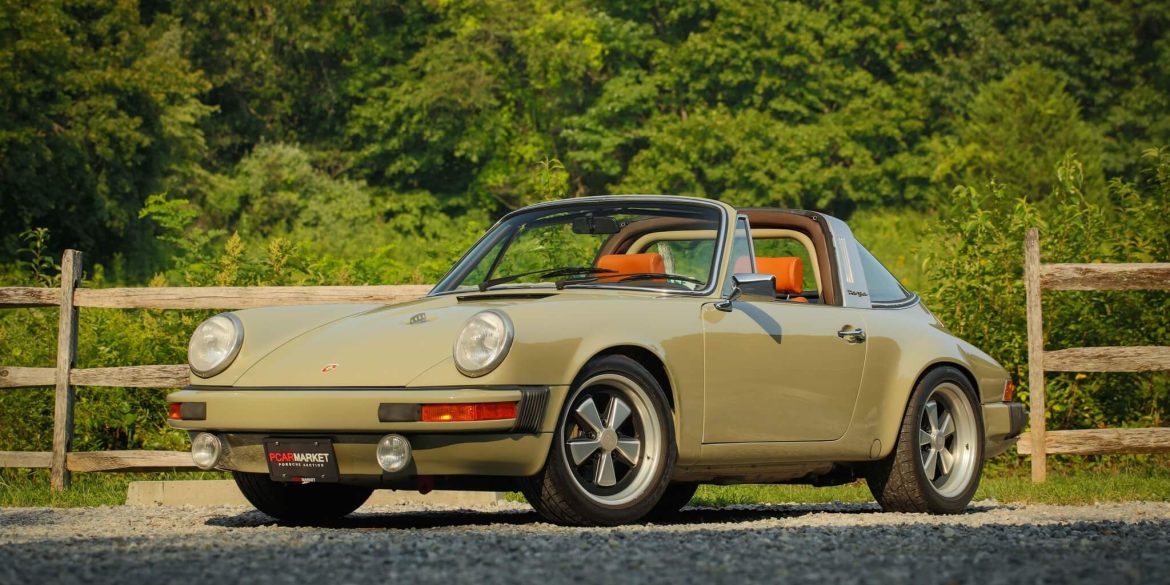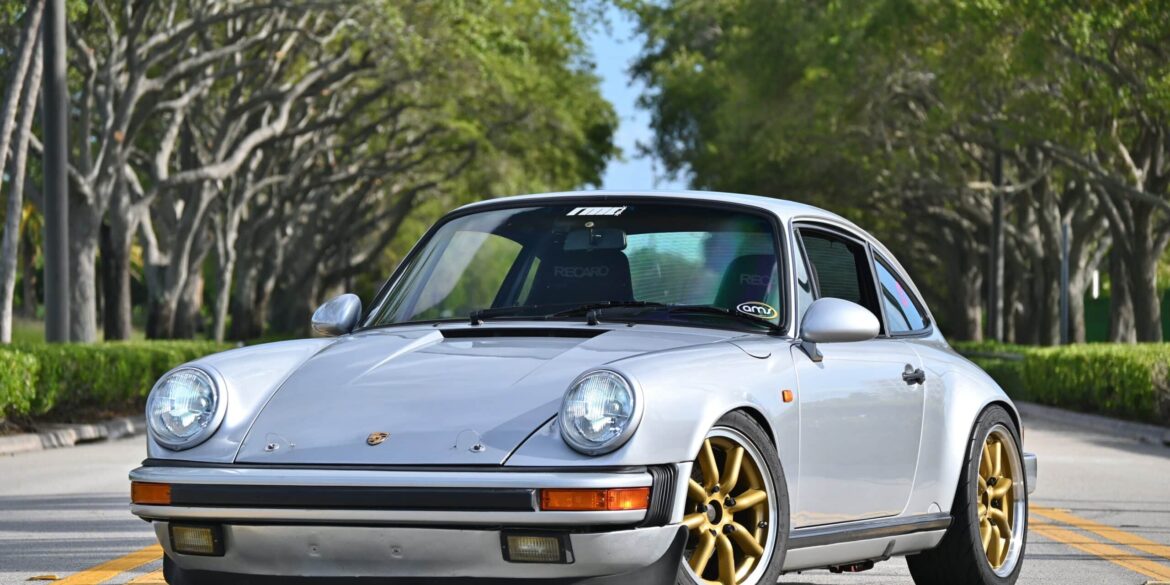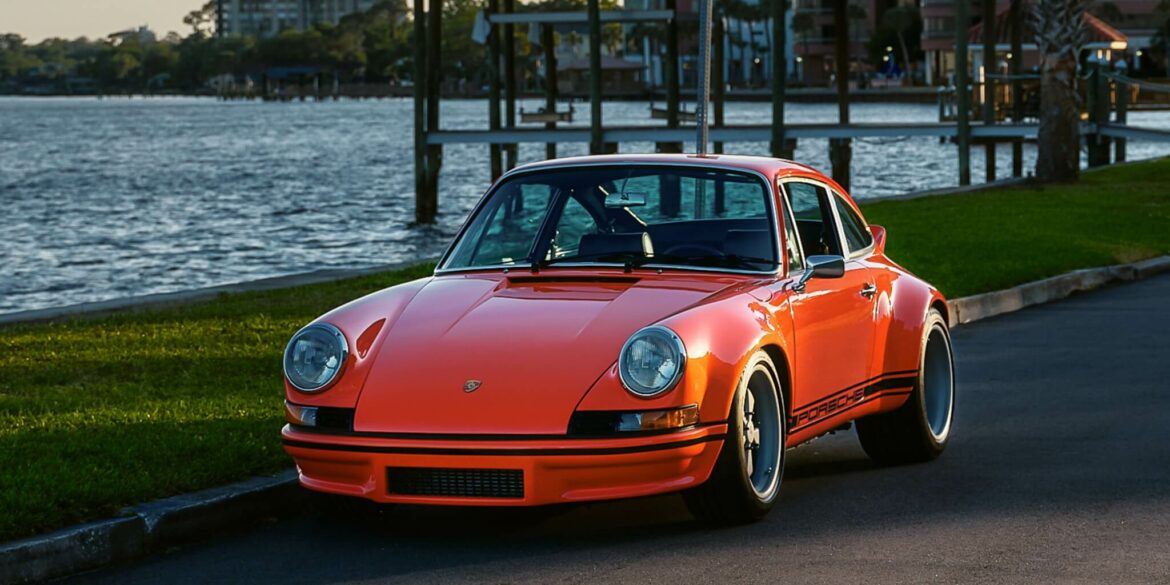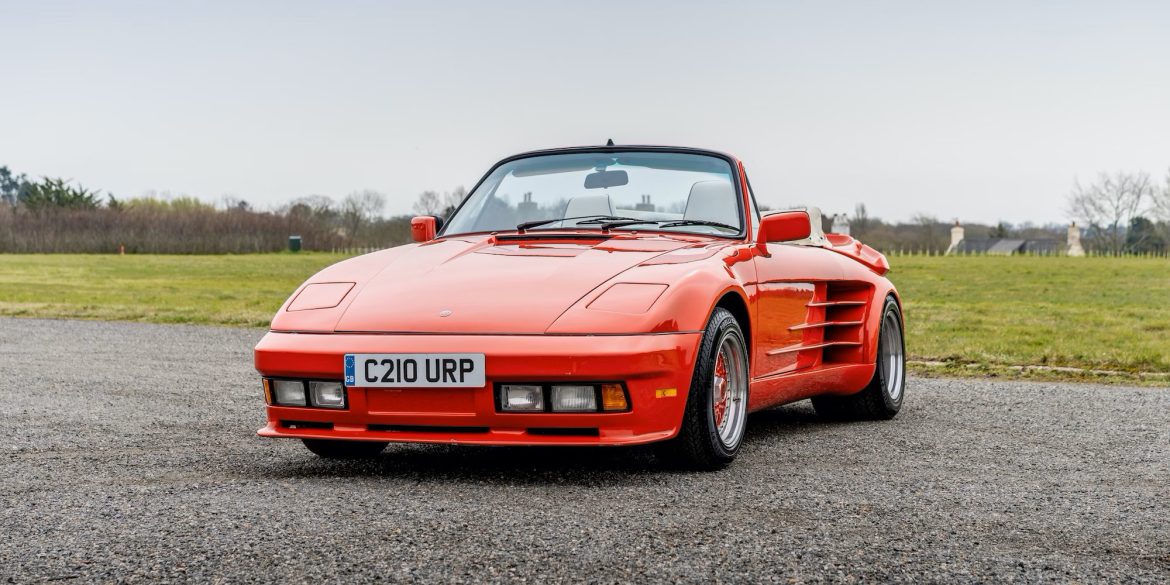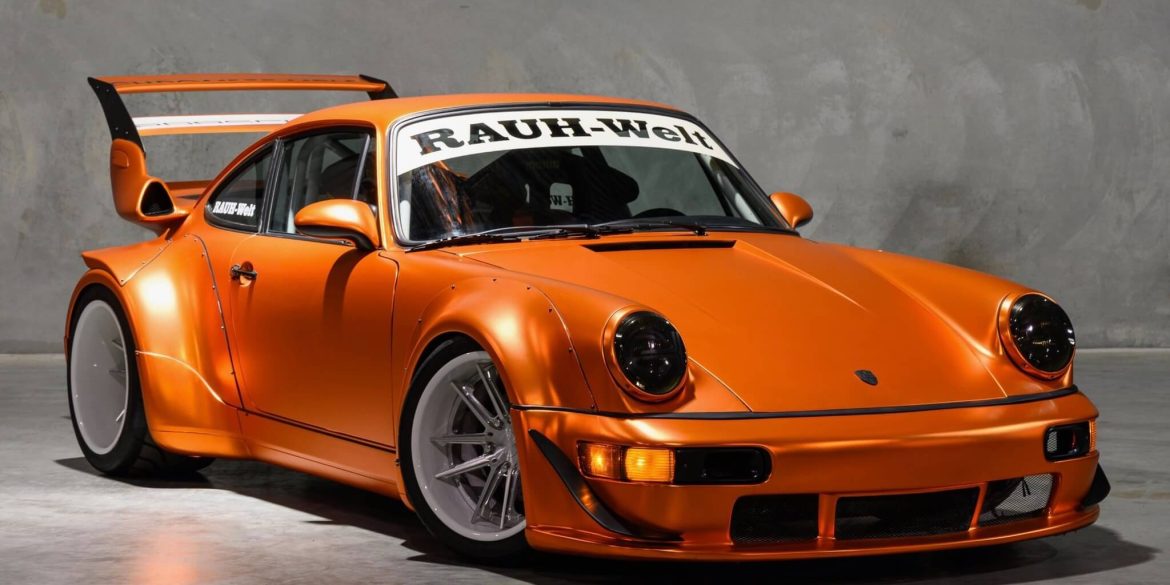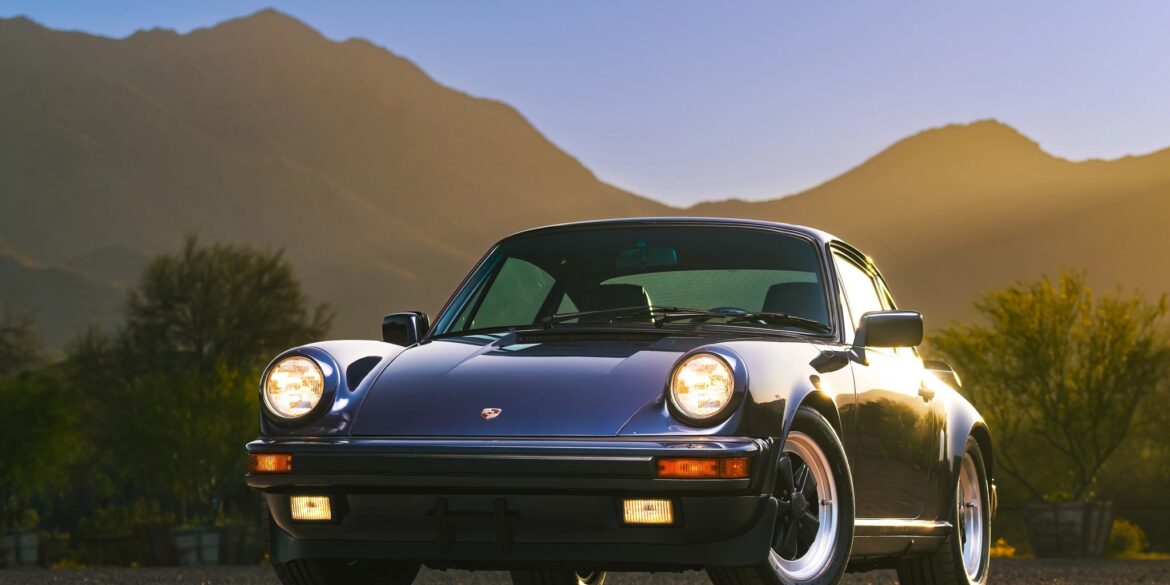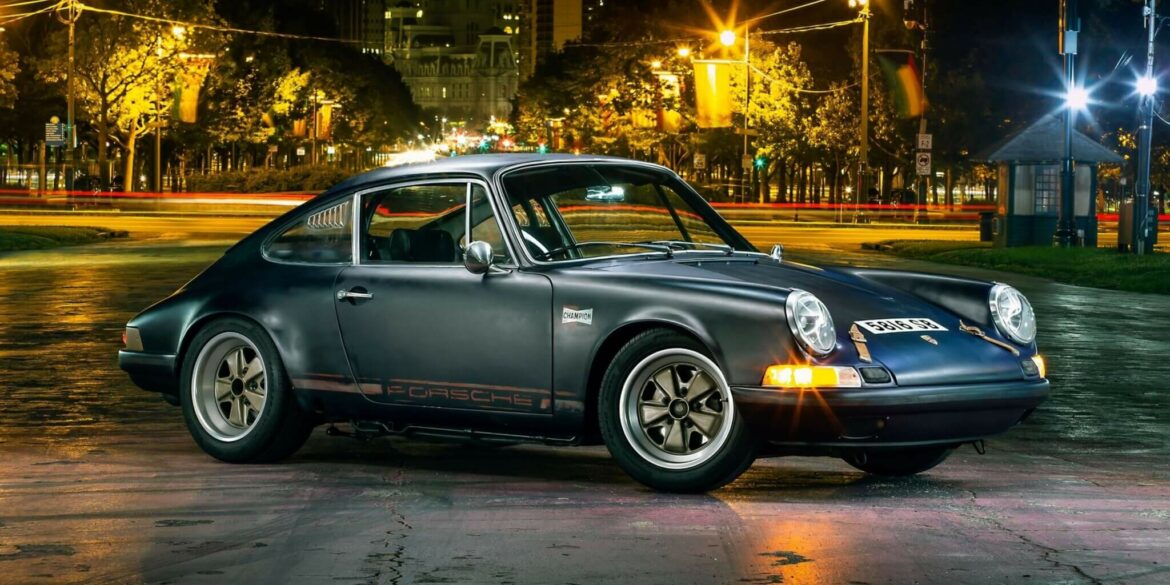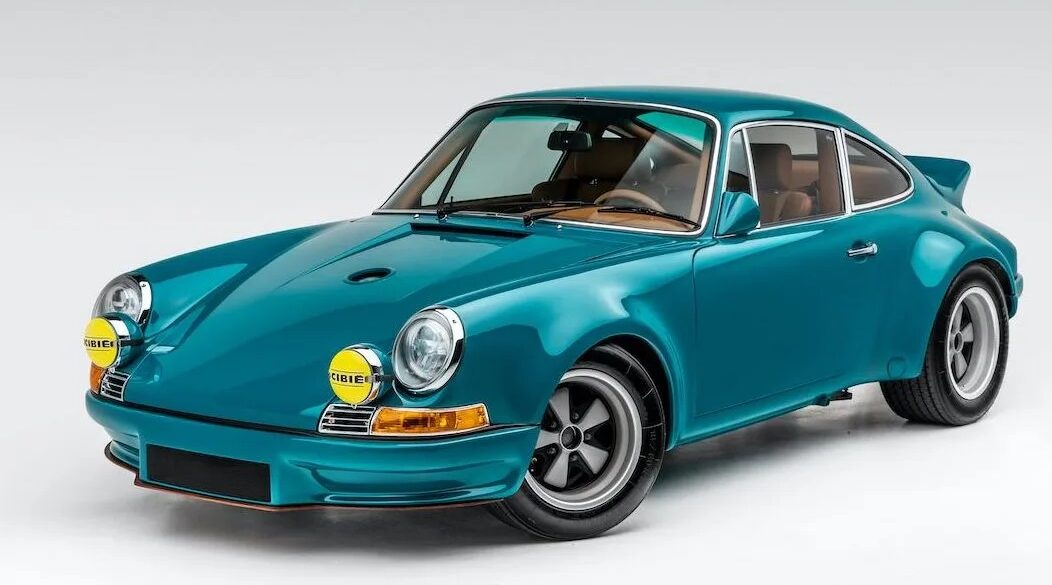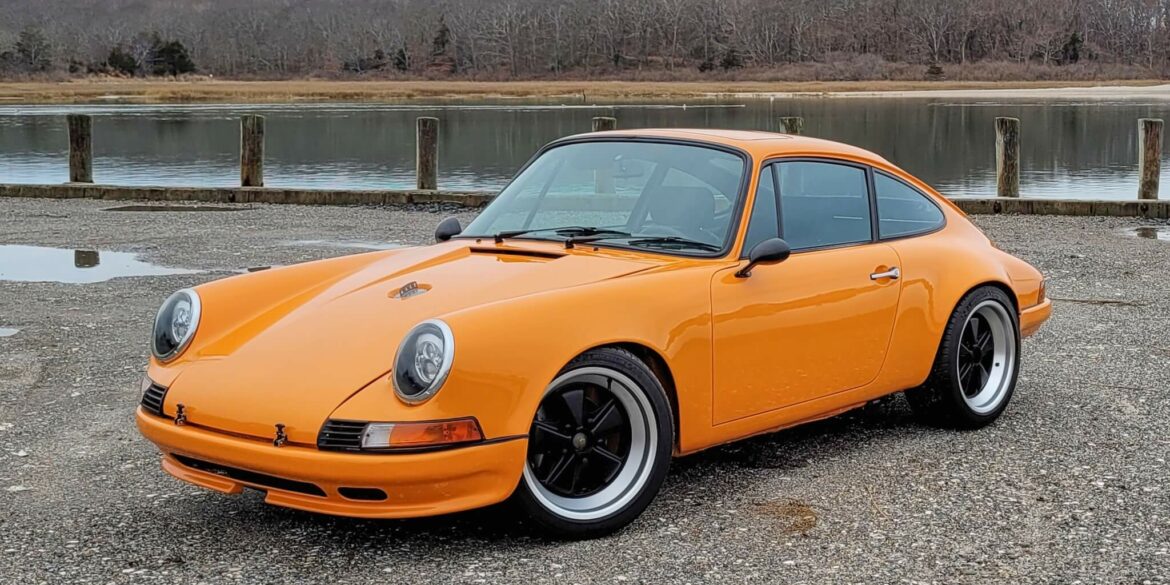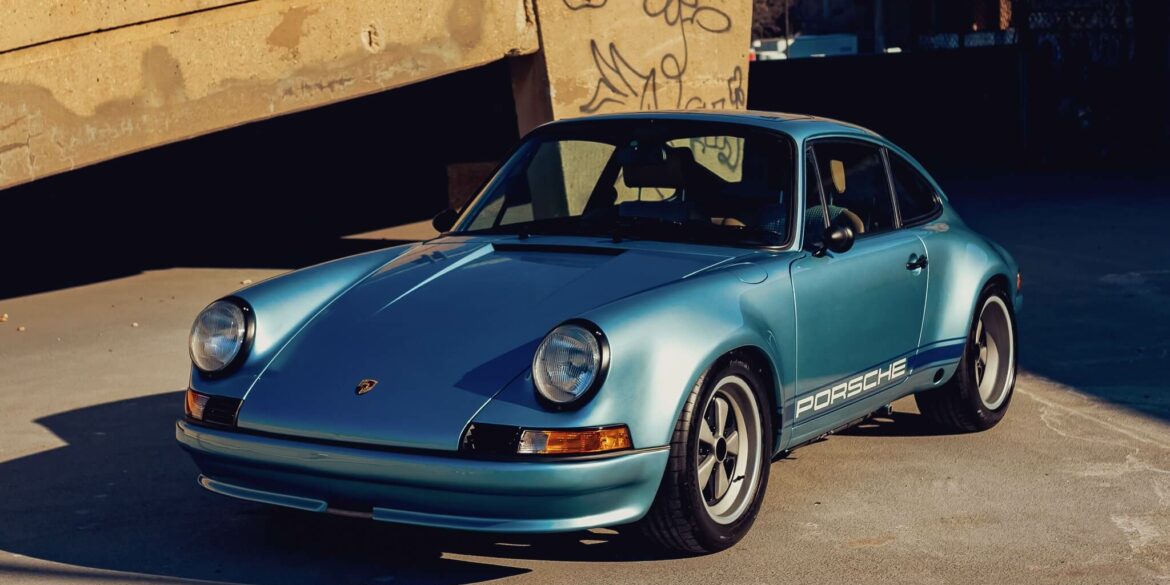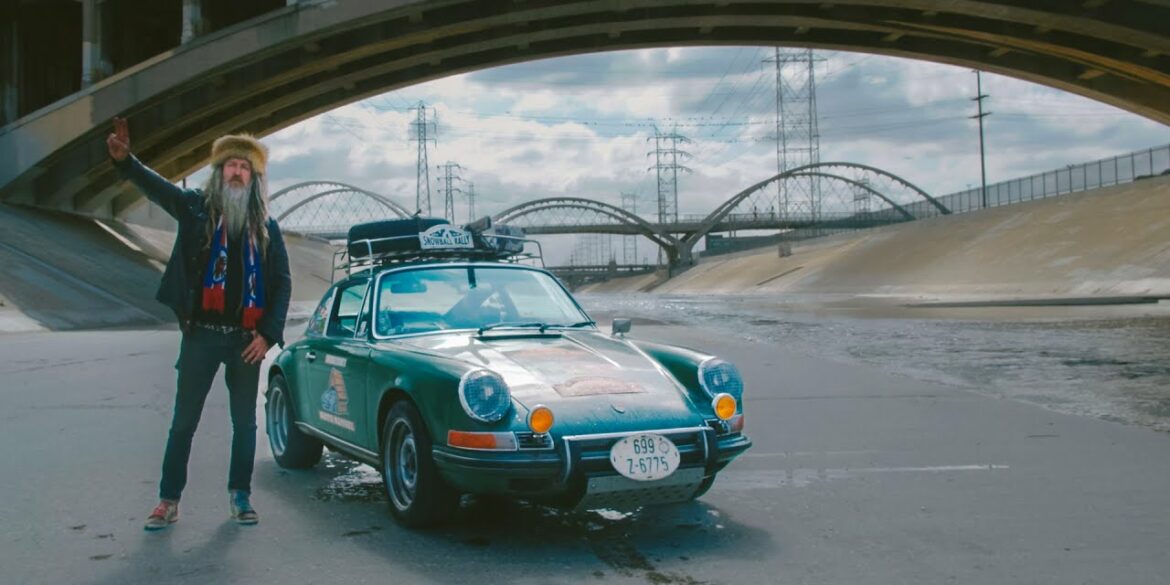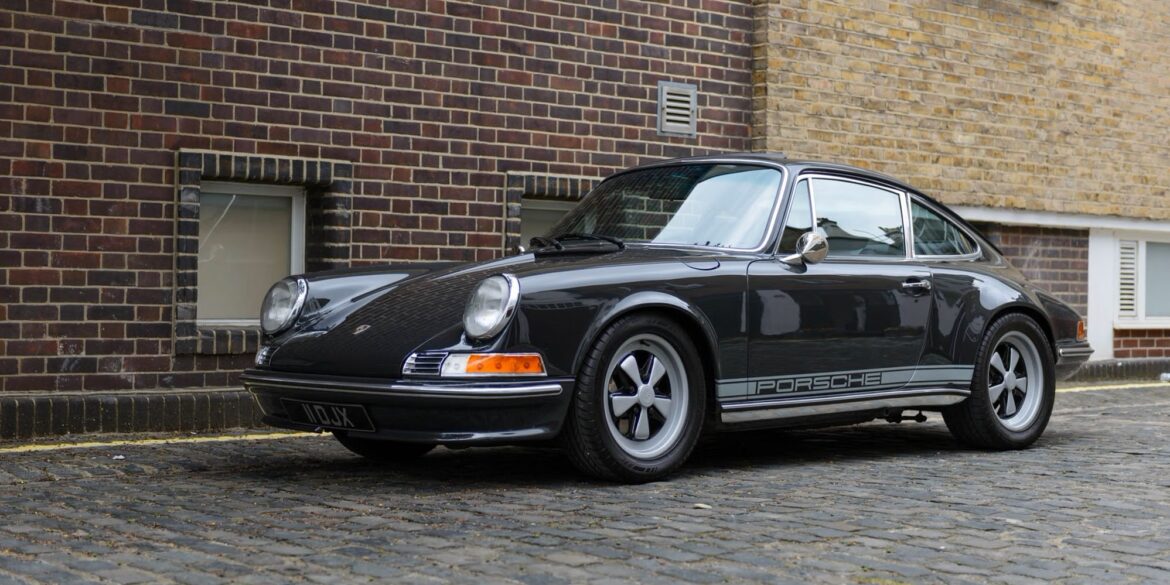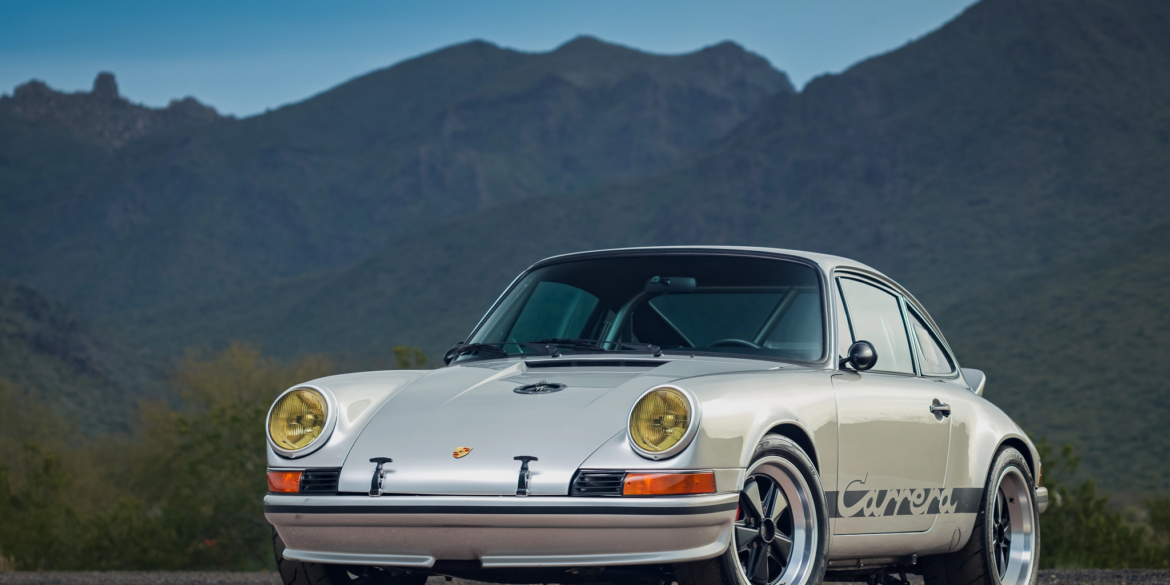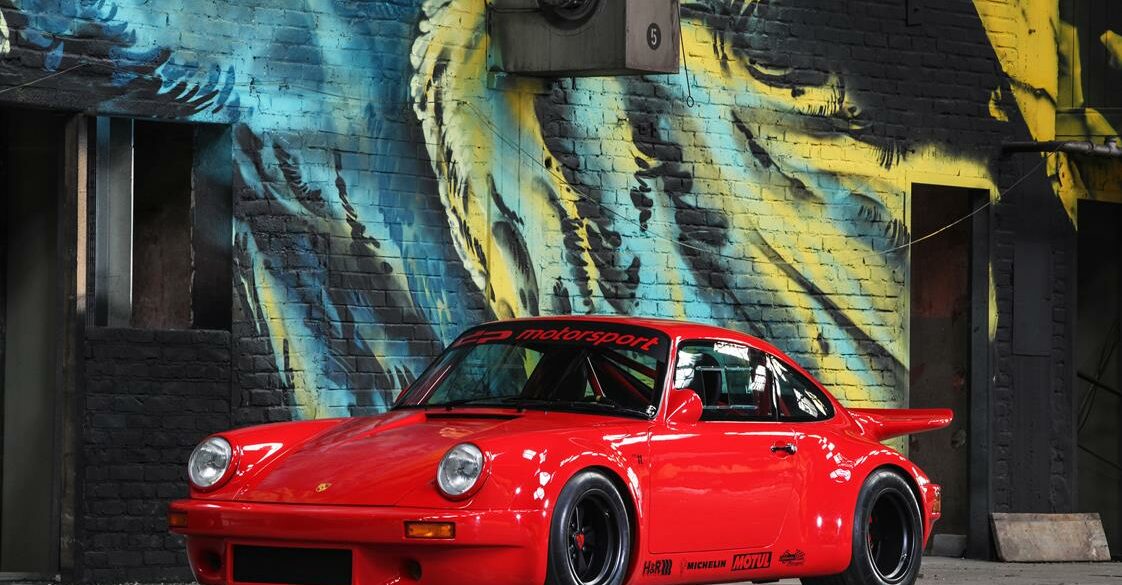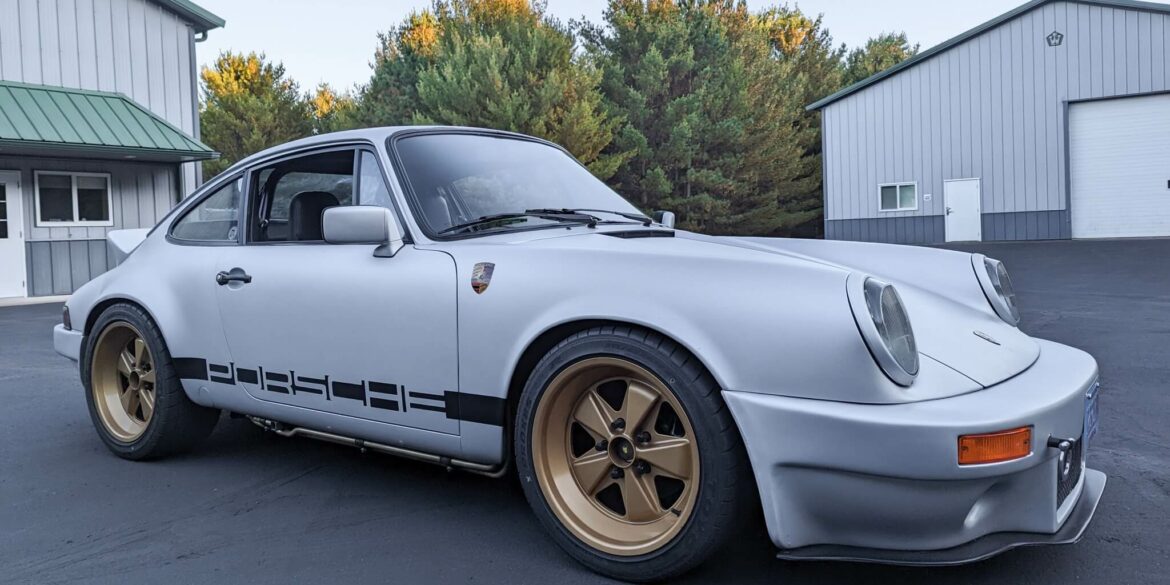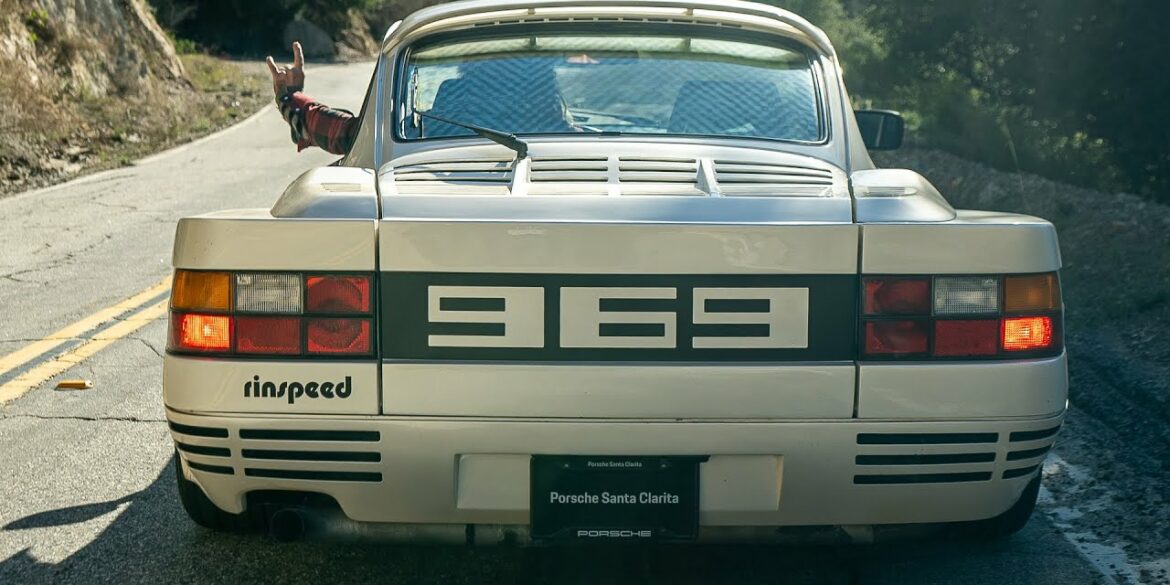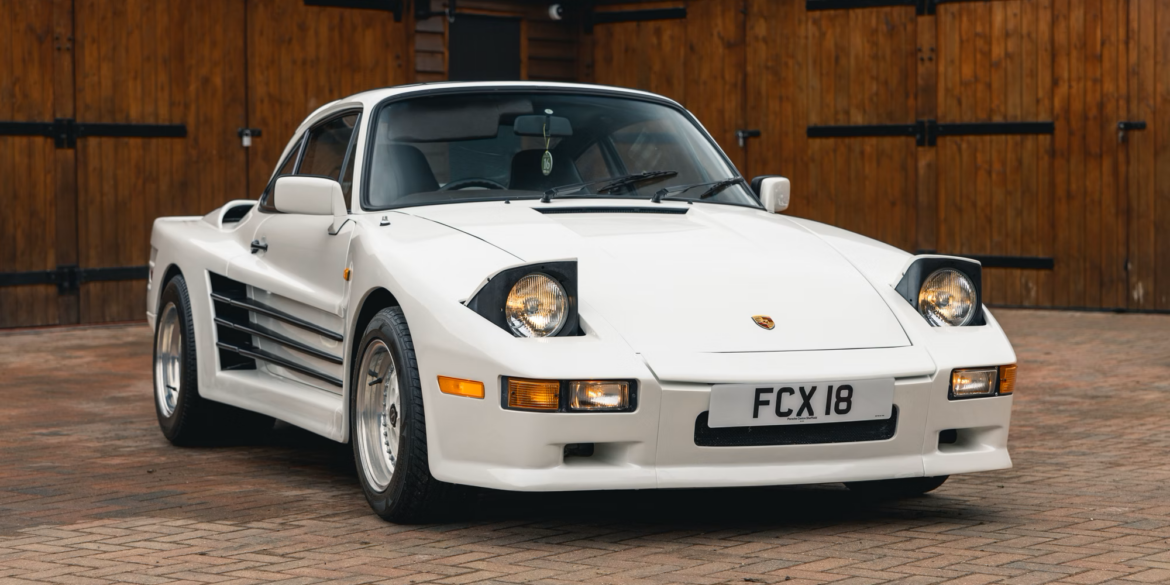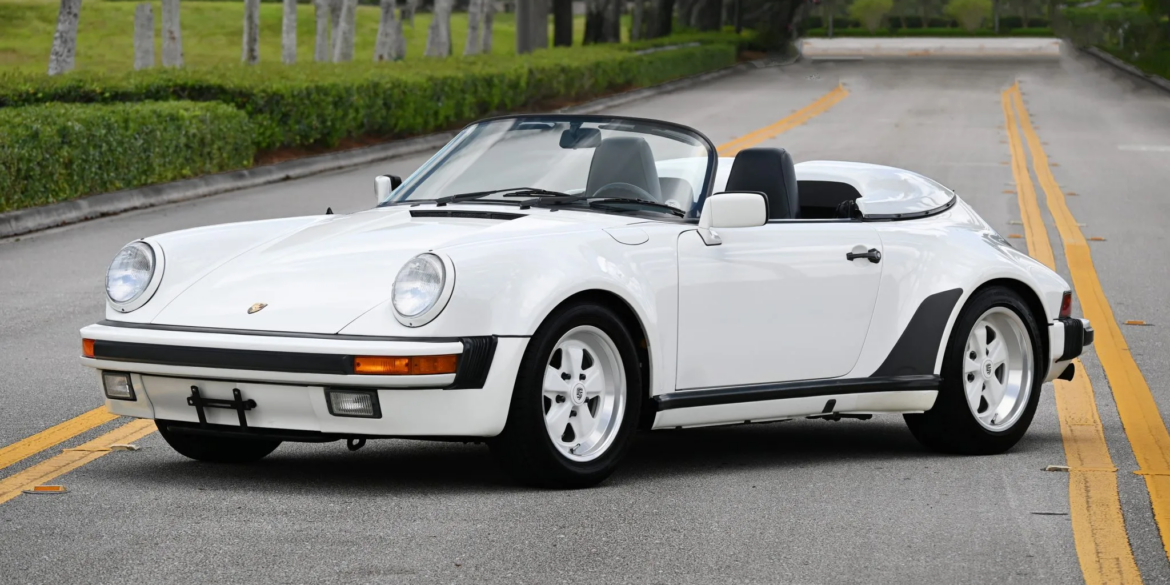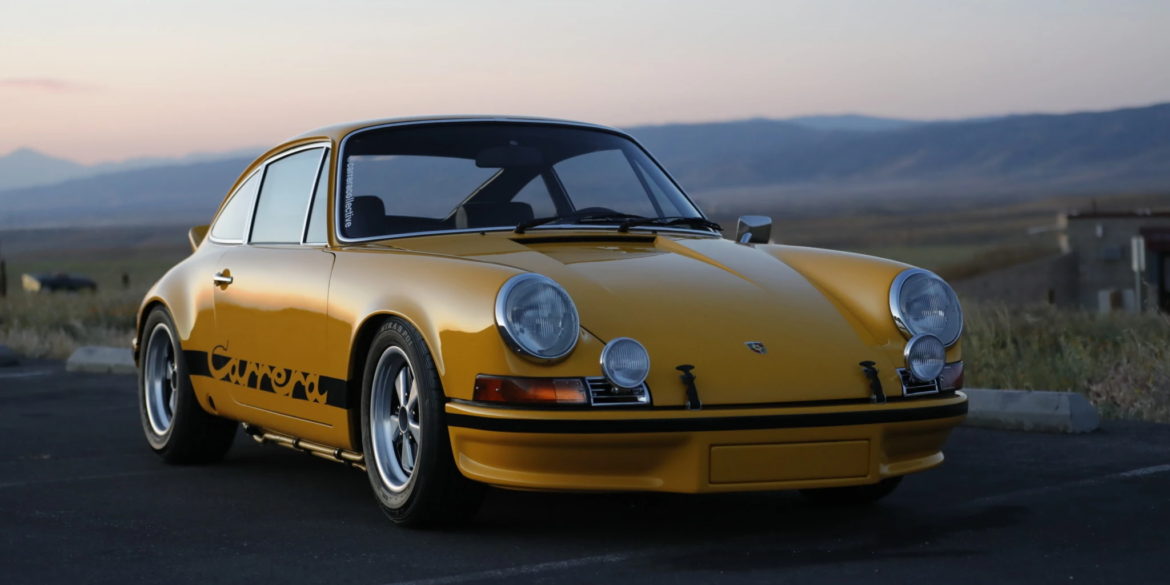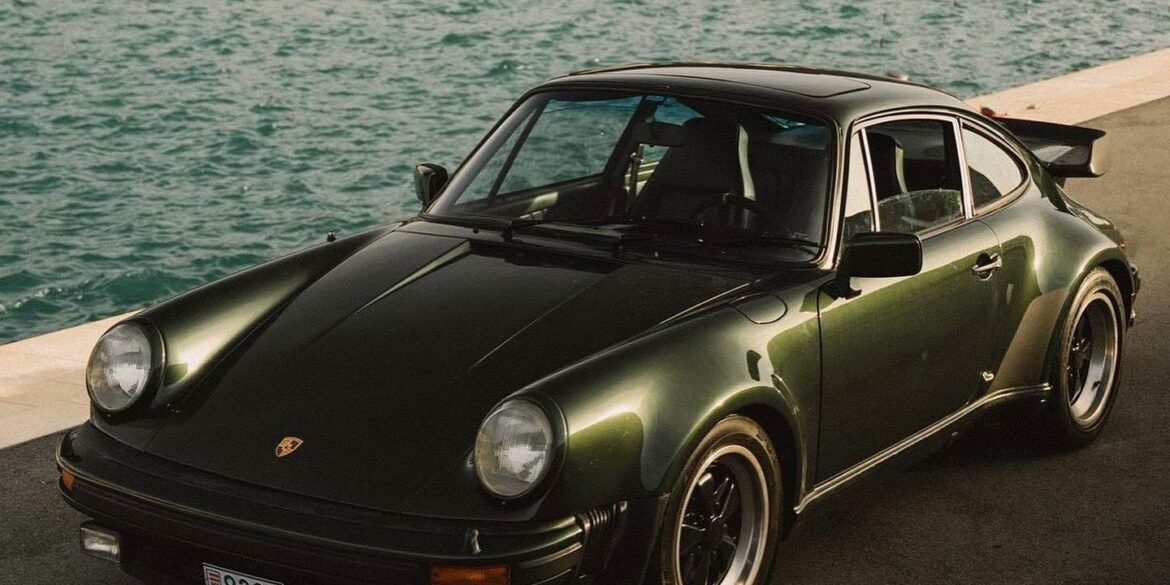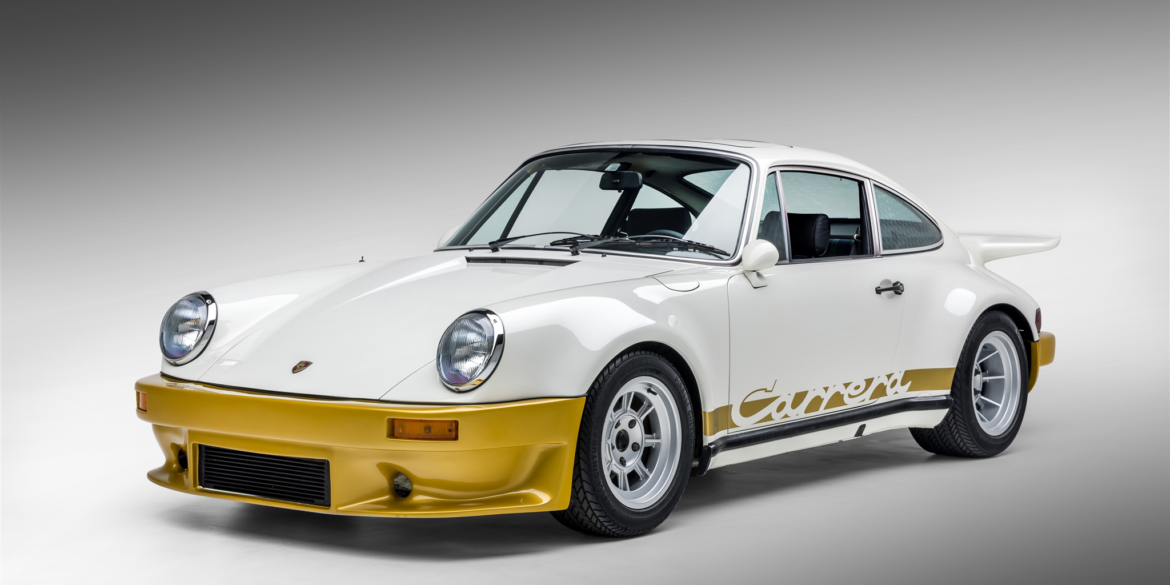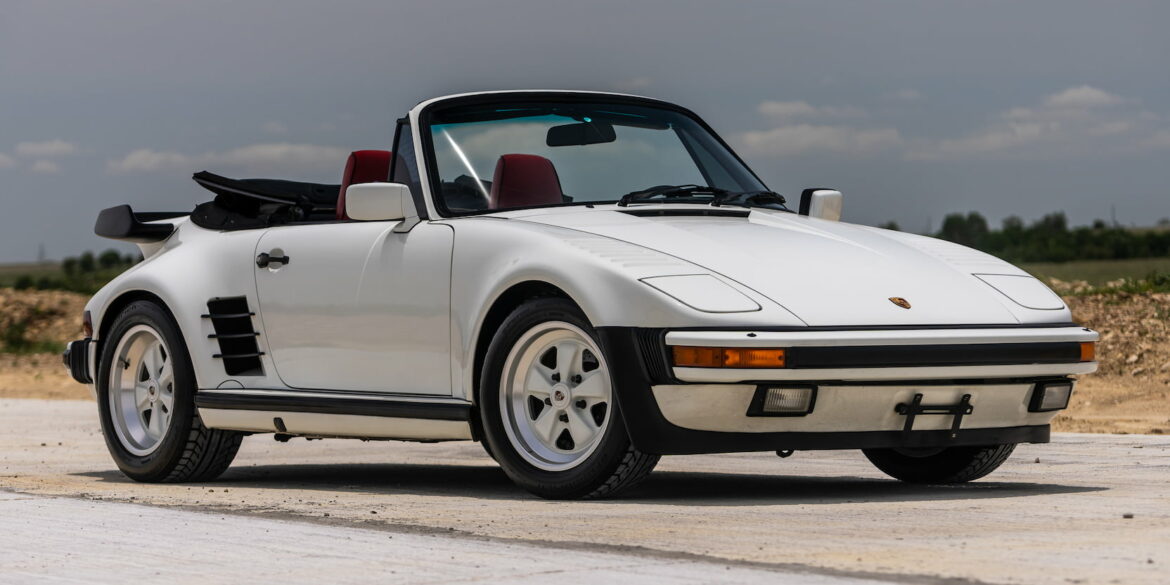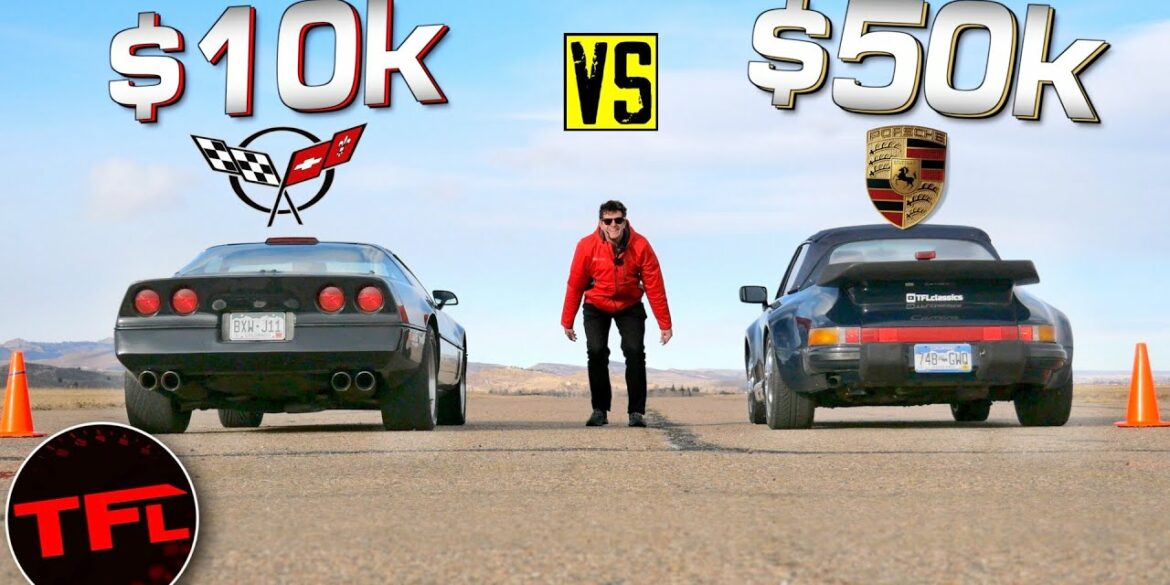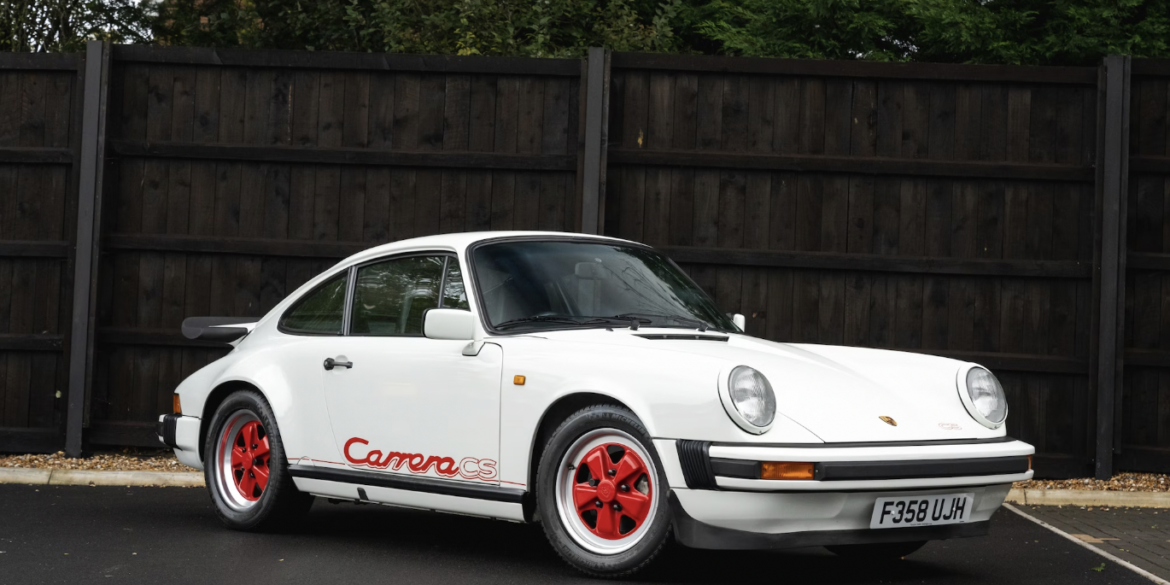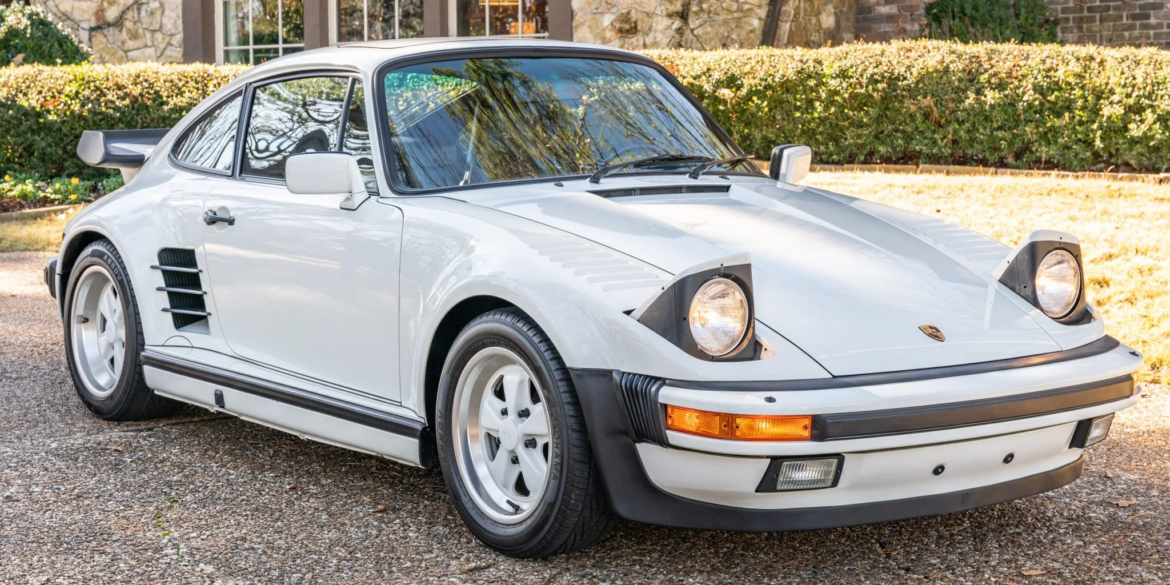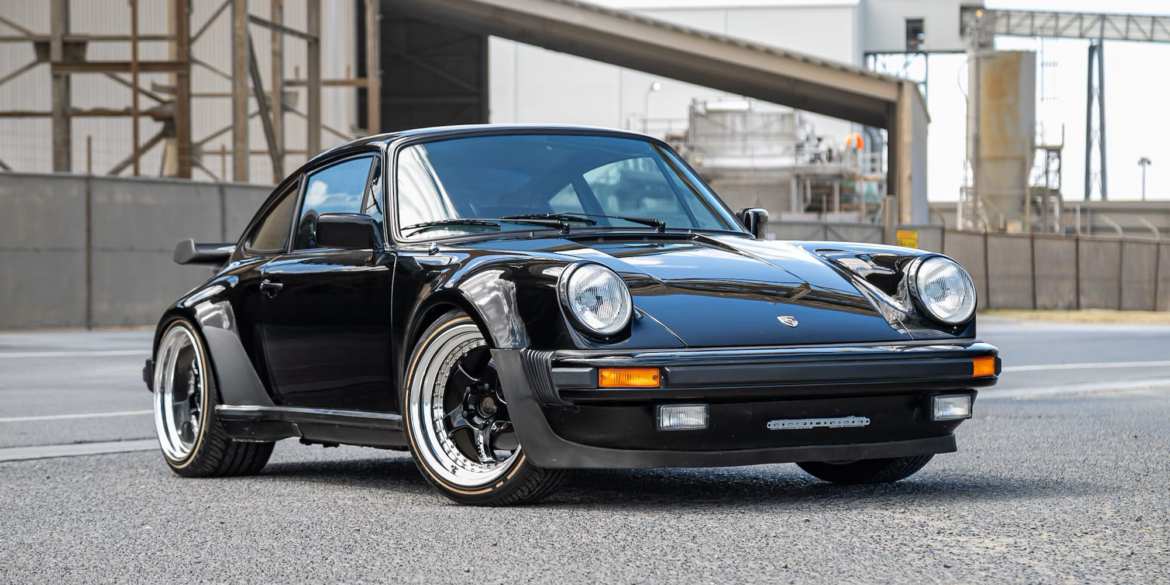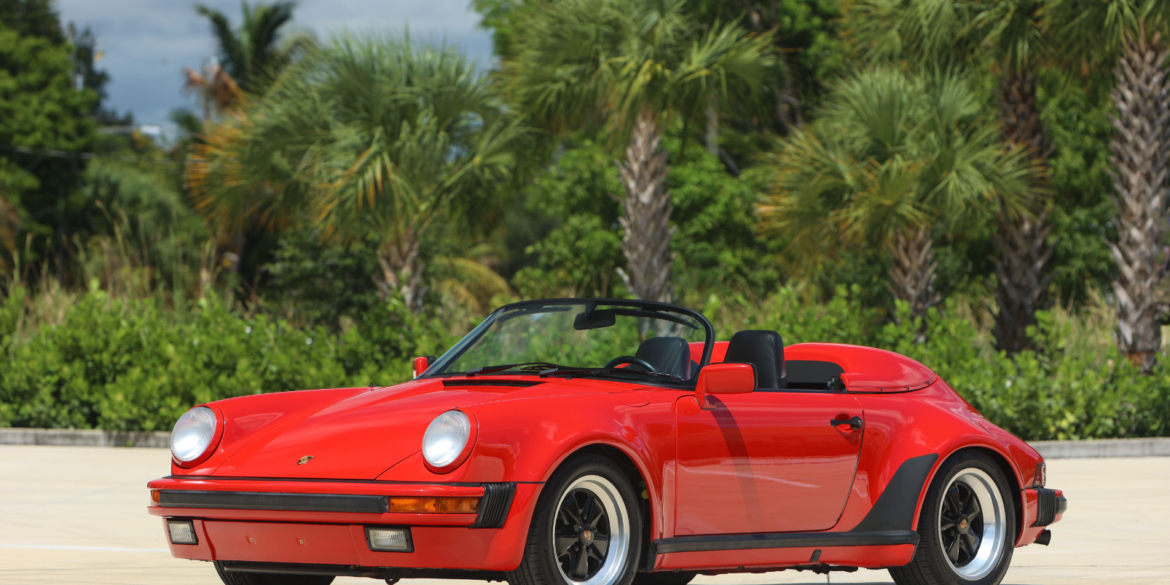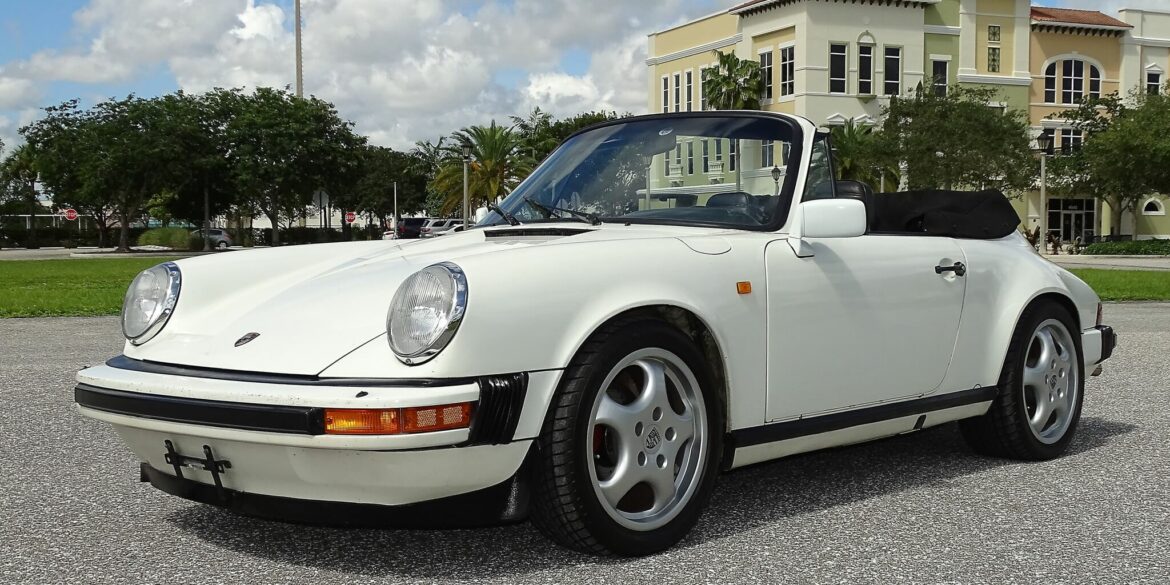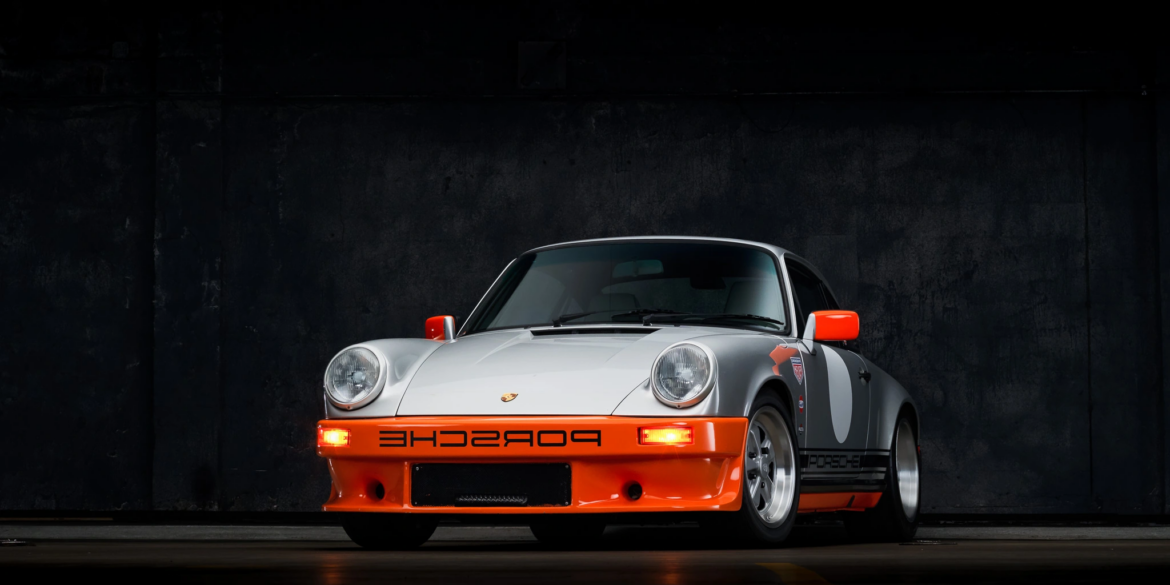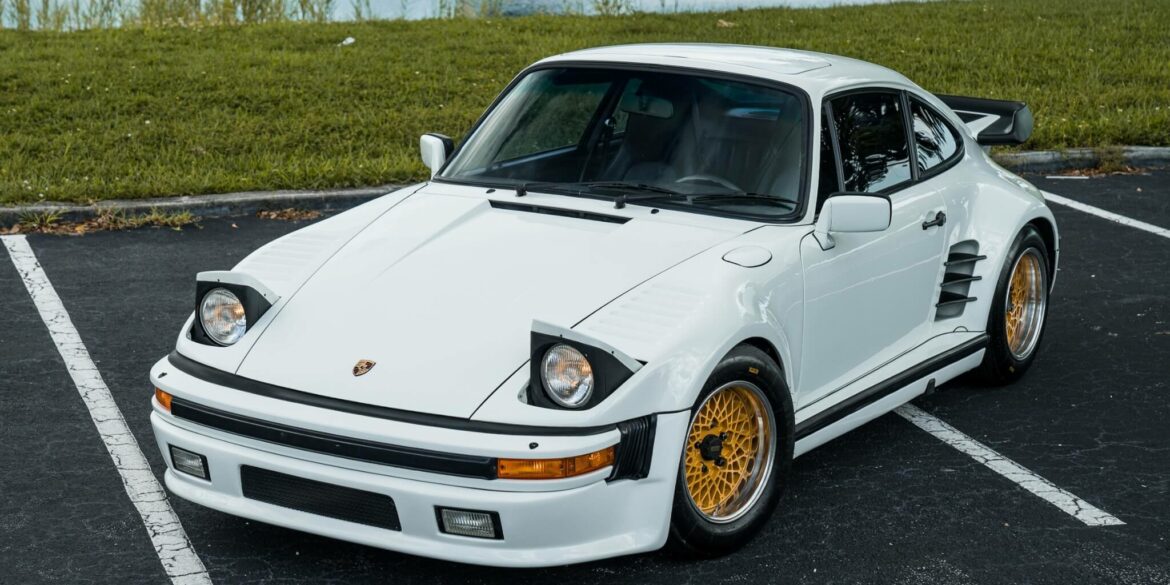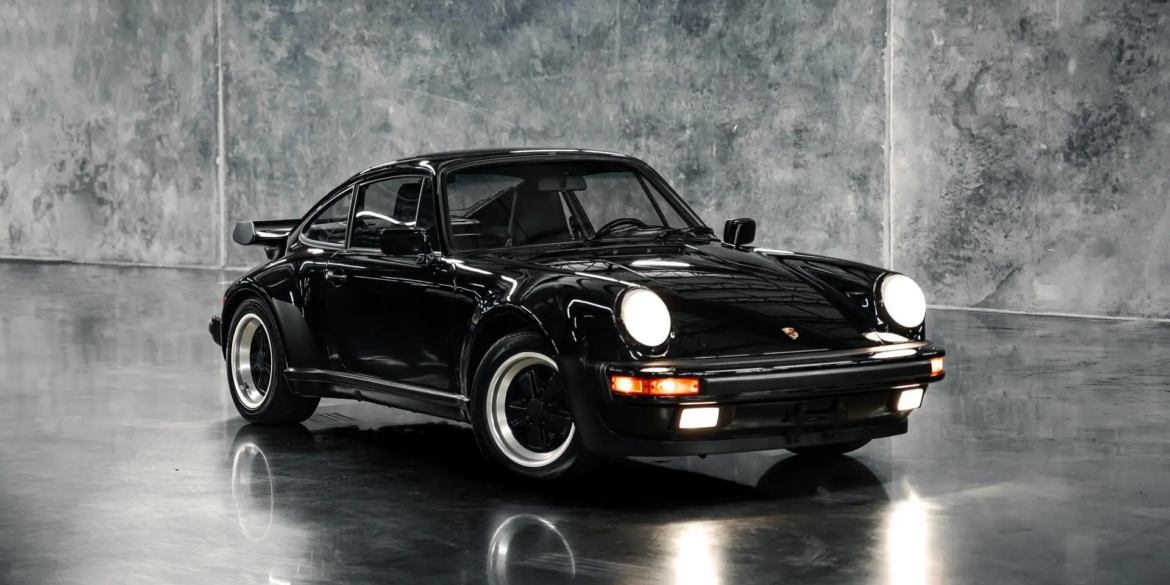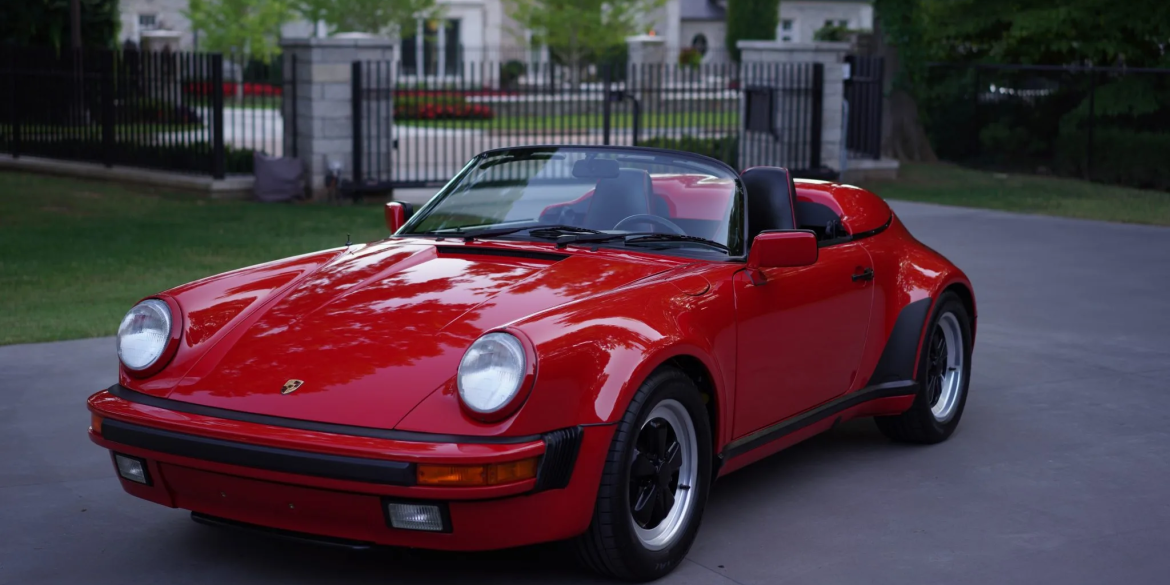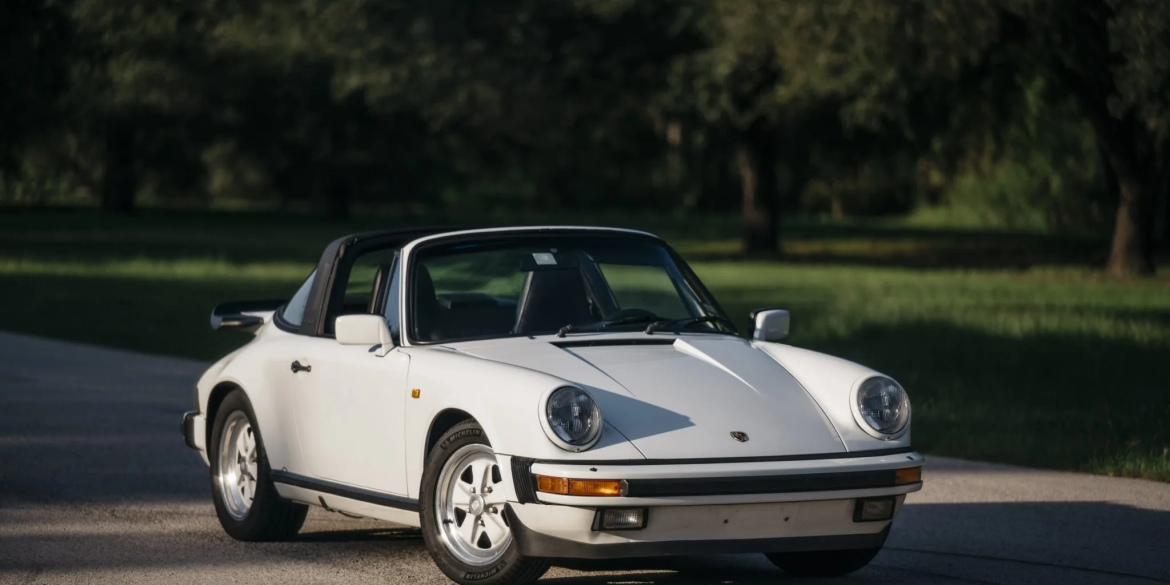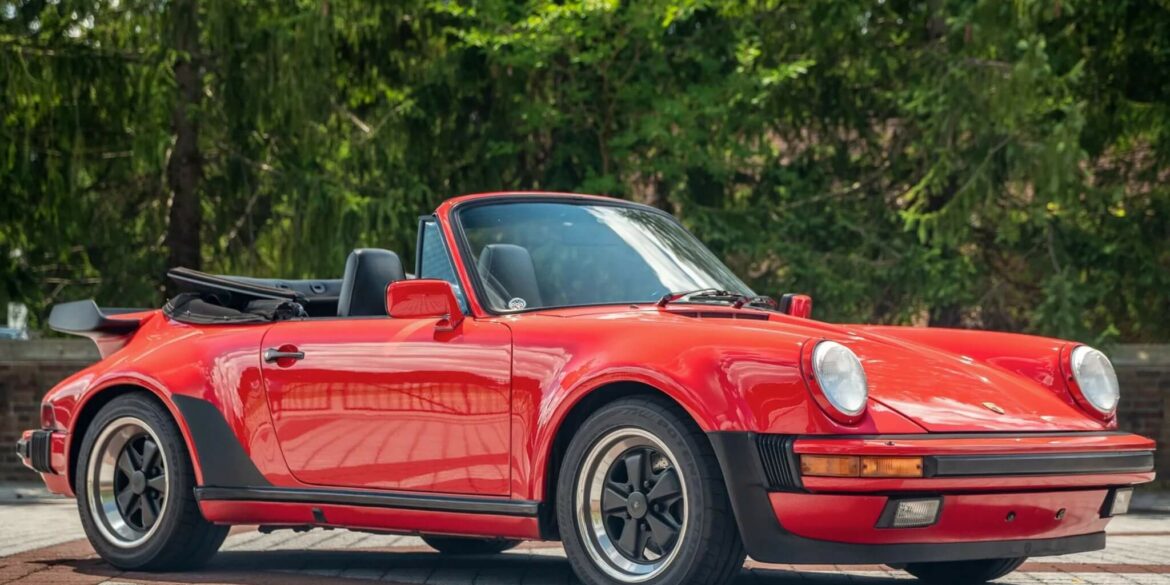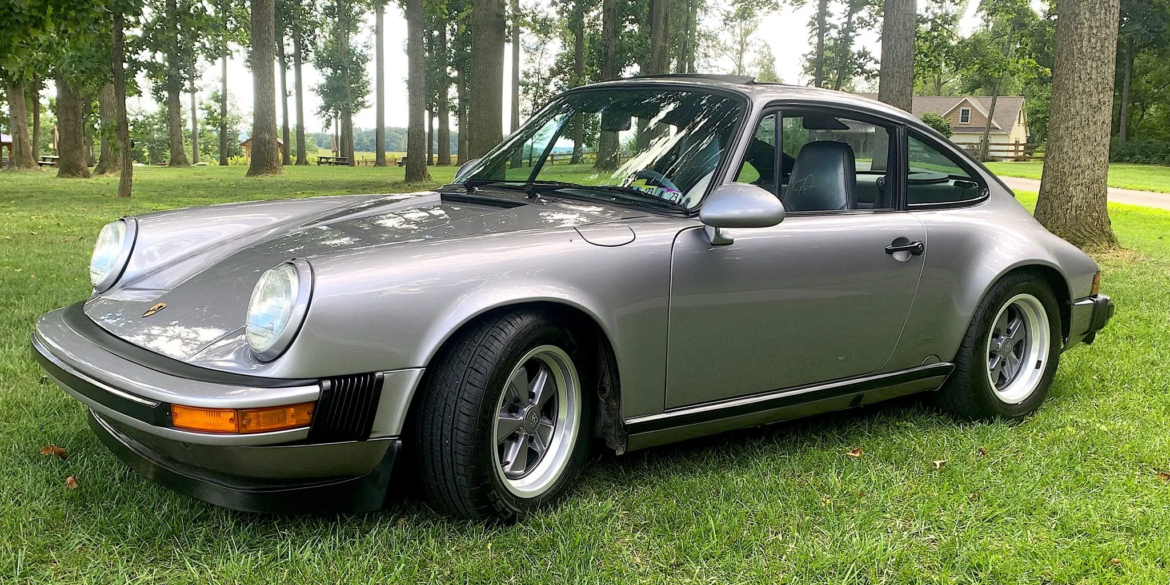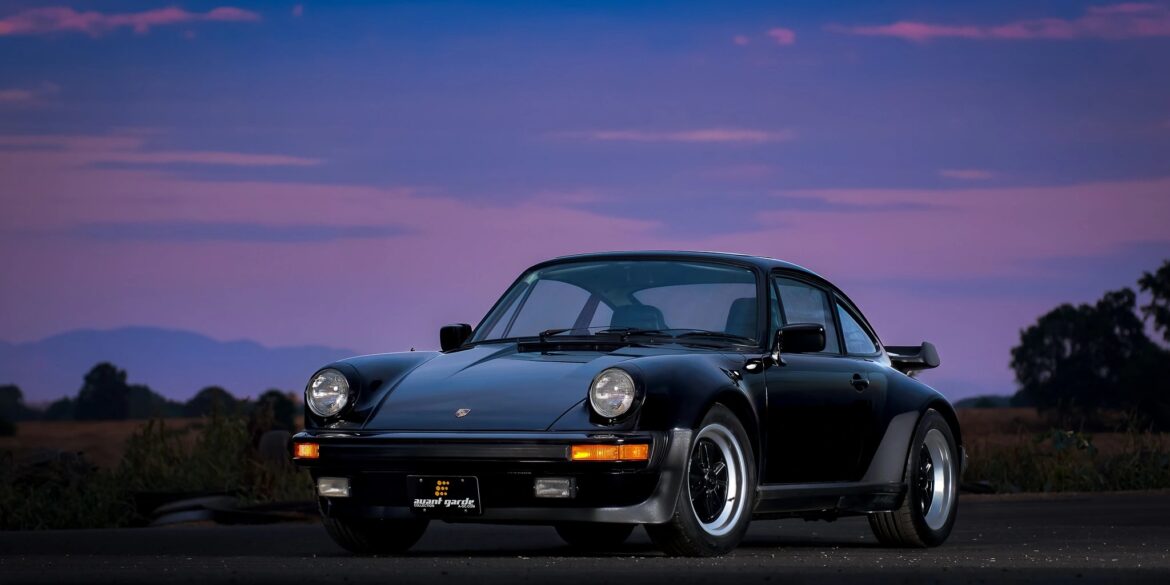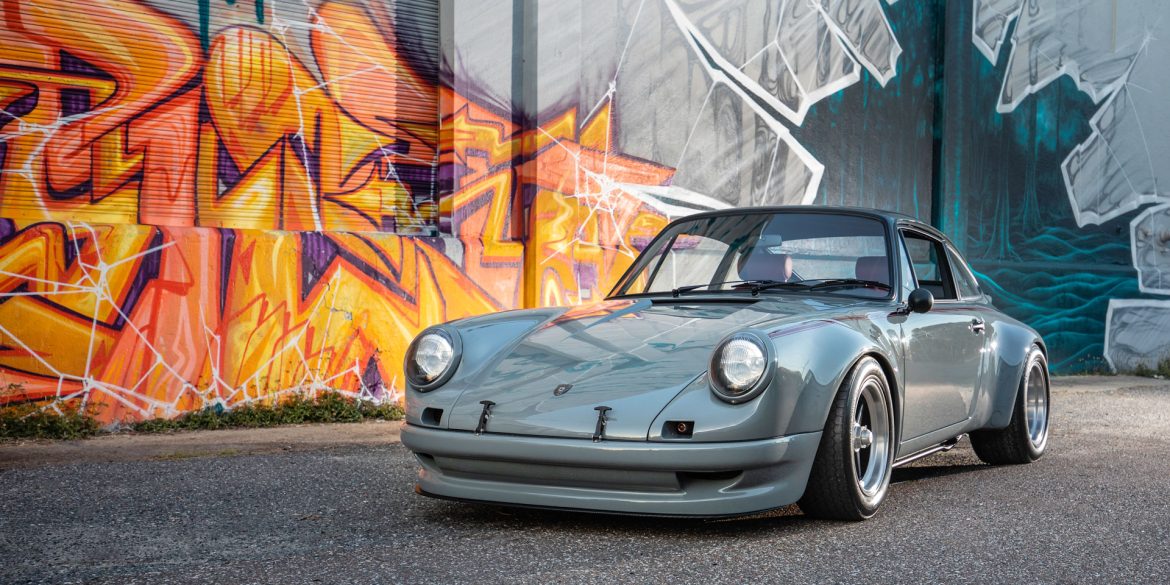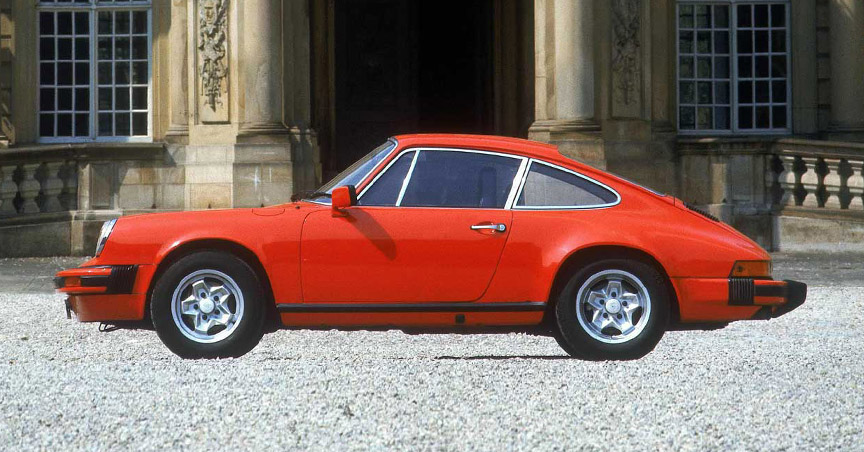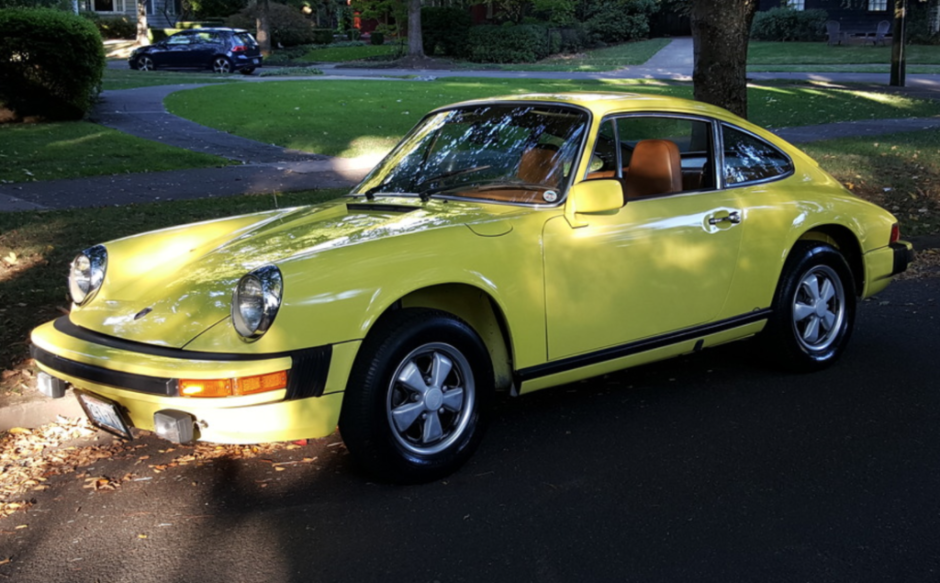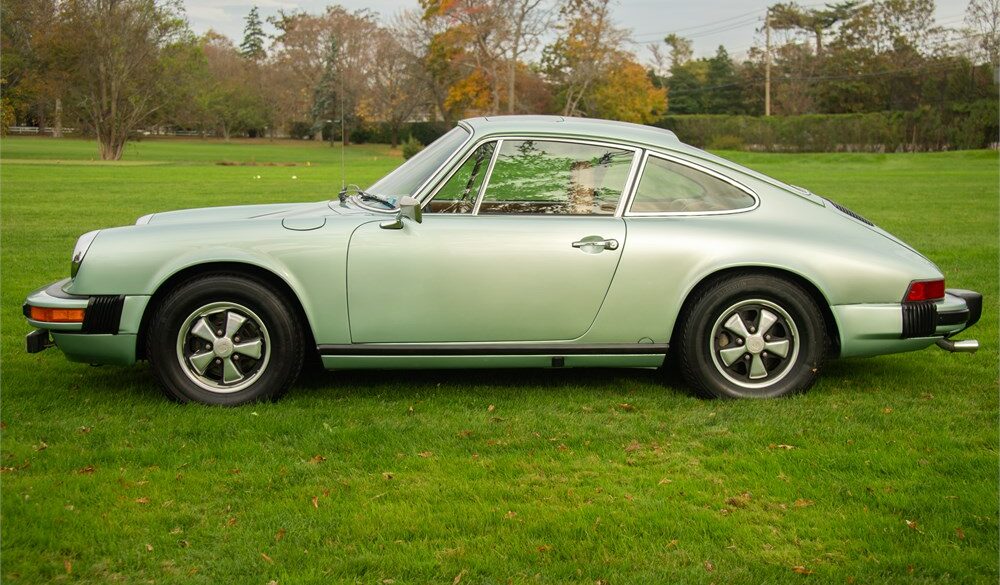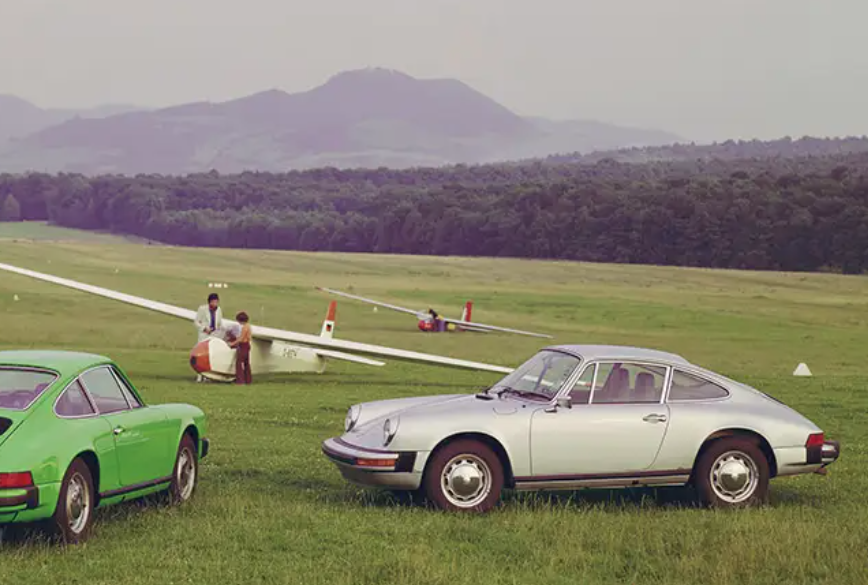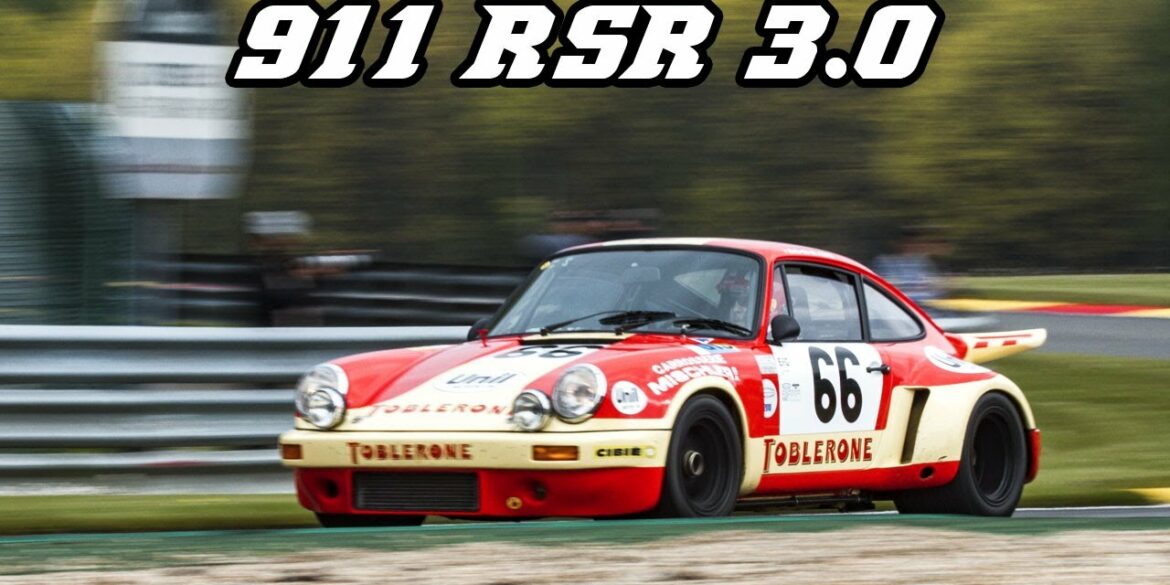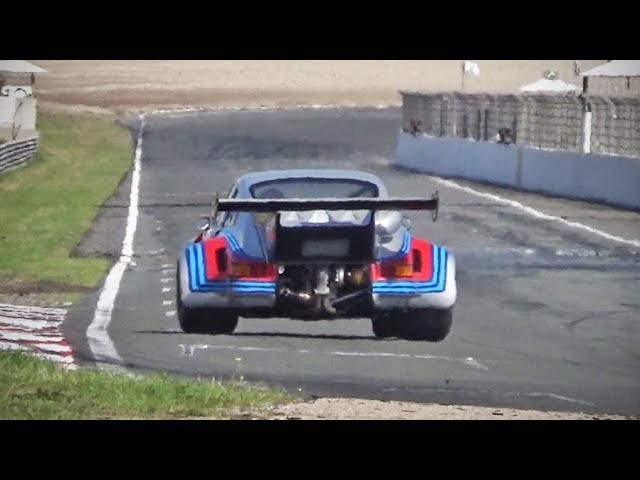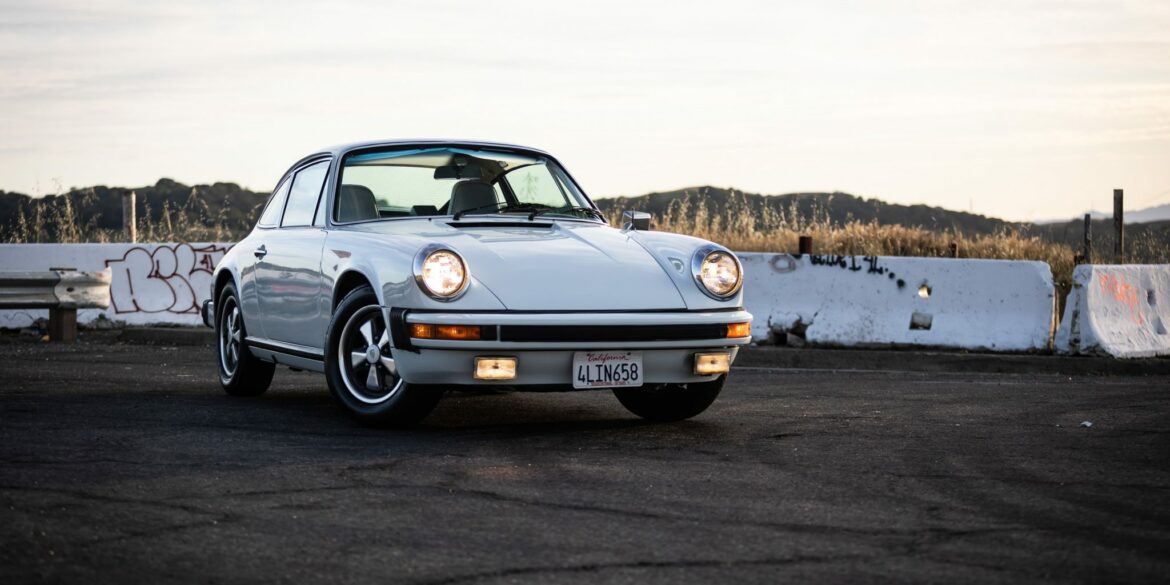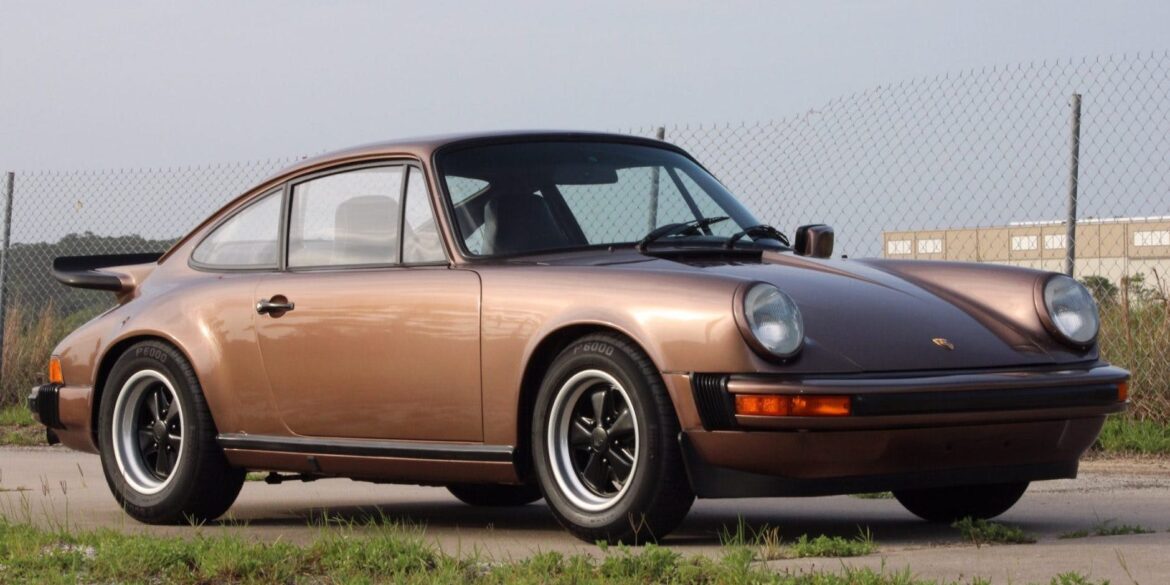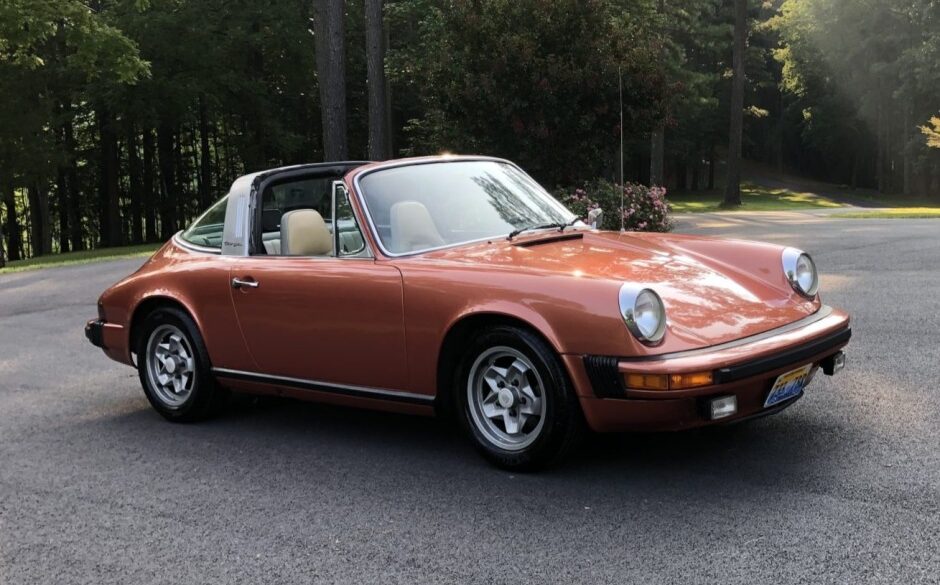One of only 11 Porsche 911 TAG Turbos built by Lanzante, this exceptional vehicle has been offered with fewer than 300 miles since its completion. Inspired by the unique Formula One-powered Porsche 911 Turbo road car developed by Porsche’s R&D Department, this masterpiece is powered by the legendary 1.5-liter TAG...
Porsche’s 930 Turbo returned to North America in 1986 after six years, now more refined. Engine size increased from 3.0 to 3.3 liters, boosting output to 282 HP and a top speed exceeding 150 MPH. More than just a turbocharged engine, the 930 was rooted in endurance racing, where Porsche...
Makellos Classics, a California-based Porsche specialist, has reimagined the 1979 Porsche 930 Turbo, featured in a video from Autotopia LA on YouTube. This pro-touring Resto-Mod refines the original’s performance and usability while staying true to its heritage. The 930’s turbocharged flat-six engine now features a 3.5L setup with a 964...
In a recent episode of 9WERKS TV on YouTube, we are treated to comparison between two of the most coveted Porsche 911 Rennsport models ever made—the iconic 2.7 RS and its rarer sibling, the Carrera 3.0 RS. The 2.7 RS, introduced in 1973, was a homologation special designed to compete in...
From 1974 to 1976, Porsche introduced a limited number of high-performance lightweight Carreras, exclusively for the European market. Known as “Euro Carreras,” these cars were equipped with the famous Type 911/83 2.7-liter engine, producing 210 horsepower with Bosch mechanical fuel injection (MFI) – the same engine that powered the iconic...
The Speedster, introduced in 1989, completed Porsche’s soft-top 911 lineup by reviving a charismatic model from the brand’s past. The name had originally been used for the sleek Type 356 variant. The concept of a new Speedster first took shape in 1983 with a prototype that never reached production. The...
If you’re looking to buy a Porsche, you can choose between a traditional manual gearbox or Porsche’s advanced PDK (Porsche Doppelkupplung) transmission for the 911. But did you know that there’s a lesser known semi-automatic transmission from Porsche that predates both Tiptronic and PDK? Introduced in 1967, just a few...
One of the rarest Porsche 930 models was the hand-built 505-option ‘Flachbau’ or slant nose. This special-order Porsche package was inspired by the iconic twin-turbocharged 935 race cars and featured significant aerodynamic upgrades beyond the standard 930. The modified front end was part of a comprehensive set of enhancements designed...
In August 1987, Porsche launched the Carrera Club Sport (option M637, or ‘CS’), specifically designed for club racing. The CS featured a blueprinted engine with hollow inlet valves and a higher rev limit, along with track-focused suspension modifications. However, the primary focus was on weight reduction, which can be as...
This 1982 Porsche 911 Turbo was reportedly converted to BTR Lightweight specifications when new. RUF stripped the car to reduce weight, replacing parts with their own lightweight components. The car’s exterior was modified with RUF-designed front and rear valances for better aerodynamics and cooling. The car is finished in Grand...
Starting as a humble service station in Pfaffenhausen, Germany, RUF evolved within three decades into a renowned creator of some of the world’s most exceptional super sports cars. Alois Ruf Junior, inspired by his father’s business, developed a deep passion for automobiles, particularly the Porsche 911. Initially, RUF’s creations were...
Common Problems with Air-Cooled Porsche 911s: What Every Buyer and Owner Should Know The F-Series, G-Series, 964 & 993 Few cars hold the iconic status of the air-cooled Porsche 911. From the first-generation F-Series (1964–1973) to the last air-cooled 993 (1994–1998), these classics represent more than just automotive excellence—they’re cultural...
This AutoTopNL video on YouTube showcases the incredible speed and sound of a unique Porsche 911 restomod built by CSF Radiators. This exceptional vehicle was crafted by CSF Radiators for the 2021 SEMA show, one of the world’s most iconic auto shows, particularly for tuned cars. It began as a...
In 1973, Porsche introduced the legendary 911 RS in response to the realization that the weight of its top-tier 2.4-liter 911S production model limited its racing potential. To address this, Porsche created and homologated a special lightweight variant for competition. This resulted in the 1973 Carrera RS (RennSport), which used...
In 2015, famed tuner Akira Nakai of RWB Los Angeles transformed this 1987 Porsche 911 Carrera coupe. The car boasts a widebody kit with a lengthened hood, extended fenders, and a ducktail spoiler. “Carrera” lettering adorns the sides, while “RAUH-Welt” graphics decorate the spoiler and windshield. Further modifications include drilled...
This Porsche began life as a 1981 911 SC sunroof coupe before it was modified with a custom backdated bodywork finished in Sport Classic Grey with gold accents and features a 1972-style oil filler door, a vented decklid and valances, and a through-the-hood fuel filler. The 3.0L flat-six engine and...
Originally built by German tuner Gemballa, the Avalanche was more than just a cosmetic upgrade. Boasting a powerful single-turbo engine and a host of performance modifications, it was a force to be reckoned with on the road. With only around 14 Avalanches ever produced, these cars are prized possessions for...
This 1978 Porsche 911 SC coupe was transformed into the style of a 1973 Carrera RS lightweight model during a two-year build completed in 2018. The car’s body was stripped down and updated to capture the essence of the ’73 Carrera RS. Key modifications include the addition of a longnose...
The stunning all-white car you see here is one of the rarest Porsches ever made. Offered for sale on Bring A Trailer, it’s one of only 20 lightweight rally specials made to meet Group B homologation for the 1984 World Rally Championship season. The 911 SC/RS, introduced in 1984, combines...
In model year 1978, the 911 model range was reduced to two models. The 911 SC (Super Carrera) took the place of the 911 and Carrera models. The 911 SC effectively replaced the 911 S and was one of Porsche’s first models that was meant for the international market. It...
In 1974, Porsche offered a high performance fuel injected Carrera specifically for the European market. These were close to 2.7 RS specification and are often referred to as the 2.7 or Euro Carrera. The Carrera 2.7 MFI used the 210 hp RS 911/83 engine with Bosch mechanical fuel injection pump...
In 1988, Porsche unveiled the “Commemorative Edition” Carrera (also called the Jubilee Edition) to celebration the 250,000th 911. Debuting at the Frankfurt Auto Show in 1963, Porsche built only 875 of these Jubilee 911 cars. Like other special editions of its time the special enhancements were almost entirely cosmetic. In...
The Carrera RSR 3.0 stands as a rare gem among Porsches, renowned as one of the most triumphant Group 4 racing cars. Originally built in limited quantities for motorsport, it emerged in the mid-1970s as the prime choice for privateers seeking victory, especially at events like the prestigious 24 Hours...
The Carrera RSR 3.0 is one of those rare and super-special Porsches, and one of the most successful Group 4 racing cars ever. Today the Carrera RSR models rank among the most sought after of all Porsche 911 variants. The Carrera RSR 3.0 was made in small numbers for racing. For the privateer in...
30 Point Air-Cooled Era Porsche 911 Buying & Inspection Checklist In this guide, we’ll walk you through a comprehensive 30-point checklist, covering everything you need to check irrespective which generation Porsche 911 you are looking to buy. We’ve even created a free, printable PDF version for each generation of air-cooled...
The 1988 Porsche 911 Carrera underwent a backdating process and received an RWB widebody kit by Porsche tuner Akira Nakai. It was then repainted in Guards Red by LTMotorwerks of El Monte, California, using BASF Glasurit products. Additional modifications include a ducktail rear spoiler, 18″ Forgestar wheels, KW coilovers, a...
This Porsche 911 SC has been backdated to ‘F-model’ styling, featuring various modifications. It’s powered by a naturally aspirated 3.6-liter flat-six from a 993-generation 911, delivering around 272bhp to the rear wheels through a ‘915’ five-speed manual transmission. Finished in an attractive cream color with black side stripes, green ‘Porsche’...
In the world of automotive enthusiasts, the fusion of history, engineering, and art often leads to extraordinary creations. One such remarkable project unfolded when Lanzante, a British motorsports and engineering company, persuaded Porsche to release 14 1.5 L V6 F1 turbo engines developed by Hans Mezger and previously used by...
One of Porsche’s most iconic cars ever was the 356 Speedster. The uniquely designed Speedster first came to life in 1954, initiated because U.S. Porsche importer Max Hoffman wanted a stripped-out, less expensive and more driver focused car. Porsche delivered that in spades with the 356 Speedster. The ’54 to...
The 1974 Porsche 911 Carrera RS 3.0 stands as the ultimate evolution of the naturally aspirated Porsche 911 designed for competitive purposes. It integrates insights gleaned from its predecessors in the 911 lineage and incorporates features reminiscent of the dominant Porsche 917. In its street configuration, the 3.0-liter six was...
This 1979 Porsche was originally a 930 Turbo coupe before it was transformed and modified into a 911 RSR Tribute by Patrick Motorsports in Phoenix, Arizona. The process include stripping the car to bare metal, repainting the car in orange, installation of an IROC RSR-style front bumper cover and a...
In a head-to-head competition presented by carwow, two classic cars, the 1986 Porsche 930 Turbo and the 1992 Dodge Viper, engage in a series of drag races to determine which iconic vehicle is faster, showcasing German engineering and American power at the same time. The Porsche is equipped with a...
Introduced in 1963, the Porsche 911 was initially designed as a lightweight, low-power finesse car. However, in 1975, Porsche launched the high-performance 911 Turbo, known as the 930. Over the years, the Turbo evolved, gaining power and acceleration. This 1989 model, the final year of the original 911 Turbo, boasts...
This 1988 Porsche 911 Turbo underwent a custom Carrera RSR-style restoration with backdated bodywork including a classic long-hood nose section, wide steel fenders, RSR-style bumpers, and a ducktail rear spoiler. Other features include chrome door handles and headlight rings, anodized silver window moldings, a polished driver’s side mirror, dual exhaust...
Who will win when you drag race a a tuned Porsche 911 Carrera 4S against an Audi R8 V10 Performance Spyder? Beginning with the Audi, it is propelled by a remarkable 5.2-liter naturally-aspirated V10 capable of generating 620hp and 580Nm of torque. Power is distributed to all four wheels through...
Lanzante, renowned for their conversion of McLaren F1 and P1 GTRs into road-legal vehicles, is currently in the process of creating 11 models of F1-Powered Porsche 911s. Each of these 930 TAG Turbo models brought to life by Lanzante is propelled by a 1.5-liter V6 TAG Turbo engine that Porsche...
If the current 911 restomods are not to your liking, you might be interested with the SUB1000 from Sportec. It’s a lightweight, fully reimagined 911, built on the iconic G model platform. The name, Sub1000, signifies its sub-1,000 kg weight, and indeed, it weighs just 990 kilograms. Check out this...
Porsche introduced the 930 Turbo in 1975, pairing a KKK turbocharger with the 3.0-liter Carrera RSR engine in road trim, delivering 260bhp for a top speed of 155mph. Beyond top speed, the Turbo distinguished itself as the best-equipped 911, featuring a remarkably flexible four-speed gearbox capable of accelerating from a...
The Carrera RSR 3.0 is one of those rare and super-special Porsches, and one of the most successful Group 4 racing cars ever. Today, the Carrera RSR models rank among the most sought after of all Porsche 911 variants. The Carrera RSR 3.0 was made in small numbers for racing. For the privateer in...
When Magnus Walker was invited to Fjord Lift event in Norway he quickly took the chance to drive a remarkable 930 Turbo through the beautiful roads of Norwegian fjords. In the video, Walker interviews the owner of the Porsche 930 Turbo, known as Johannes. Johannes shares that the car was...
In the mid-1980s, RUF-manufactured Porsches stood out as some of the swiftest cars globally. In top-speed assessments by “Road & Track,” RUF Porsches not only reached the highest top speeds but also showcased superior reliability records. This 1984 Porsche 930, modified by the German car manufacturer RUF Automobile, is equipped...
This 1979 Porsche 911SC coupe was modified using a backdated bodywork along with a long-hood conversion, S/T-style decklid, bumpers, and rear fender flares. Power comes from a 3.0-liter flat-six modified to displace 3.4 liters. The engine received upgrades like a Mahle Motorsports 3.4L piston and cylinder set, a Web Cam...
This 1989 Porsche 911 Speedster pays homage to the original 356 Speedster, featuring a distinctive short, sharply angled windscreen and a unique double-bubble rear tonneau cover. Among the 2,065 units produced, only 823 were sold in the United States. In the late 1990s, Bob Anziano’s Bad Boy Cars of Santa...
This is the seventh RWB creation, known as “Jezebel.” This remarkable 1989 Porsche 911 Turbo has undergone a remarkable transformation, courtesy of the skilled hands of master builder and Porsche icon Akira Nakai. Reportedly crafted for Nakai’s personal use, this particular example showcases a unique “Smooth” fender design, extensive enhancements,...
In 1989, Porsche marked the 25th anniversary of 911 production by introducing noteworthy offerings. Alongside a commemorative edition of their flagship 911, Porsche unveiled the first Speedster model since the minimalist 356 from the late 1950s. The 1989 Porsche 911 Carrera Speedster emerged as a special one-year release. Notably, its...
This 1979 Porsche 911SC pays homage to the iconic 911 RSR and ST racing cars with a meticulous restoration and customization process lasting almost a year. Inspired by the RSR/ST models, it boasts a glass-out refinish in timeless Stone Grey (5710), reminiscent of classic Porsches. The bodywork features integrated TRE...
This 1978 Porsche 911 Outlaw showcases a high-quality custom finish and a powerful 993 3.6L engine, delivering both visual excitement and thrilling driving performance. The exterior of this Outlaw displays a deep and glossy black paint, known to have a price tag exceeding $25,000. Notable exterior features include RS style...
This 1975 Porsche 911S Coupe underwent an extensive restoration project. The car’s bodywork was chemically stripped and sandblasted, and various modifications were made. It received widened steel 911 Turbo fender flares, custom bumpers, LED projector headlights, and unique paint in Kingston Grey with Porsche logo stripes. The interior features custom...
The MR12 Force Rouge, created by Machine Revival, embodies the spirit of the cafe racer design and is built for maximum speed from point A to point B. Photo Source: Machine Revival...
This custom Porsche 911 is a unique creation by CC Speedline of California, built for the owner of the company, utilizing a 1977 Carrera 3.0 Coupe as its base. The car showcases IROC-style bumpers and is finished in an eye-catching Montana Blue color. Inside, the vehicle boasts a bespoke tan...
The 930 was the most capable supercar of its time and catapulted Porsche’s brand worldwide, keeping up with the likes of Ferrari and Lamborghini while still being usable day to day. But Porsche never stands still so the 911 Turbo 3.3 is an updated variant of that original 911 Turbo...
Originally from California, this 1975 Porsche 911S underwent a remarkable transformation. Acquired in 2014, it was customized into a backdate 911 with classic long hood styling. The modifications include steel RS fender flares, the removal of the sunroof, custom wheels, and an upgraded interior featuring a bolt-in roll bar, leather...
This is a one-of-a-kind 1979 Porsche 911SC Targa featuring a Stone Grey exterior complemented by a bespoke interior featuring brand-new brown leather upholstery and early-style German square weave carpeting. Meticulously restored over the course of a year by a renowned Porsche specialist, this one-of-a-kind 911SC Targa exemplifies unrivaled craftsmanship and...
This lightweight hotrod, based on a Euro 911, is built for high-performance driving. With tasteful modifications, including a carbon fiber hood, RUF rear bumper, and Watanabe Minilight style wheels, it boasts an aggressive look. Inside, Recaro SPG seats, a Bridge Moto steering wheel, and racing-inspired upgrades create a lightweight and...
This 1977 Porsche 911S is a stunning RSR-inspired custom build by by Zurlinden Gruppe in Monterey, California. During the restoration, the car was stripped to bare metal and repainted in its original rare color of Continental Orange (107). It received bodywork modifications with steel fender flares and fiberglass bumpers, along...
In Magnus Walker’s newest video, he gets to drive a 1982 930 Slantnose Turbo by DP Motorsport formerly owned infamous baseball player Pete Rose and is now under the ownership of Miami-based JC. Behind the wheel, Magnus Walker was very amazed with how amazing this Porsche drives even on the...
Dubbed “Mercy,” this 1978 Porsche 911SC Coupe has undergone a meticulous restoration and customization process, reaching an extraordinary level of craftsmanship by the renowned outlaw-style 911 builders at gProgramm. Its elegant Slate Grey exterior, combined with bespoke bodywork and a custom black leather interior featuring tartan cloth inserts, exudes timeless...
The Gemballa Cyrrus, based on the Porsche 911 Carrera 3.2 Cabriolet, debuted in 1986 and immediately captivated the everyone’s attention, especially the super rich. Initially focusing on aesthetics, Gemballa concentrated on the body kit and interior, while RUF handled the mechanical upgrades. Equipped with the naturally aspirated version of the...
Meet “Chrome Temple,” a custom-built 1979 RWB Porsche 911 SC. This exceptional 911 received a powerful 500HP+ small block V8 engine and underwent a full RWB widebody transformation by automotive artisan Akira Nakai. In 2016, this 911 was professionally painted in Marlboro Fluro-Orange and flown to California for Nakai-san to...
For decades, Porsche has been renowned for its focus on performance in the automotive industry. One of its top models, the 911, particularly demonstrates this quality, even to this day. However, have you ever stopped to consider the advanced features of the older 911 models for their time? This 1985...
ROCS Motorsports reimagined a 1984 Porsche 911 Carrera Coupe with a custom backdate restoration between 2020 and 2021. The “Philadelphia 911” features a distressed dark blue paint job, vintage racing graphics, and custom bucket seats with hand-distressed red leather upholstery. The car also received upgrades including a Steve Wong performance...
This 1975 Porsche 911S was customized by Patrick Motorsports of Phoenix, Arizona with a range of modifications, including widened steel fenders, a backdated-style hood, RSR-style bumpers, and a custom rear decklid with an integrated ducktail spoiler. The car boasts a blue finish with tan leather interior and body-color houndstooth accents....
This 1981 Porsche 911SC Coupe underwent a custom backdate-style restoration that spared no expense on high-end equipment. The Coupe was completely disassembled and stripped down to bare metal, then modified with steel fender flares, fiberglass RS-style bumpers, classic pop-out rear quarter windows, a 964 decklid/spoiler, and a backdated nose section...
This 1982 Porsche 911SC Coupe has undergone various upgrades and modifications. The car’s bodywork has been backdated with 911ST-style fender flares and fiberglass bumpers. The car has been repainted in its original color, Light Blue Metallic, with RS-style “PORSCHE” stripes on each side. The cabin has been redone with saddle...
Magnus Walker showcases a 1986 Porsche 911 modified to resemble a vintage 1970s sports car with almost 350,000 miles on the odometer in his newest episode of OPP (Other People’s Porsches). The car’s owner, Paul Kramer, shares the unique story of how the car was modified with front-end components from...
Retro Works has restored a 1984 Porsche 911 by merging the design of a 1973 classic with a newer Carrera model. The vehicle features a 3.2-liter flat-six engine and a five-speed manual gearbox, producing around 230 horsepower. The car was stripped down to its shell and given a full exterior...
This 1984 Porsche 911 Carrera coupe was backdated with a twin-plug 3.4L flat-six around 2015 and painted in silver with black leather interior. It features a five-speed manual transaxle, limited-slip differential, 17″ Fuchs-style wheels, central fuel filler, yellow headlights, vented plastic side quarter windows, Rebel Racing suspension, roll bar, Cipher...
For over 43 years, DP Motorsport has been modifying Porsche models for both the racetrack and the road. Their latest creation, the G-Series Porsche 911 RS 3.5 Red Evolution, showcases their expertise in upgrading vintage models. The car features carbon fiber or glass fiber reinforced plastic body parts, RSR-type stabilizers,...
This 1979 Porsche 911SC has received some modifications, such as adding IROC/RS body styling, an upgraded suspension, custom interior, gold Fuchs wheels, and a 3.2-liter Carrera engine with performance enhancements. After its completion in 2016, the current owner had it repainted in matte silver, installed new interior pieces, and recently...
The Rinspeed Porsche R69 Turbo, aka Porsche Testarossa, was a limited production car from Switzerland. It is believed that around 12 were built for clients in Europe and beyond. Although unofficial, the Testarossa nickname was popularly used for this car, which was likely not appreciated by Porsche or Ferrari. In...
The Rinspeed Porsche R69 Turbo, aka Porsche Testarossa, was a limited production car from Switzerland. It is believed that around 12 were built for clients in Europe and beyond. Although unofficial, the Testarossa nickname was popularly used for this car, which was likely not appreciated by Porsche or Ferrari. The...
Don’t miss your chance to own a beautiful and highly original example of a 1989 Porsche 911 Speedster on Bring A Trailer. The Porsche 911 Carrera Speedster launched in 1989 as a one-year special. It had a frameless, raked windshield that was also 3.1 inches shorter than a Carrera’s. At...
This 1977 Porsche 911 Carrera 3.0 was a European-market example that was backdated to look like a 1973 Carrera RS. Although its original pale yellow finished was changed to Signal Yellow as part of the process, the car still retains the factory steel Carrera 3.0 flares. The front fenders have...
The 930 Turbo with its 3.0 L turbocharged flat 6 was the fastest production car in the world at the time of its launch and it was the flagship of the Porsche carmaker. It was hard to drive and became known as the Widowmaker, with a mystique and speed that...
Bring A Trailer is currently offering a 1977 Porsche 911S coupe that has been modified in RSR style from its previous ownership. During the process, the car was repainted in Ivory White and fitted with gold-finished bumpers, steel rear fender flares, 9Haus H4 headlights, Sebring-style mirrors, a sunroof, dual exhaust...
Live now on Mecum Auctions is perhaps one of the most popular Porsches of the 1980s, a beautiful 1987 Porsche 911 Turbo Slantnose. This example was built on May 27, 1987 and is reportedly one of the 130 factory-built 505 Flachbau Slantnose Turbo Cabriolets imported into the United States. With...
The Porsche 911 Carrera 3.2 was produced for model years 1984 to 1989. If you are looking to get into classic Porsche 911s, the 3.2-liter Carrera lineup is a good place for a beginner to start. Over 70,000 units were produced, and they are still plentiful, affordable, and blend the...
1988 Porsche 911 Carrera 3.2 Clubsport Auction to Watch What a way to start the new year, finding a great 1988 Porsche 911 Carrera 3.2 Clubsport on Collectingcars.com. The Carrera 3.2 Clubsport was one last hurrah for the G-Series 911 and one of the most underrated Porsche’s ever. The 911...
If you head over to Bring A Trailer now, you’ll have the chance to acquire one of the reported 33 US-market examples of a 1987 Porsche 911 Turbo that came equipped with the factory flachbau bodywork (M505). The package featured pop-up headlights, vented front fenders, side strakes, and extended side...
Collecting Cars is proud to offer a striking example of a 1978 Porsche 911 3.0 SC featuring an all-black colour scheme and a number of cosmetic modifications. In model year 1978, the 911 model range was reduced to two models. The 911 SC (Super Carrera) took the place of the...
The Porsche 911 Carrera Speedster launched in 1989 as a one-year special. It had a frameless, raked windshield that was also 3.1 inches shorter than a Carrera’s. At the rear, the dual hump tonneau cover replaced the back seats, and to the driver’s right and left were roll-up windows. The...
After producing no convertibles for 18 years, Porsche launched the 911 SC Cabrio in the spring 1983. The top made extensive use of metal plates and fixed components to maintain rigidity at high speeds and offer some rollover protection. This 1983 Porsche 911SC Cabriolet currently available for sale on PCarMarket is...
For 1989, Porsche produced the 25th Anniversary Special Edition model to mark the 25th year of 911 production. The 1989 Porsche brochure lists production of 500 U.S. market cars, of which 300 were coupés (240 in silver metallic paint and 60 in satin black metallic), and 200 cabriolet models (160...
Our friends from PCarMarket is currently offering this 1985 Porsche 930 Turbo Slant Nose “Special Wishes” for sale with approximately 84,100 miles shown on its odometer. This particular Porsche 911 Turbo was custom built by Porsche’s Sonderwunsche Special Wishes department and was subsequently moved to Werk 1 in January of...
Bid to get the chance to acquire a 1987 Porsche 911 Turbo Coupe at auction with Bring a Trailer! With just 11k miles and finished in With just 16k miles and finished in classic black over a black leather interior, this 1987 Porsche 911 Turbo Coupe is a perfect example...
With its eye-catching double-humped fiberglass tonneau cover and lowered windshield, the Porsche 911 Speedster produced only in the one-1989 is instantly recognizable among many automotive enthusiasts. Designed to honor the 1954 356 Speedster, it initially appeared as it prototype in the mid-1980s before the production version came out for the...
This rare European model 1985 Porsche 911 Carrera Targa currently available for auction on Bring A Trailer was imported to the US in 1985. It is said to remain under the ownership of a single family. This is a handsome and well cared-for example of the open-top modern classic sports...
The turbocharged 930 was produced from early 1975 was Porsche’s flagship 911 and arguably the most capable supercar of its time. Performance-wise, the 930 was on a par with anything Ferrari and Lamborghini had to offer. Unlike its Italian rivals though, the turbocharged 911 was practical enough for everyday use and...
In 1988, Porsche unveiled the “Commemorative Edition” Carrera (also called the Jubilee Edition) to celebration the 250,000th 911. Porsche built just 875 examples of the CE or Commemorative Edition 911 Carrera. Out of the 875 units, only 300 were imported to the US like this one currently being auctioned on...
The turbocharged 930 was produced from early 1975 was Porsche’s flagship 911 and arguably the most capable supercar of its time. Performance-wise, the 930 was on a par with anything Ferrari and Lamborghini had to offer. Unlike its Italian rivals though, the turbocharged 911 was practical enough for everyday use...
We recently stumbled on a great article by Robb Report on a father and son team that builds and sells a concours-quality tribute to the original Porsche hot rod, the 1975 911 turbo. They releases the C9 911 RS Turbo to the automotive world at the Amelia Island Concours d’Elegance...
Porsche 911 (G-Body) Paint Color Options This post outlines all the color options for the original G-Body generation Porsche 911 over its production life, from 1973 model year through to end of 1989 production. We have official books and catalogs of all the color options for the G-Series Porsche 911s....
No Subscription? You’re missing out Get immediate ad-free access to all our premium content. Get Started Already a Member? Sign in to your account here....
1976 Porsche 912 E Pictures & Gallery...
Also produced for the 1976 "model year", for the U.S. market, was the 912E, a 4-cylinder version of the 911 like the 912 that had last been produced in 1969. It used the I-series chassis and the 2.0 Volkswagen engine from the Porsche 914. In all, 2092 units were produced. In 1976, the Porsche 924 took this car's place for the 1977 "model year" and beyond. The power was supplied by a 4-cylinder high-performance fuel injection motor also used in the Volkswagen 411.
Straight exhaust fly-by’s & downshifts Is there anything better than watching (and listening) to an aircooled RSR 3.0 hammering on a track? Nope, didn’t think so....
Carrera RSR Turbo On Track Fun At this year’s Historic Grand Prix I was lucky enough to capture this 1974 Porsche 911 Carrera RSR. Its incredibly wide rear end is one of the characteristics that makes this car such an iconic 70s racer. The sound of the turbo spooling up...
Porsche 911 (G-Body) Sales & Production Numbers (1974 – 1989) Model Year : Model : Body : Variant : Model Year Model Body Variant Production 1974 911 Coupe Coupe 911 4,014 1974 911 Targa Targa 911 3,110 1974 911 S Coupe Coupe 911 S 1,359 1974 911 S Targa Targa...
Porsche 911 (G, H, I & J) Technical Specifications & Model Comparison (European Variants) Comparison: European specs 911 MY1974-1977 Model 911 2.7 911 S 2.7 911 Carrera 2.7 911 Carrera 3.0 911 Turbo 3.0 Fuel feeding system K-Jetronic K-Jetronic Kugelfischer K-Jetronic K-Jetronic Power MY74-75 110kW, 76-77 121kW 129kW 154 kW...
1974 – 1977 Porsche 911 2.7 Targa Pictures & Gallery...


